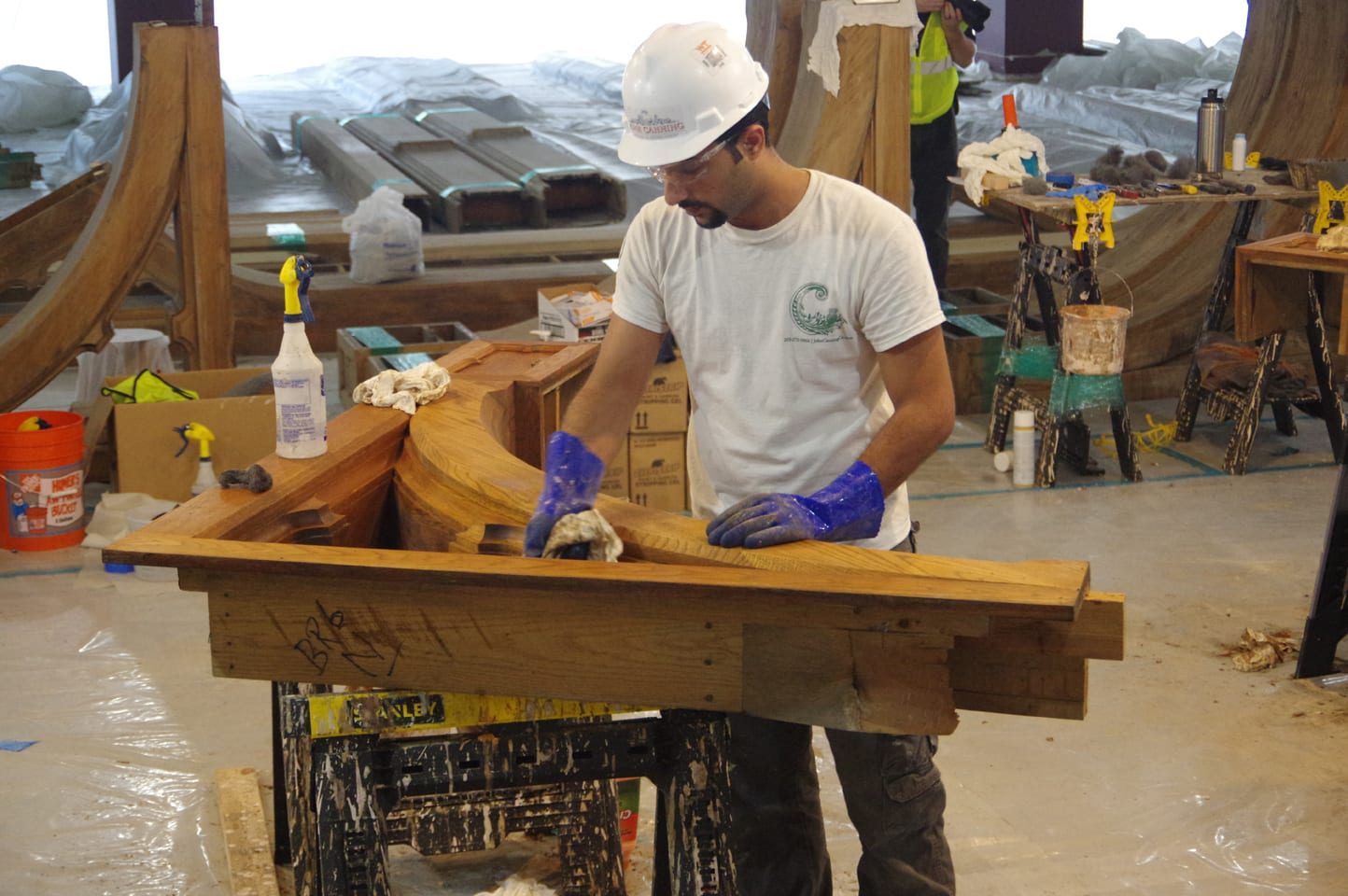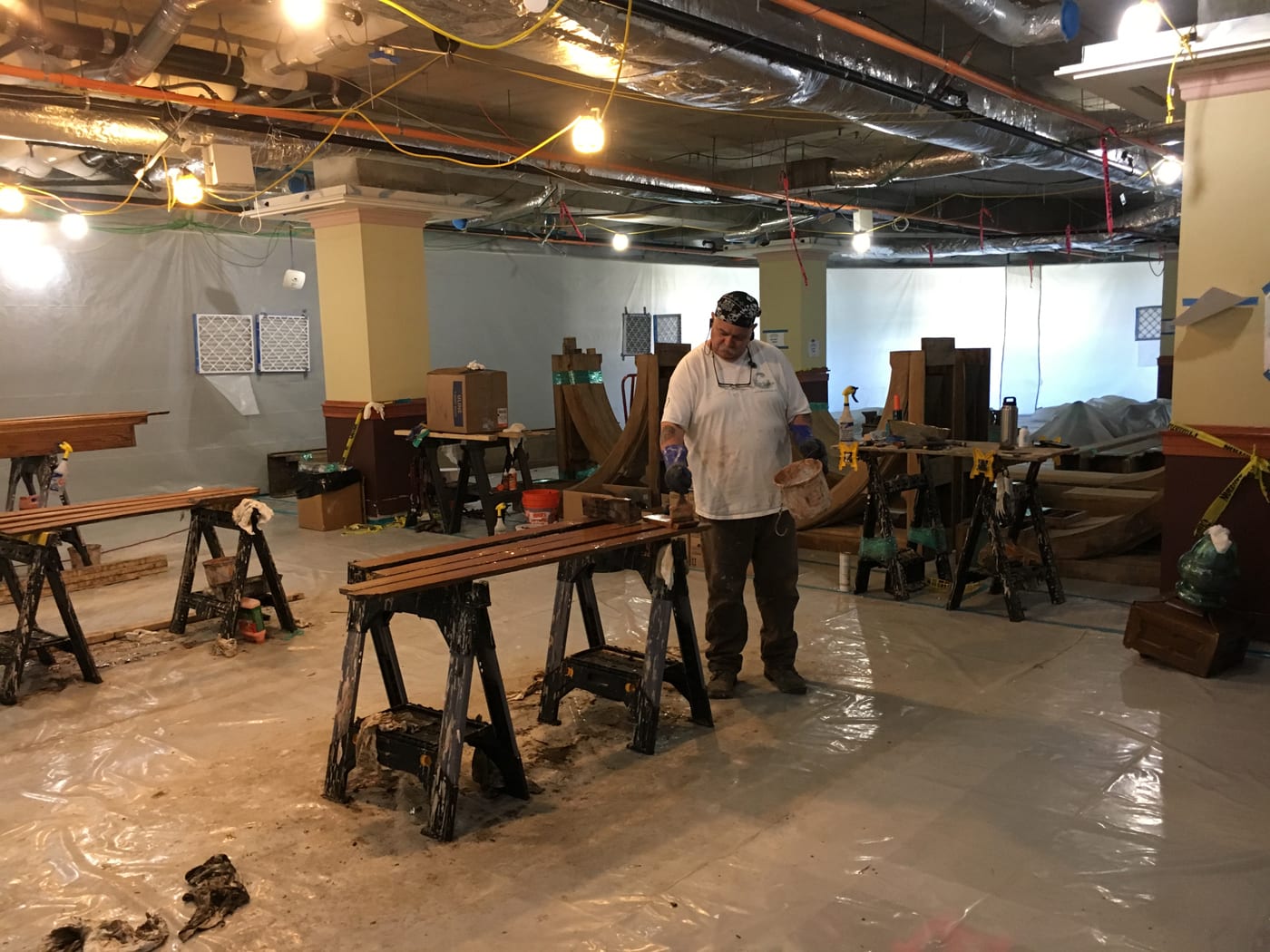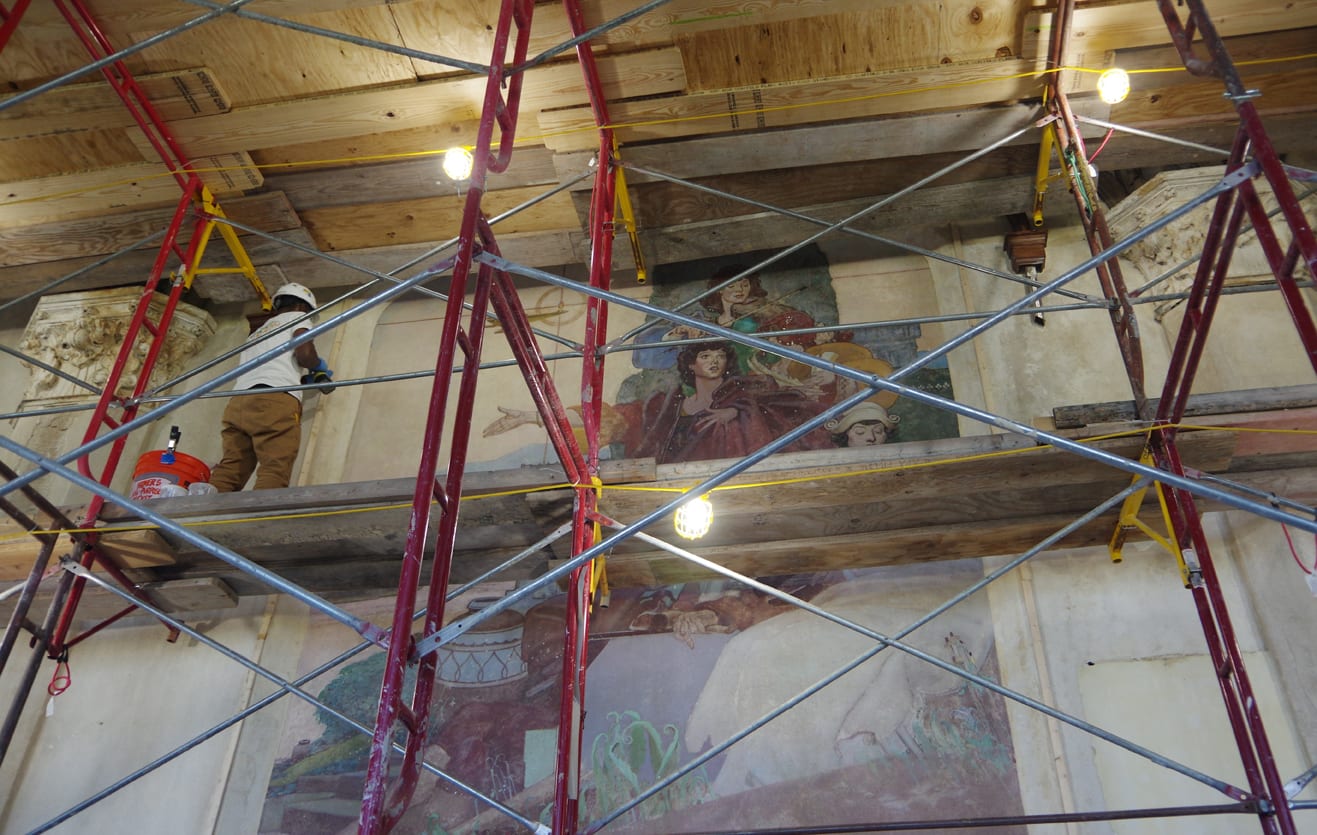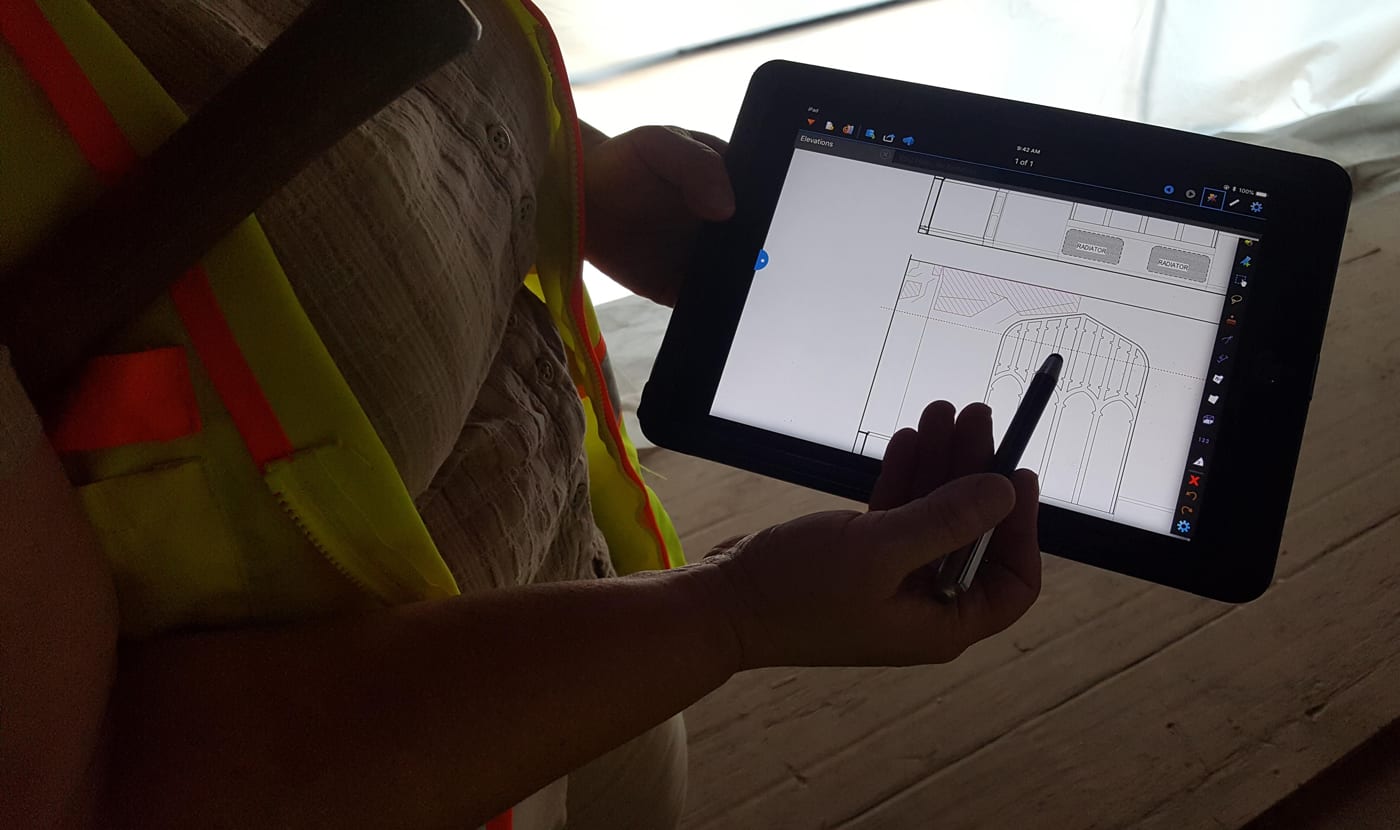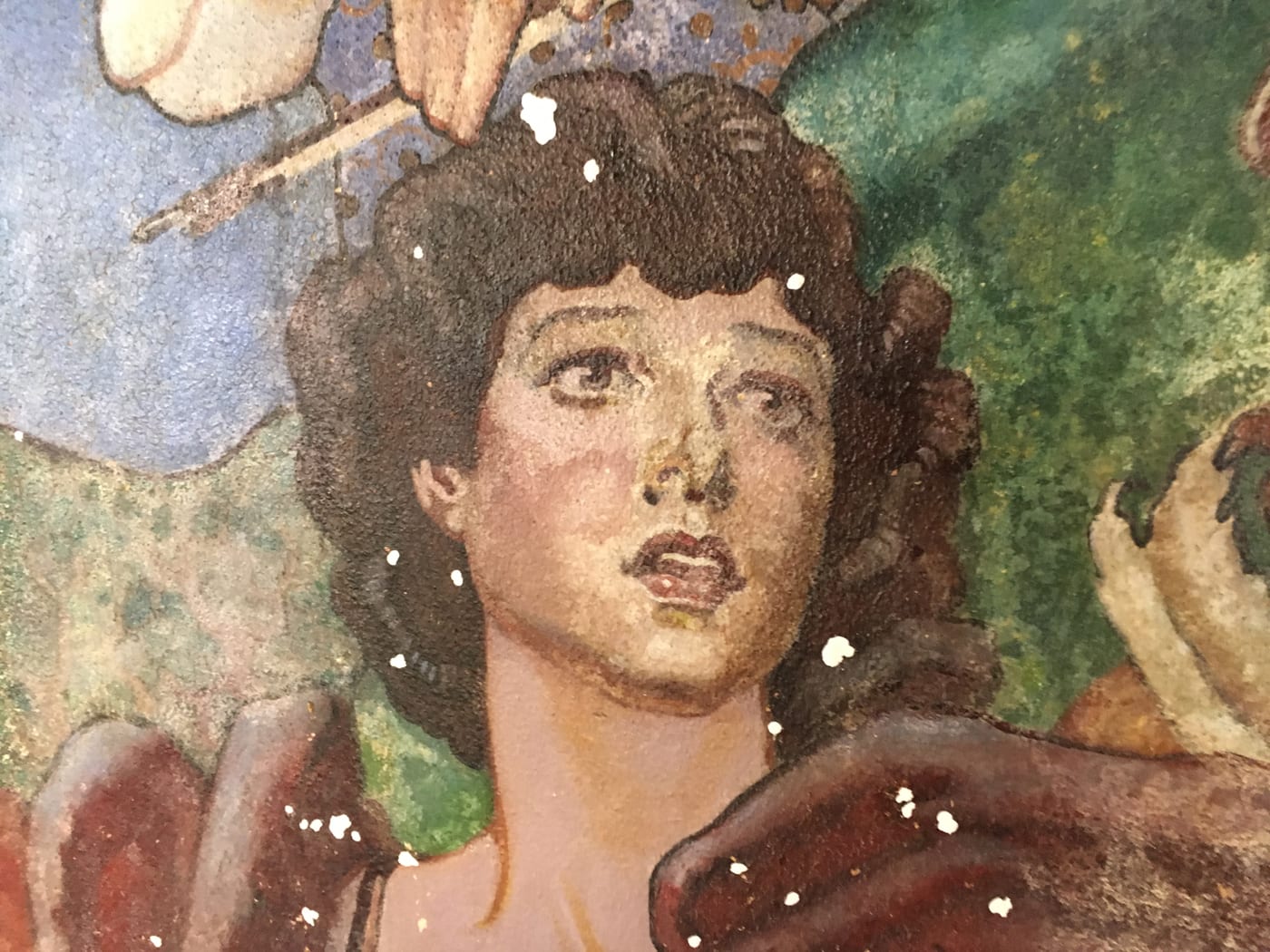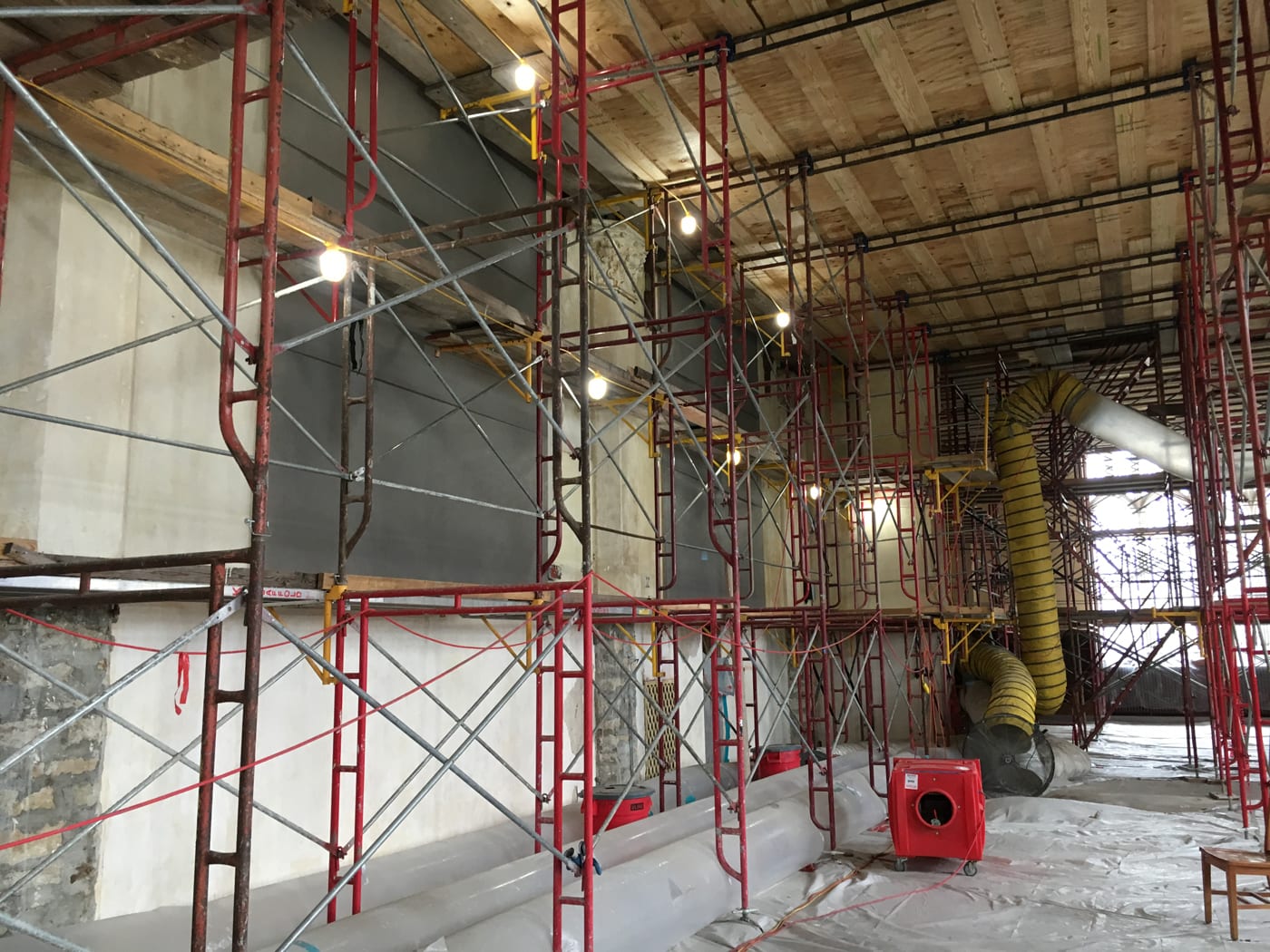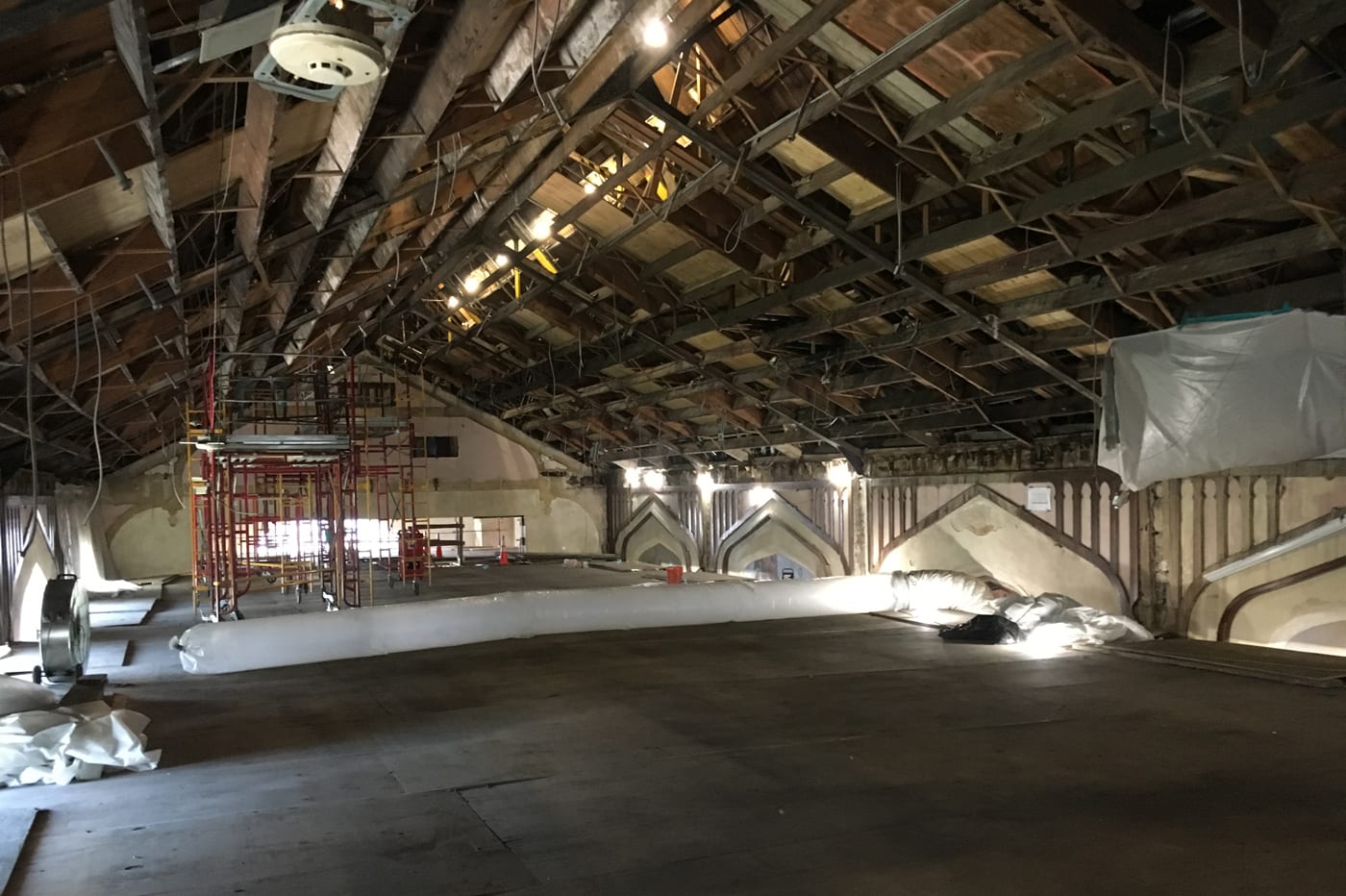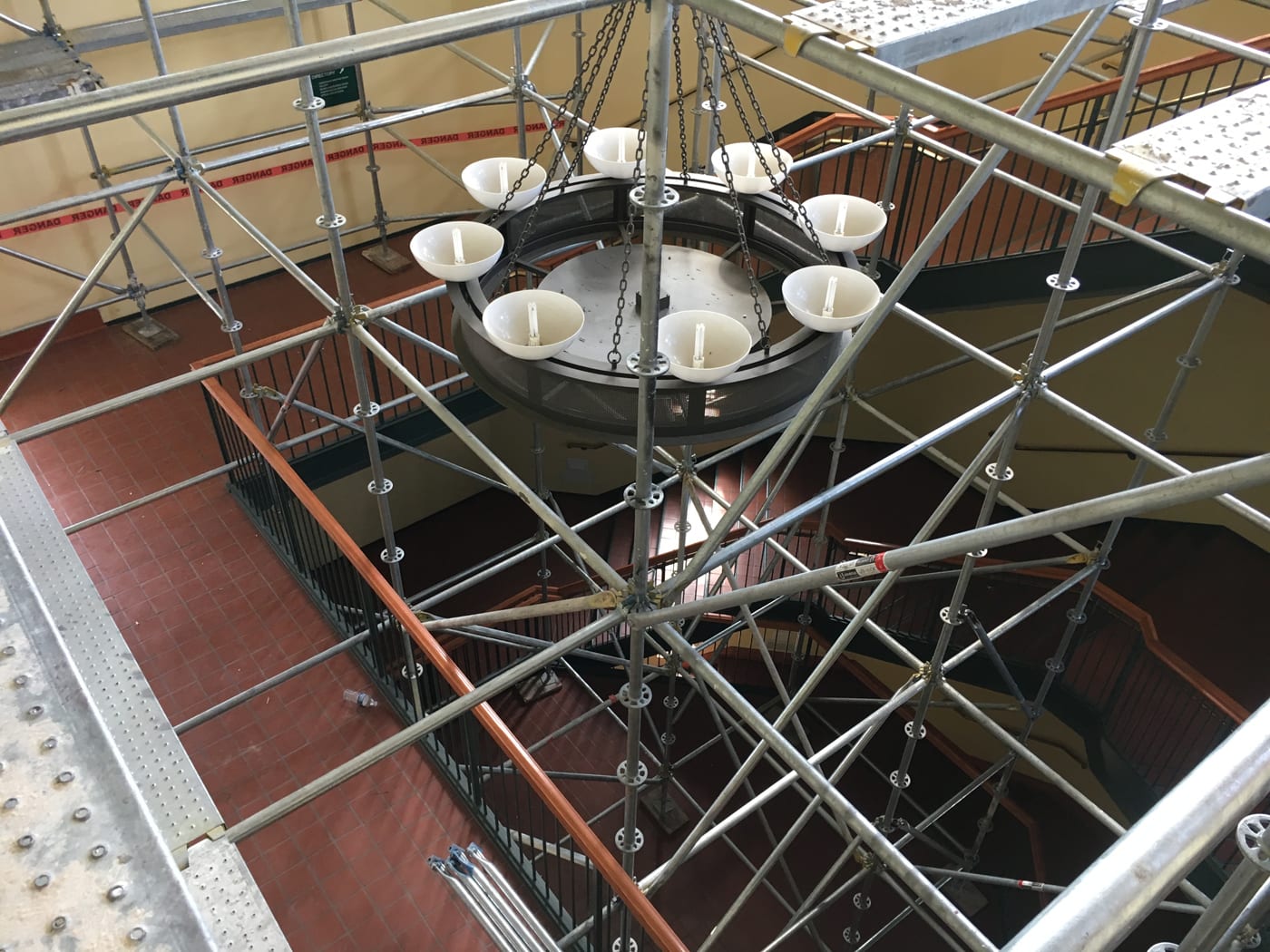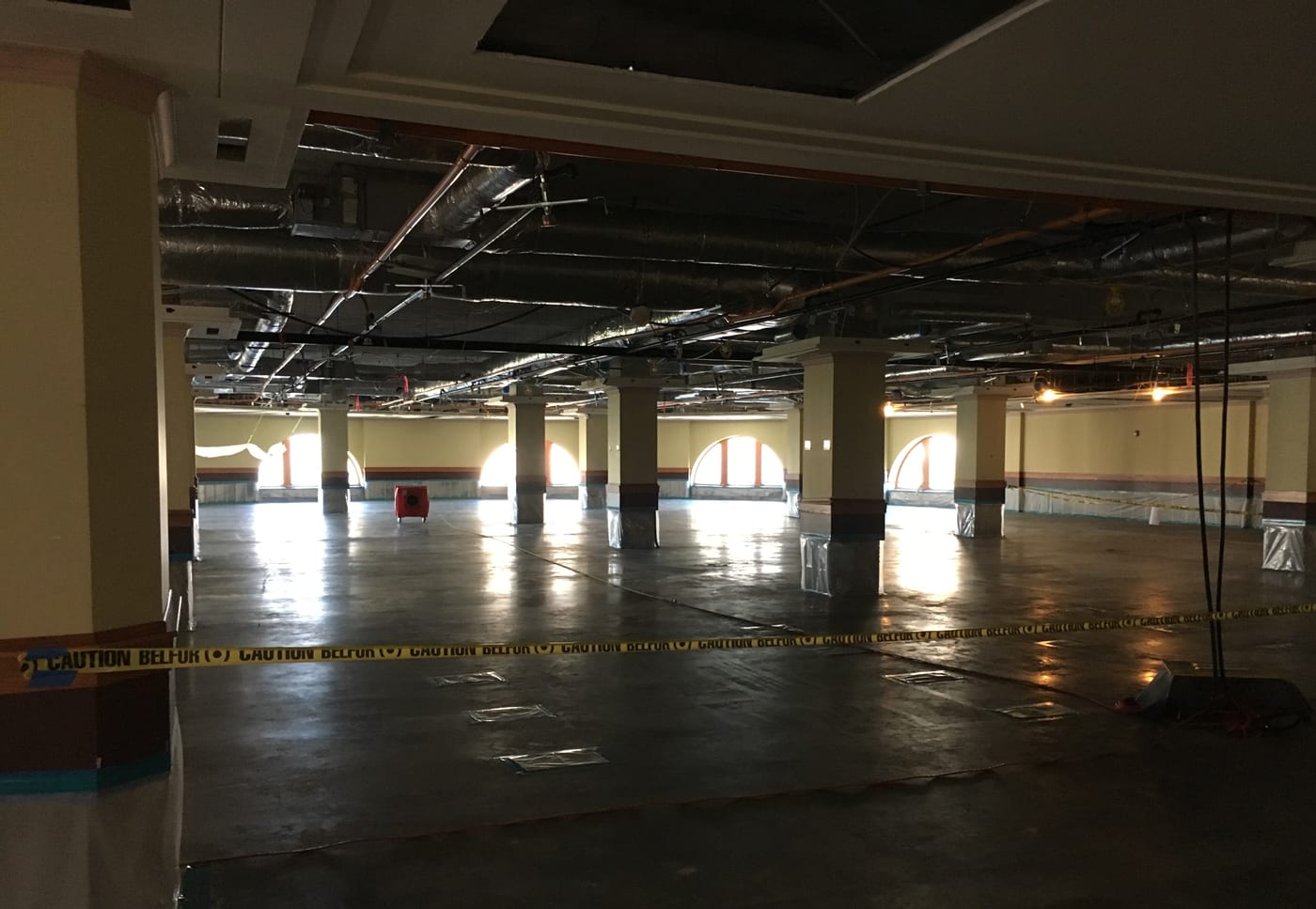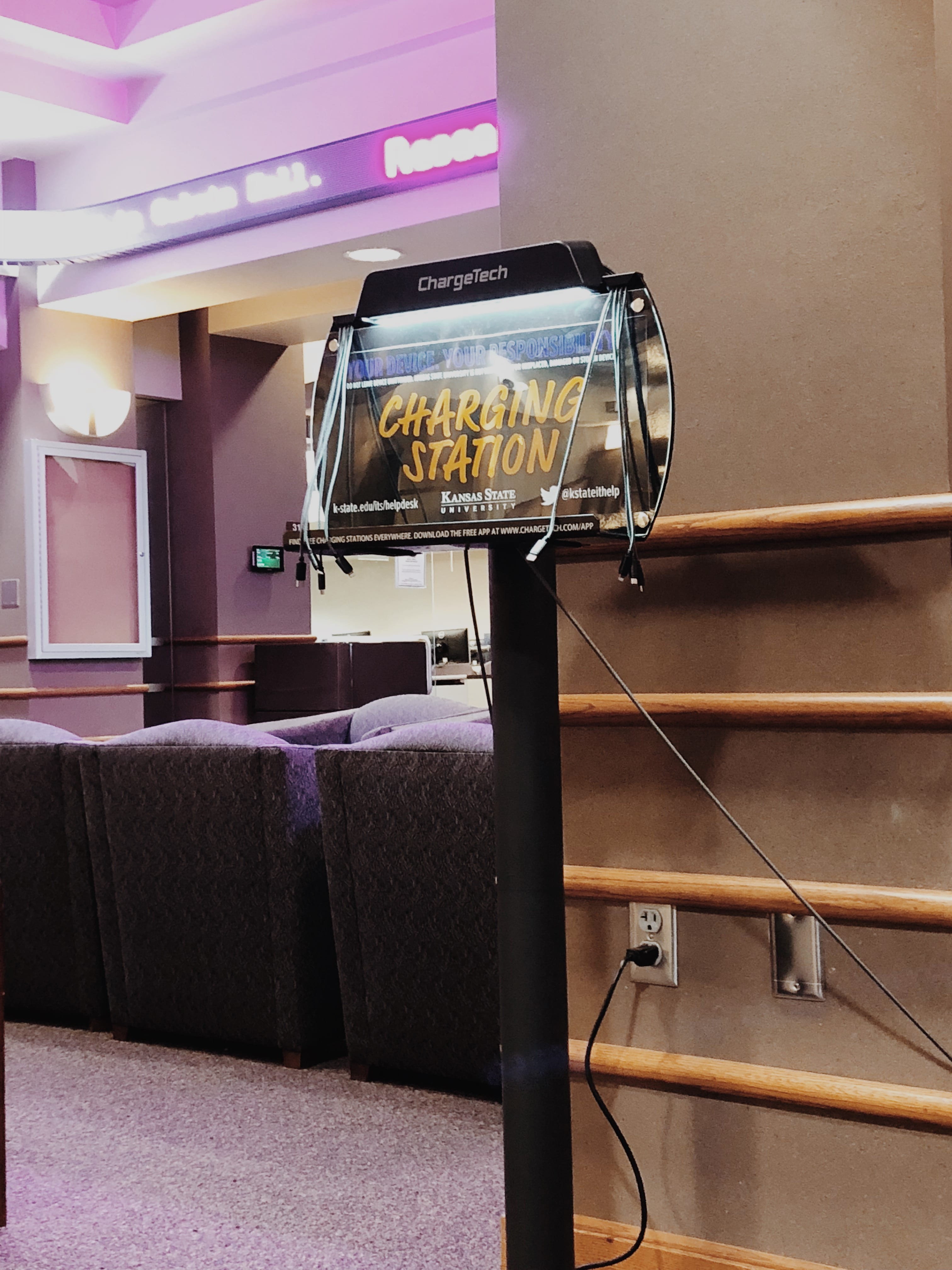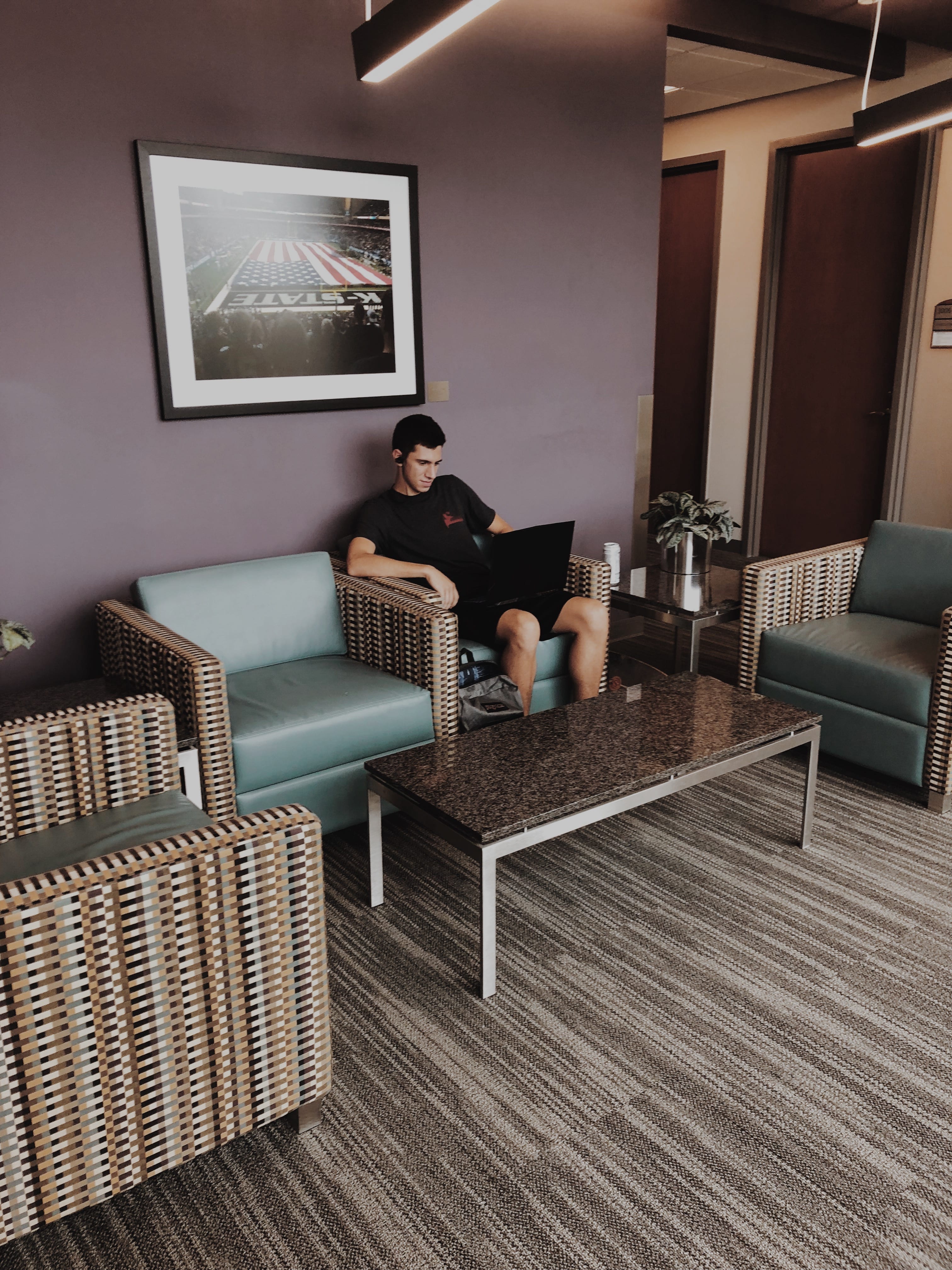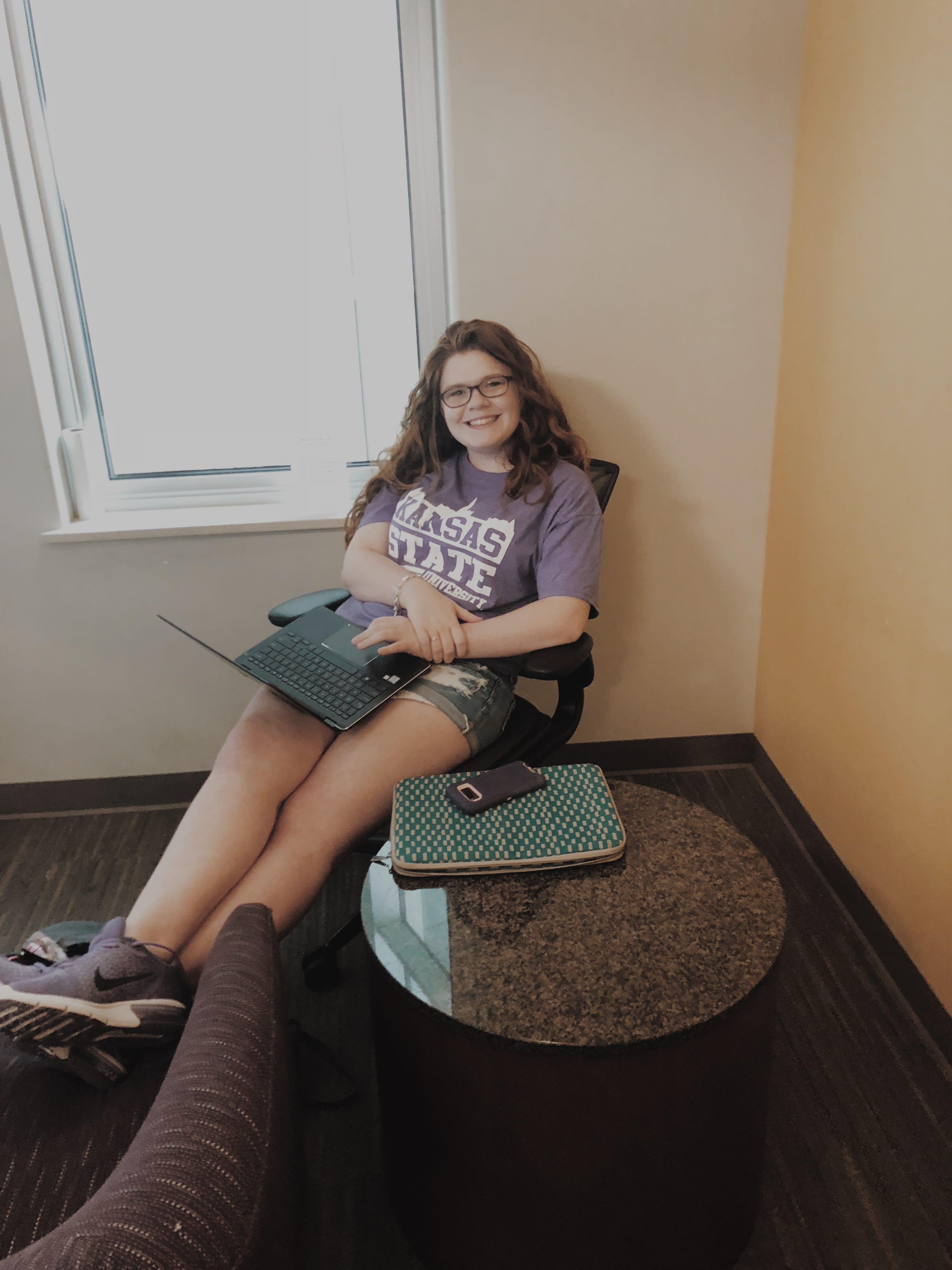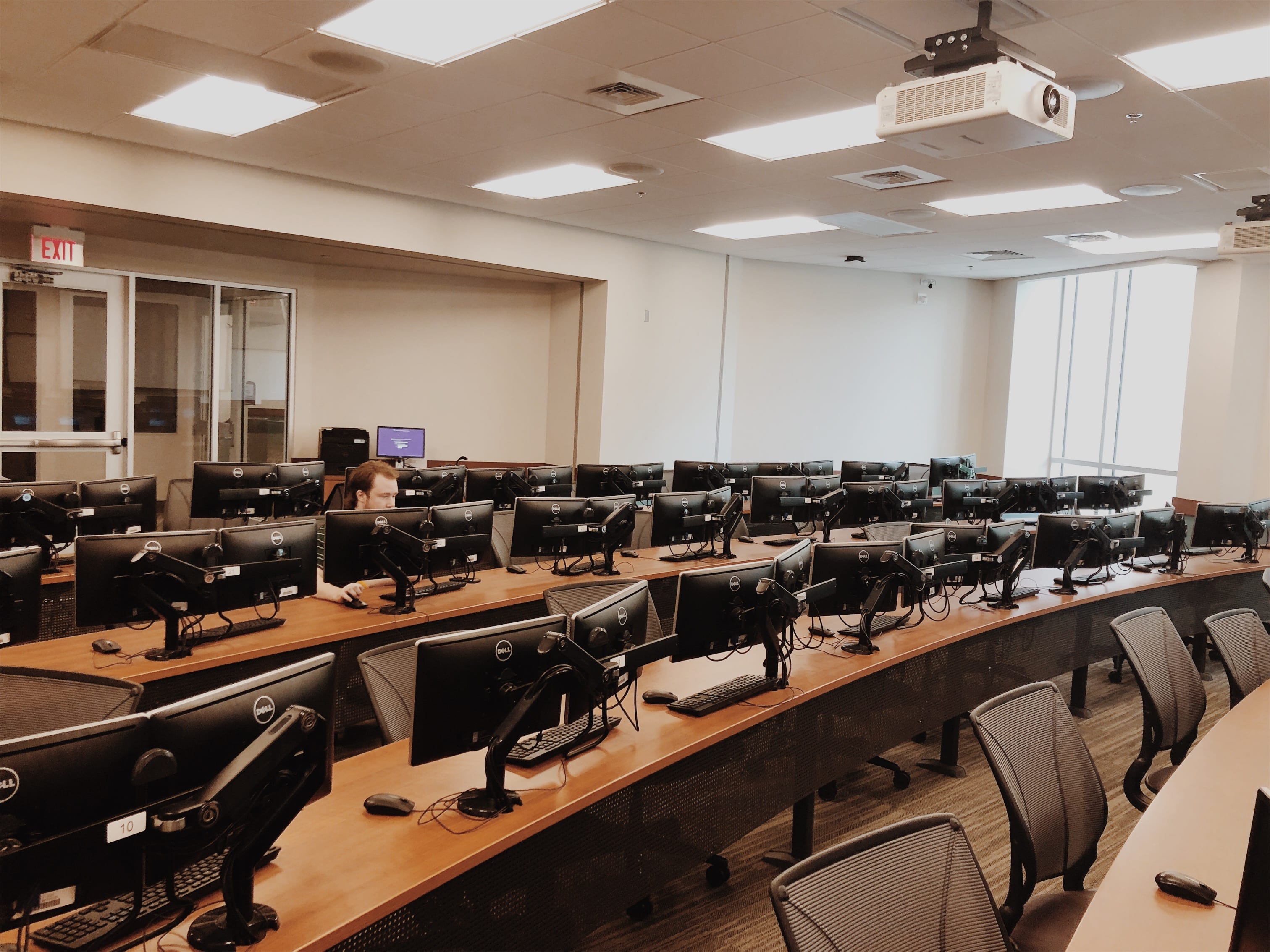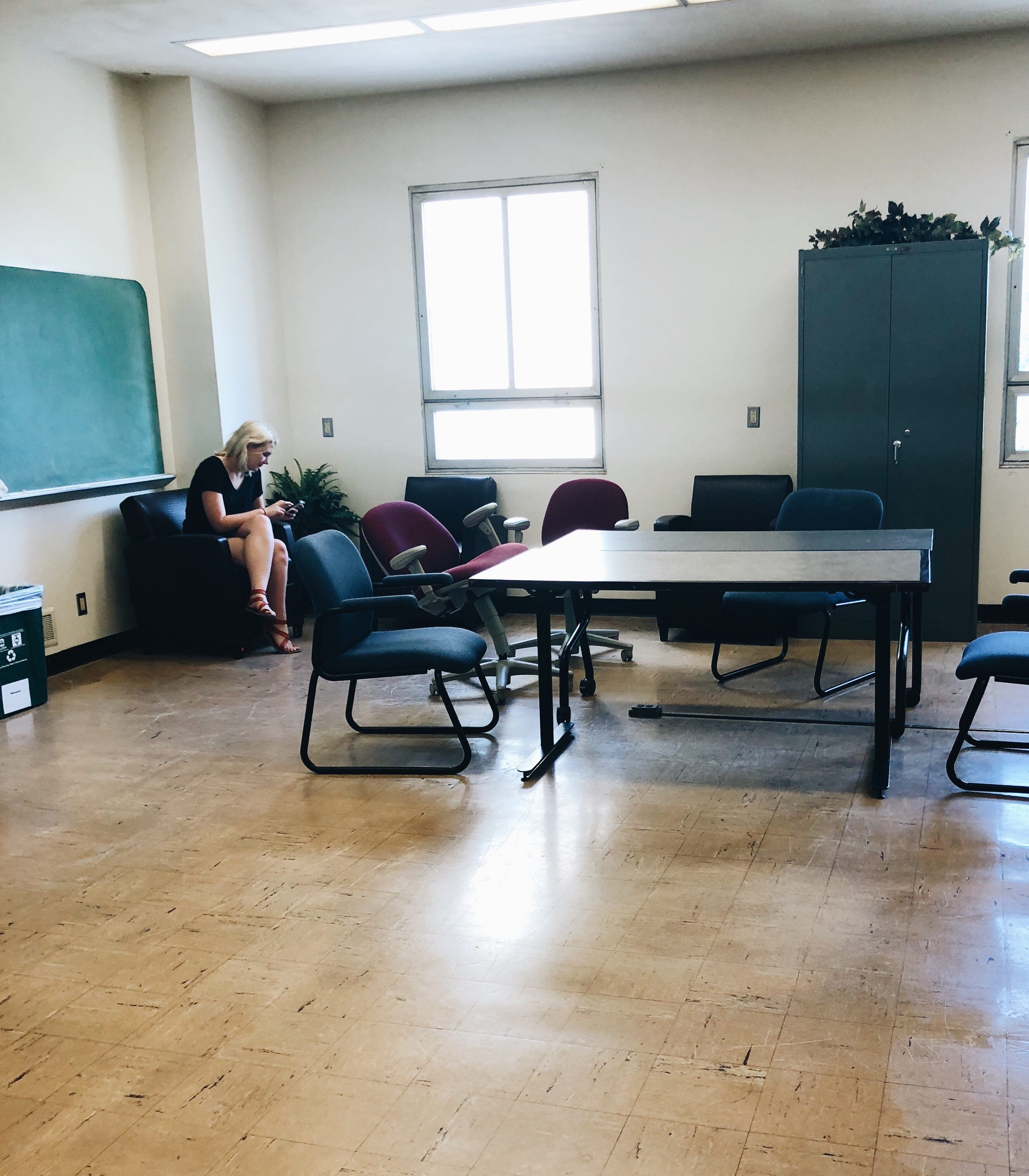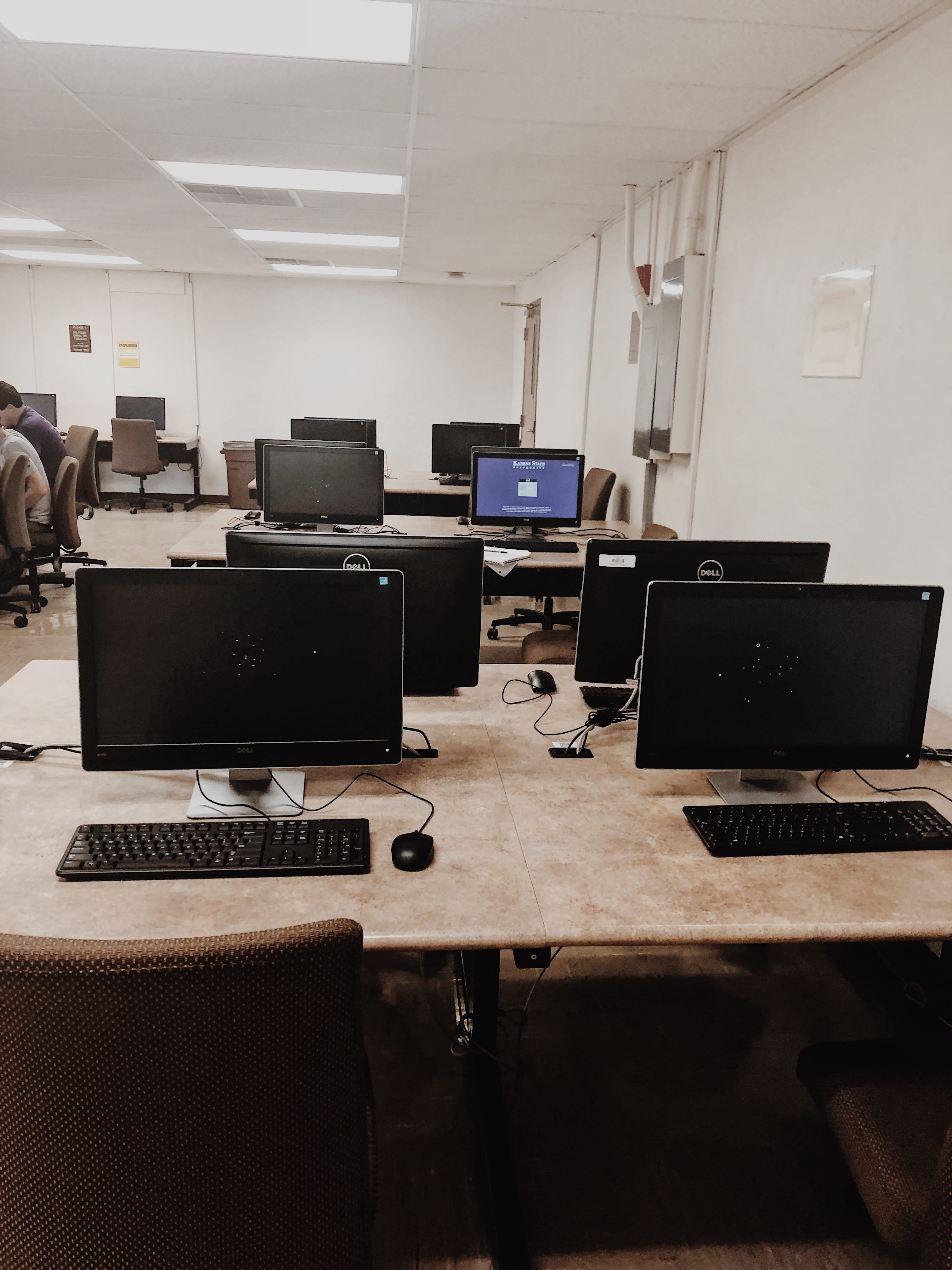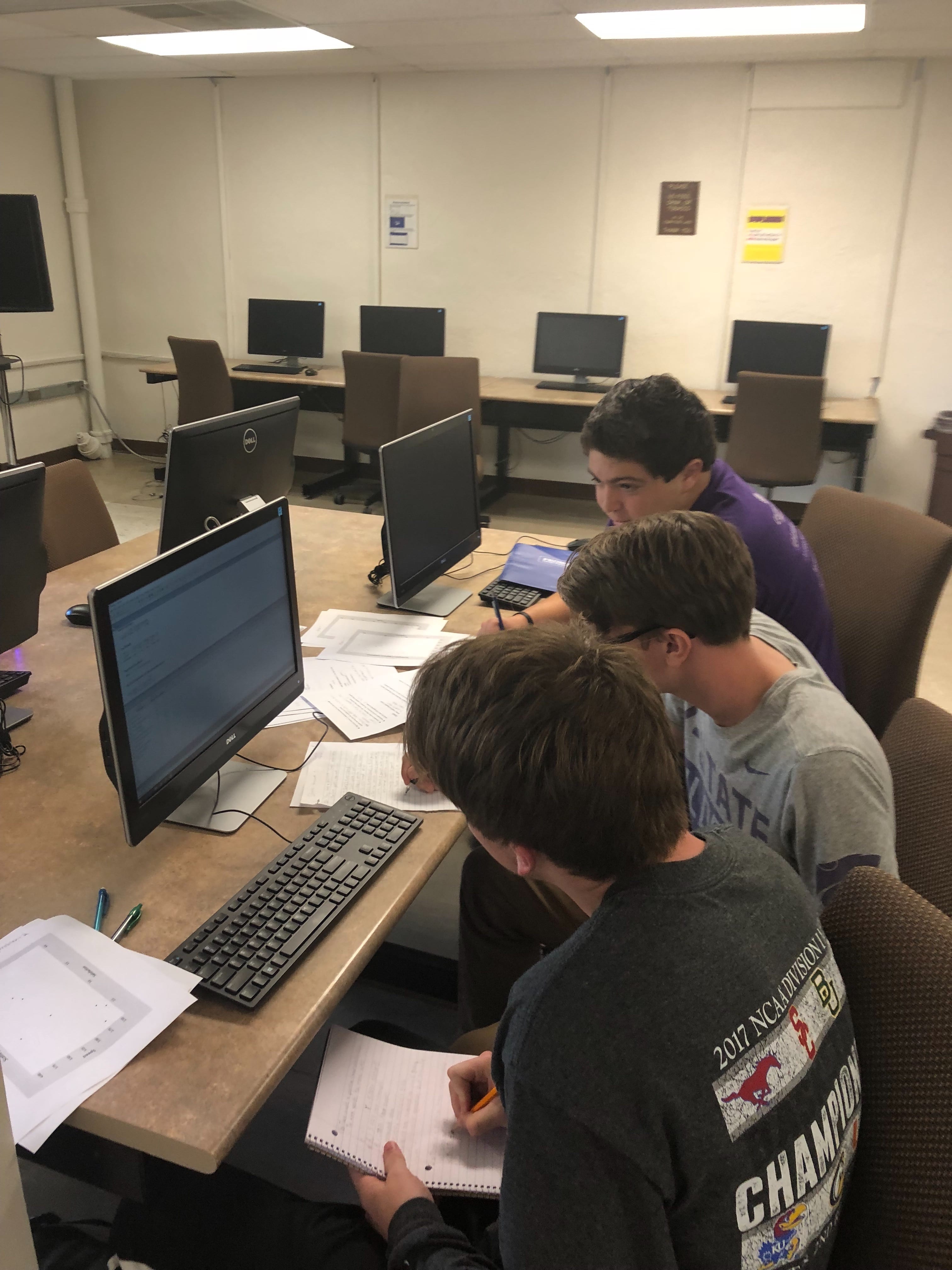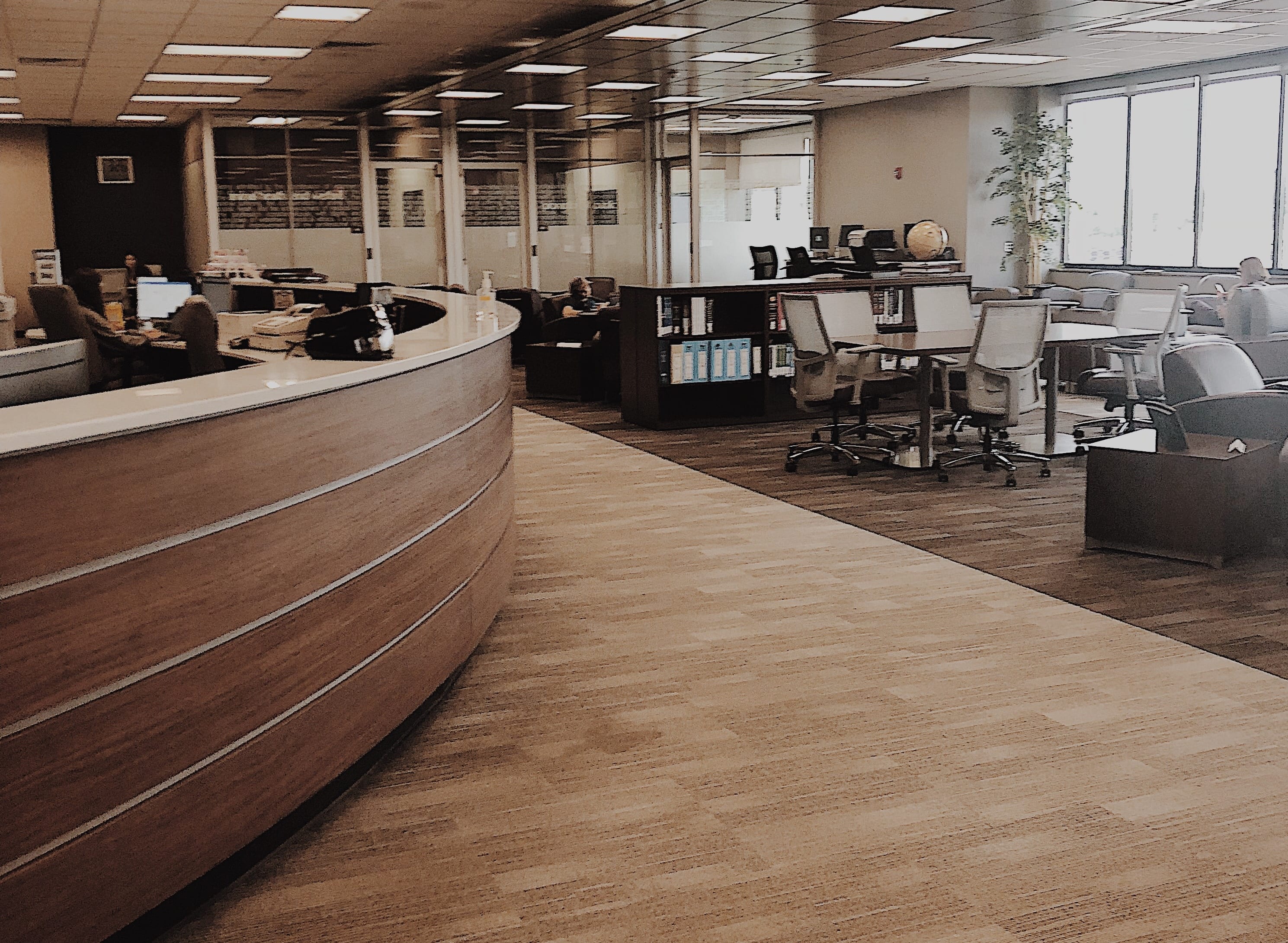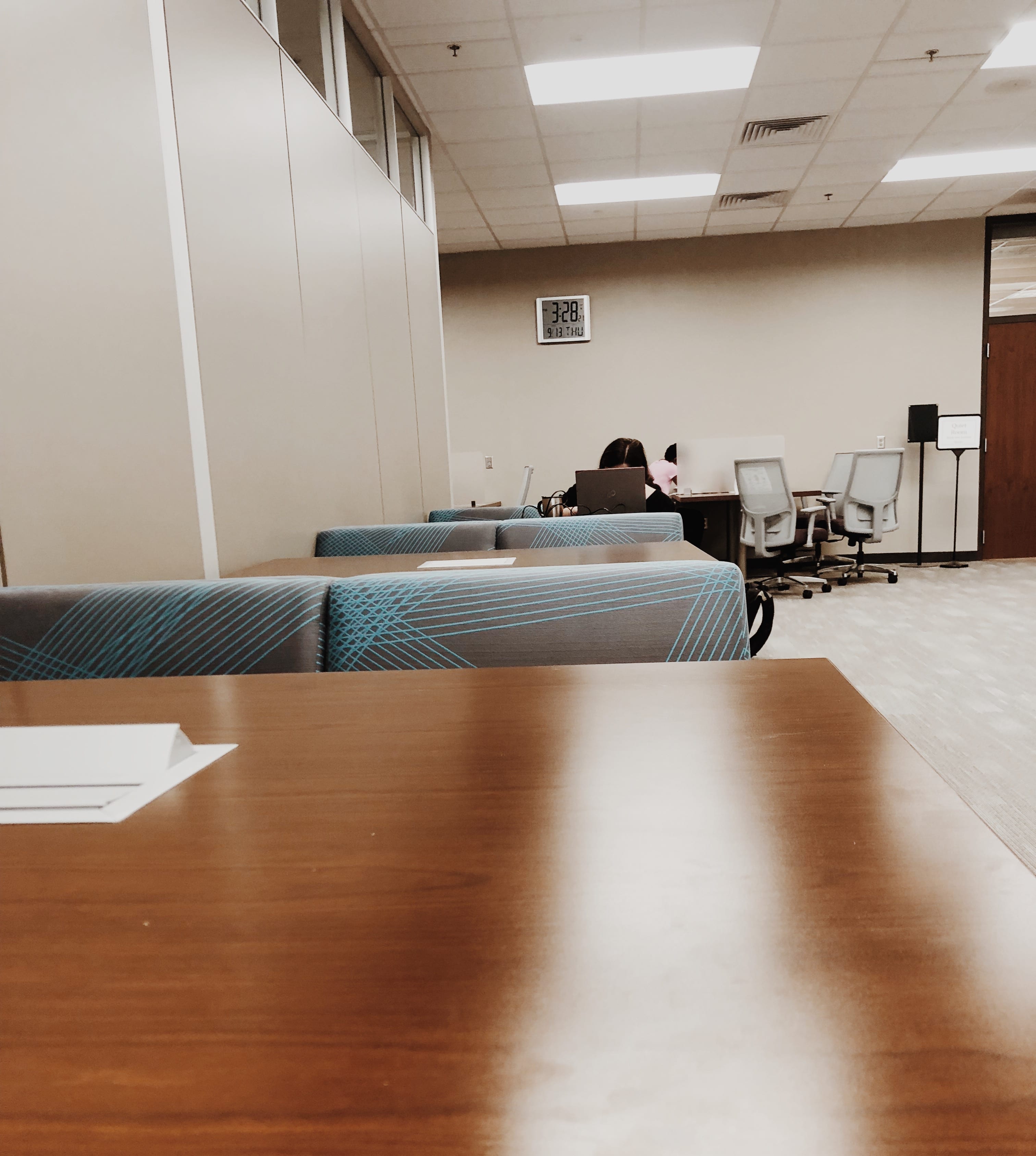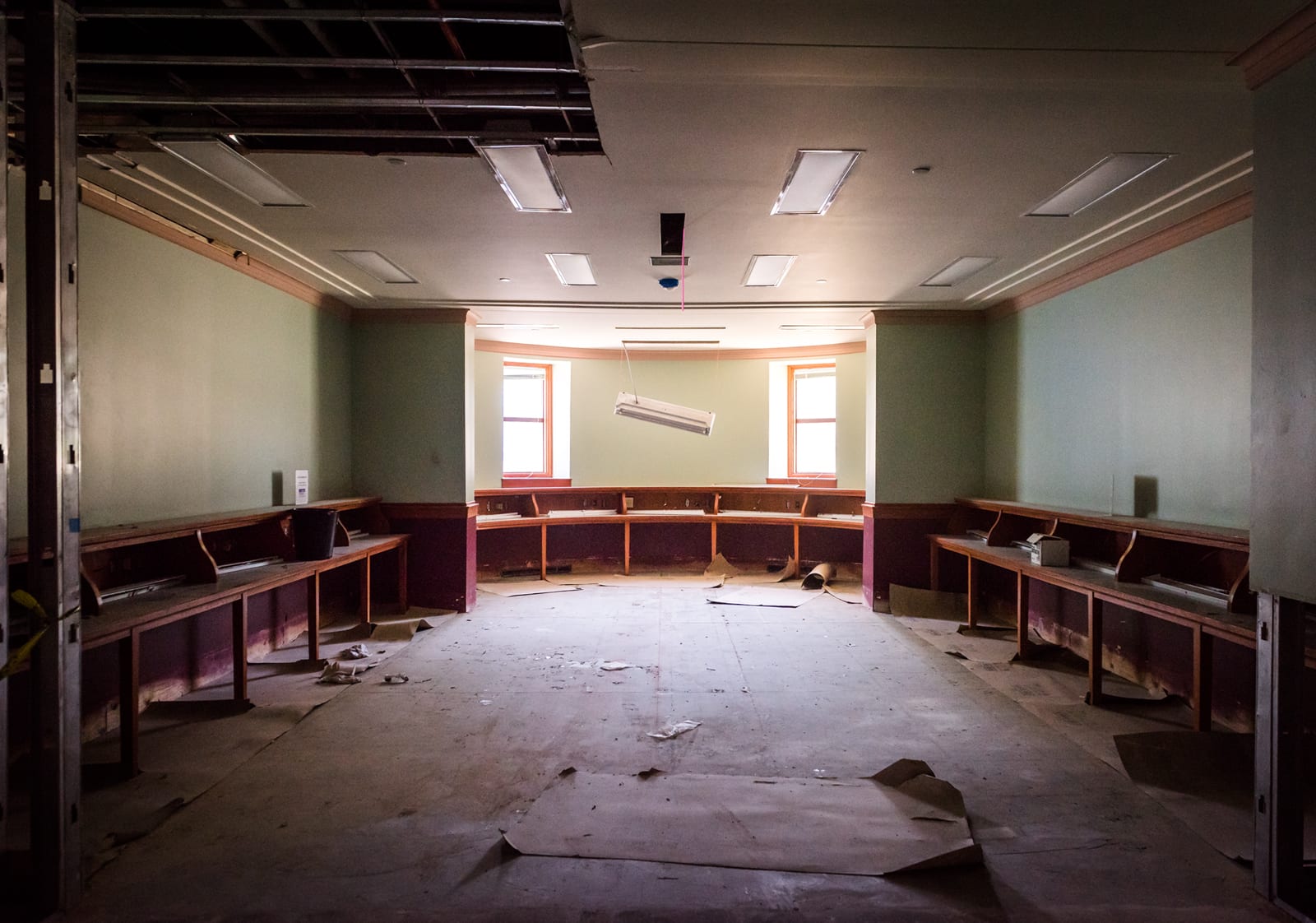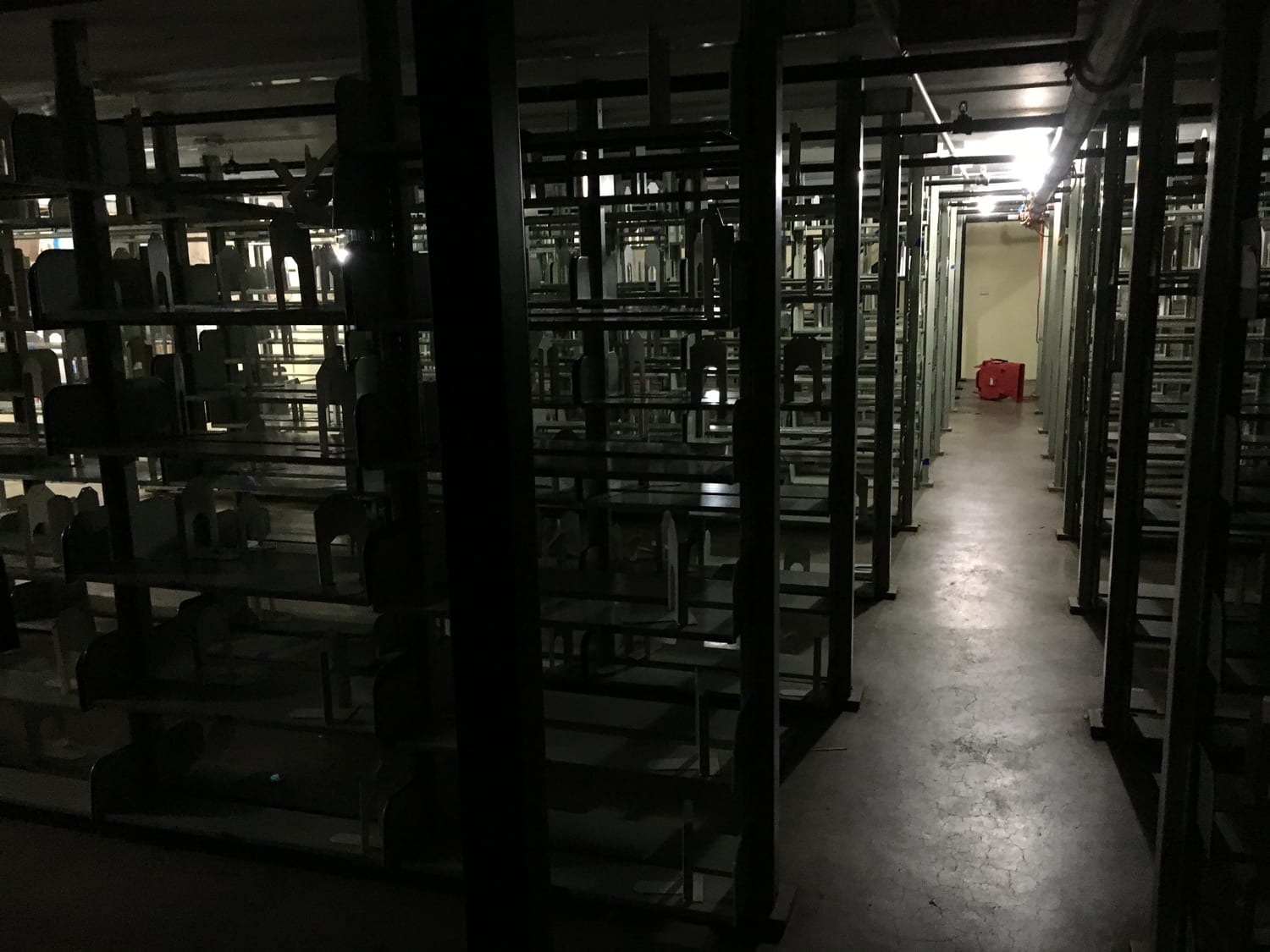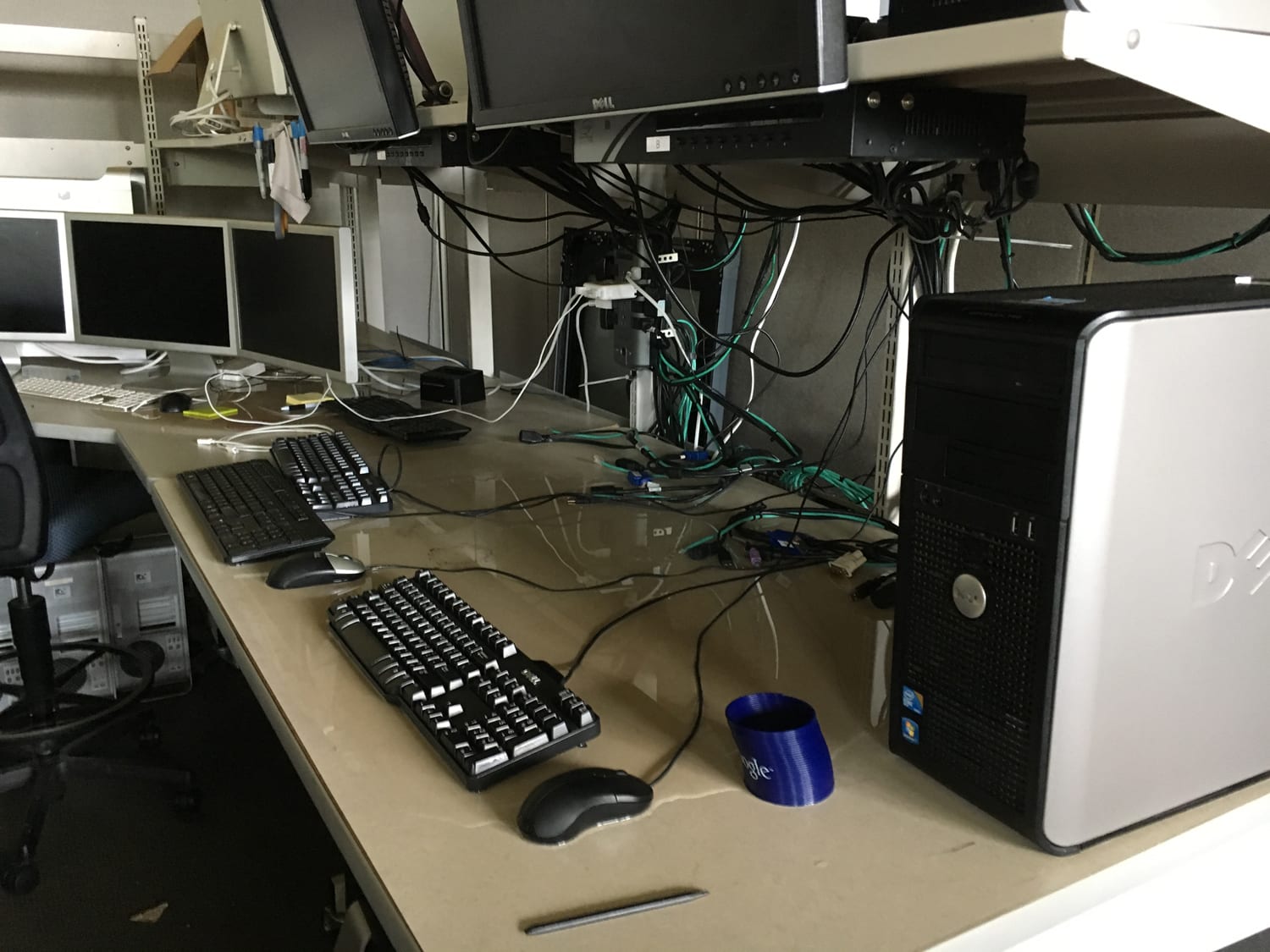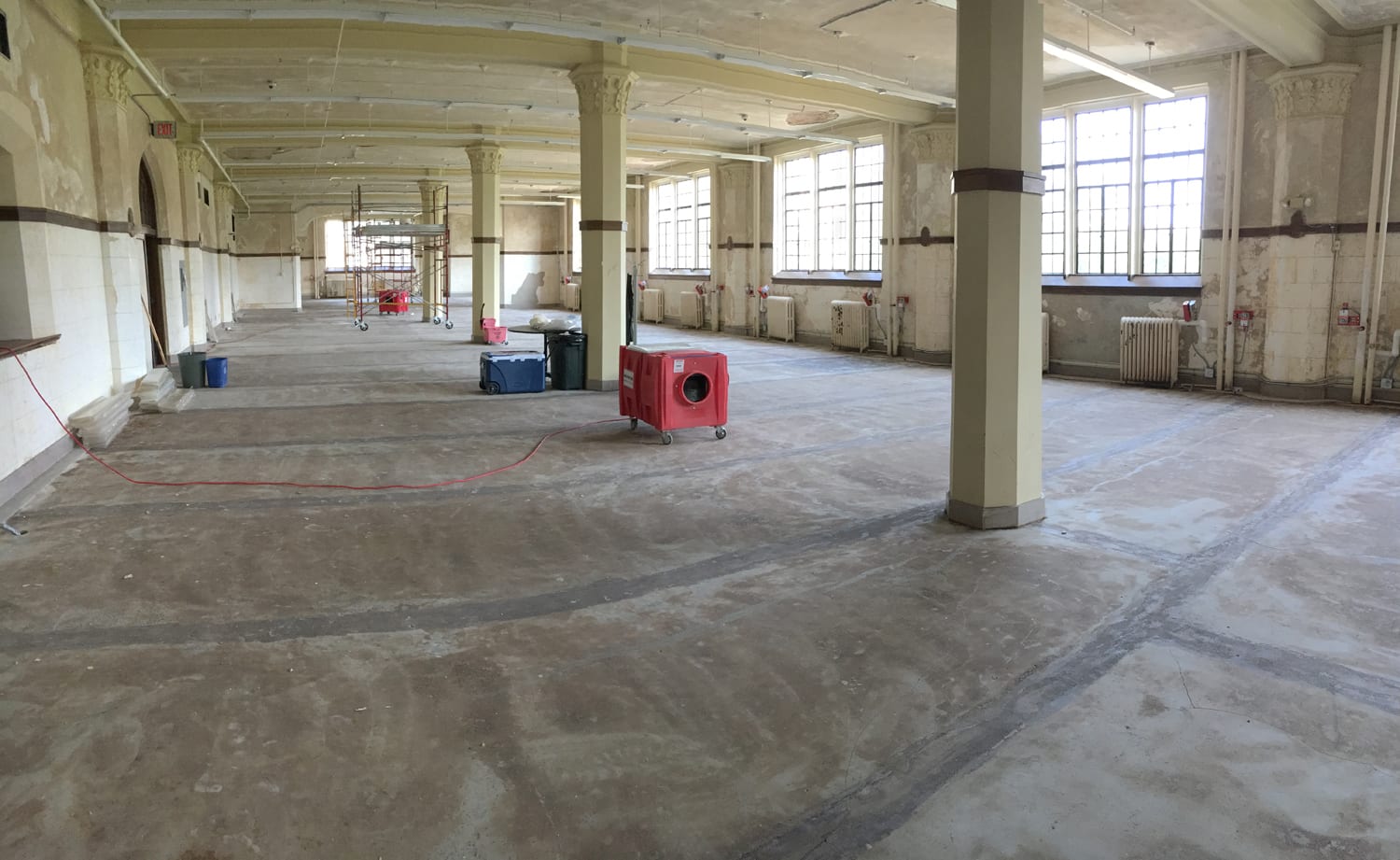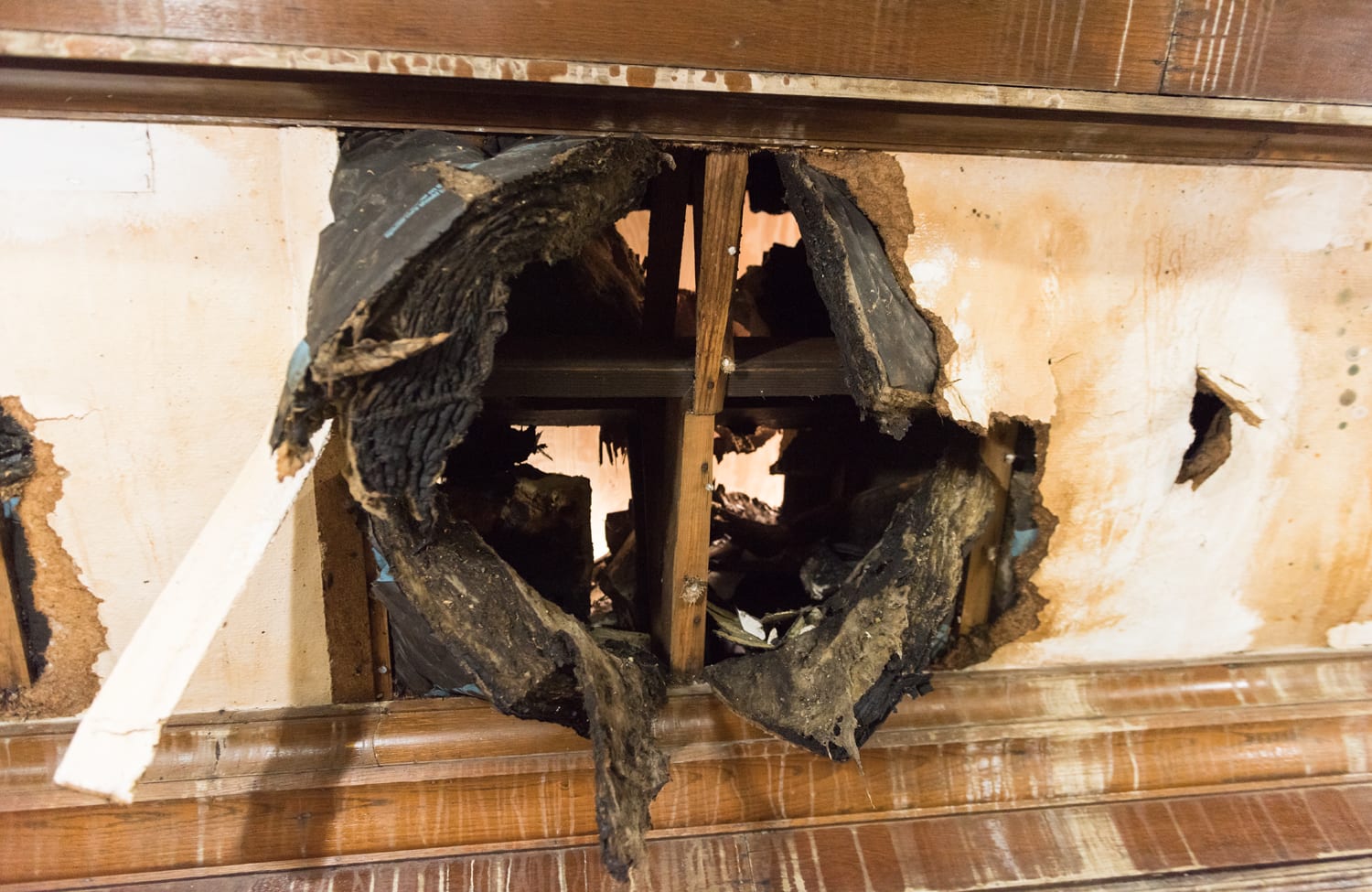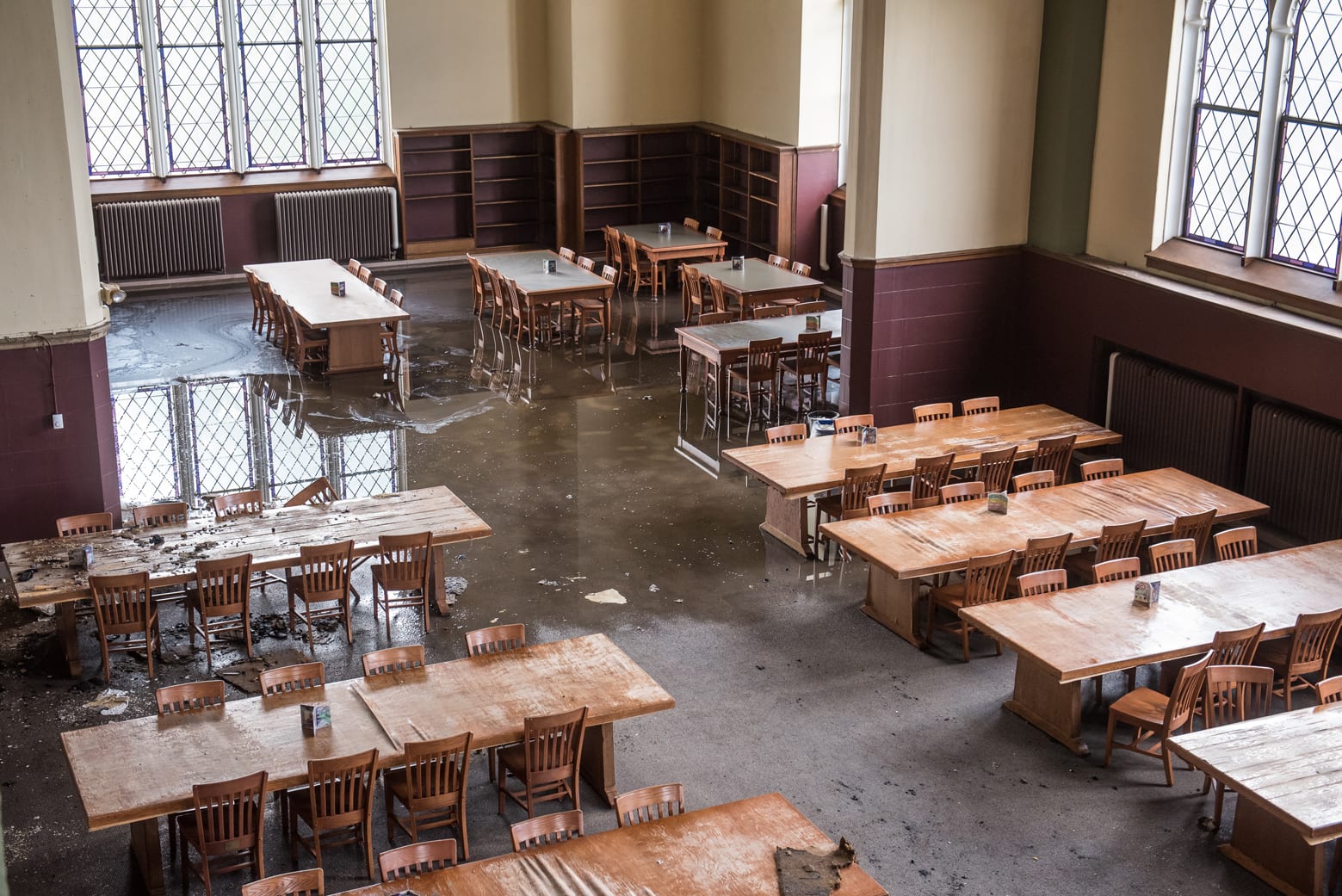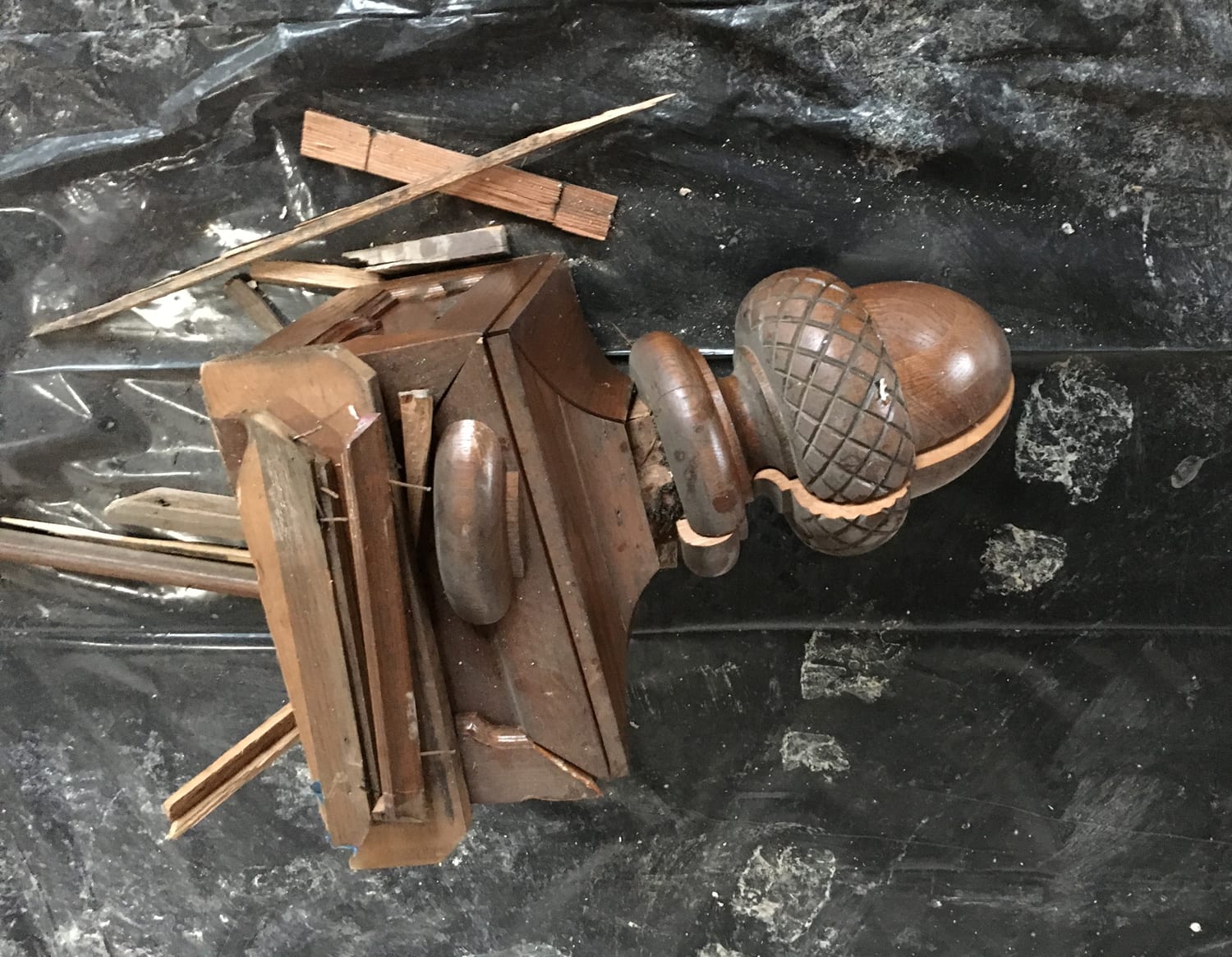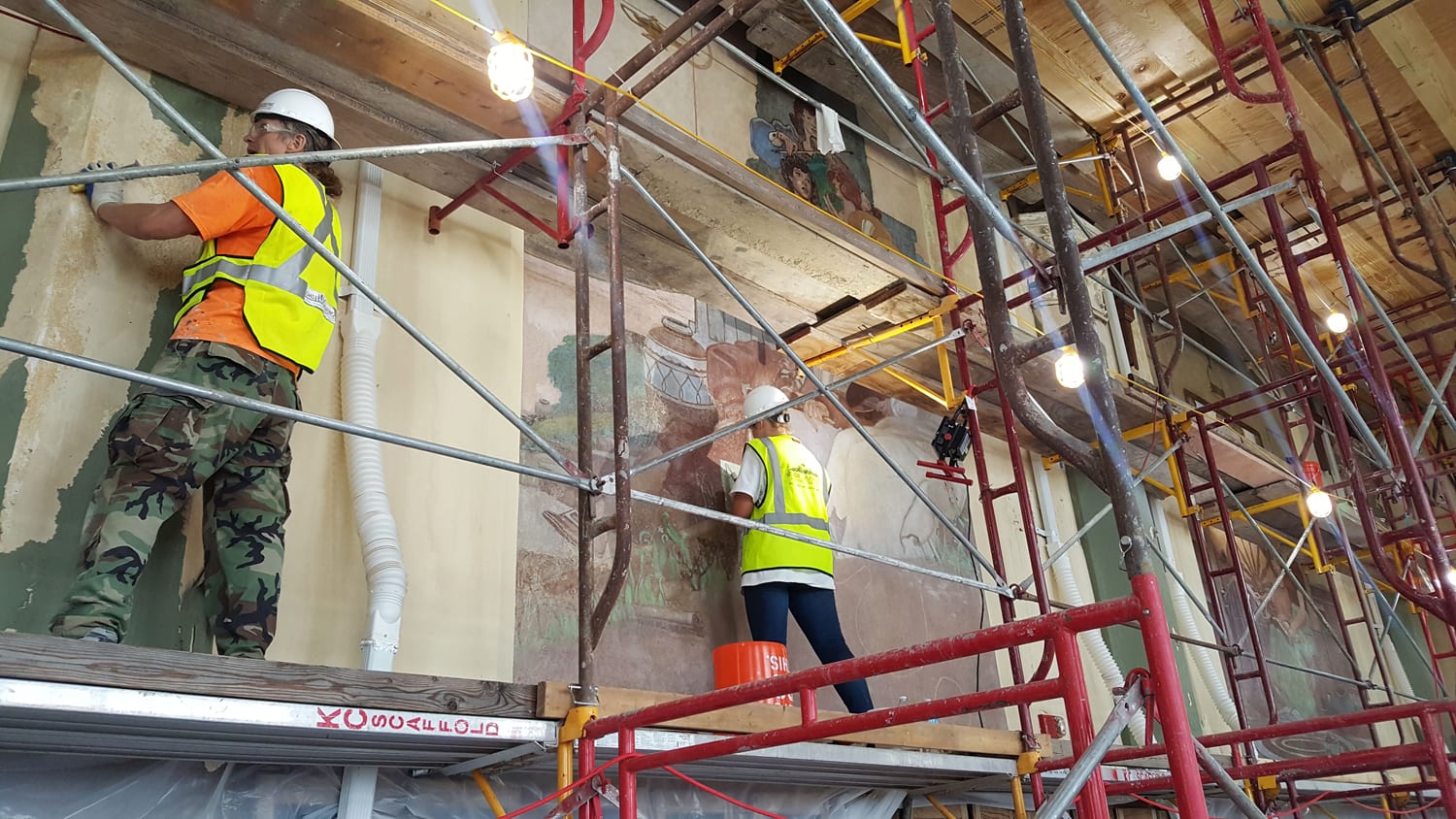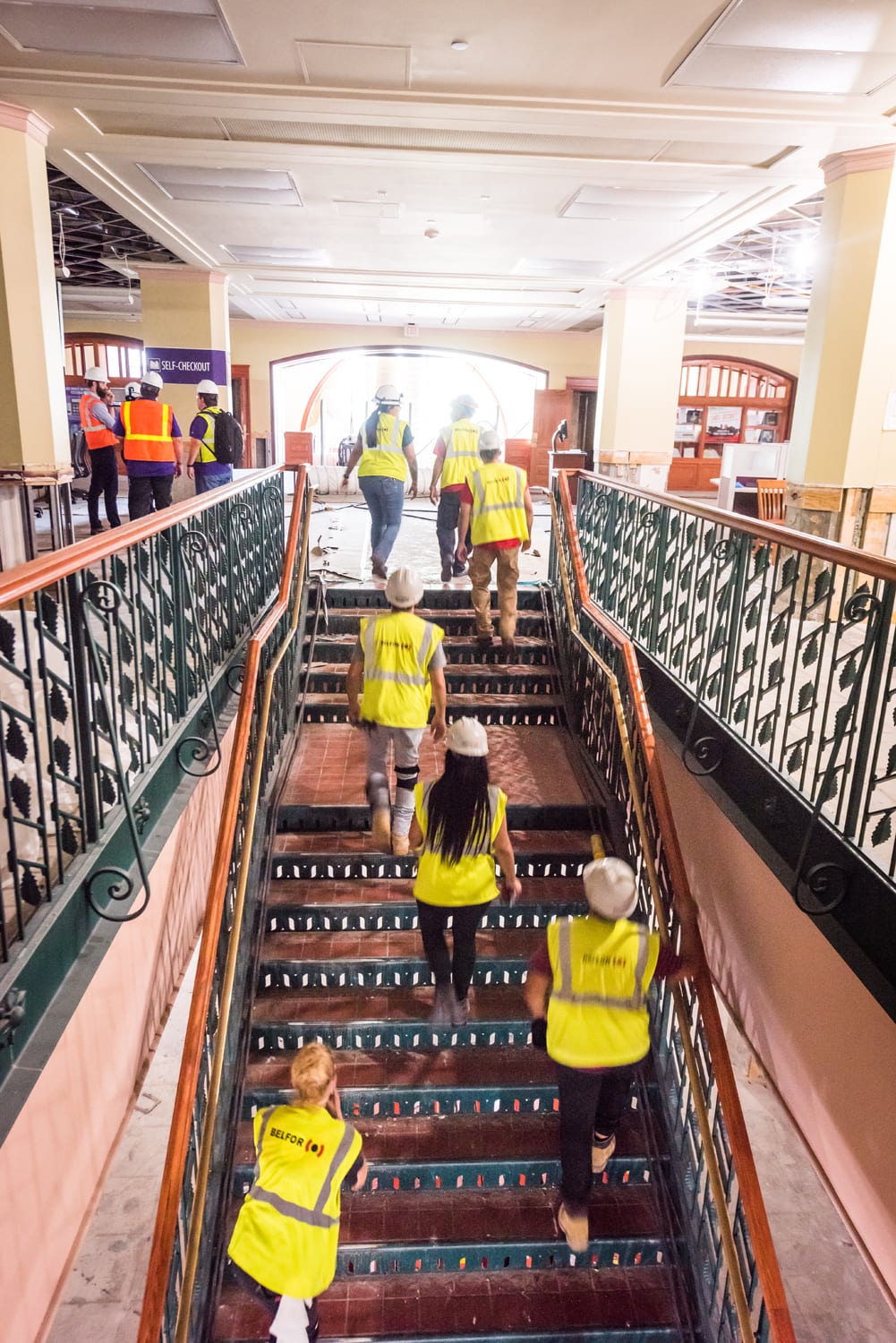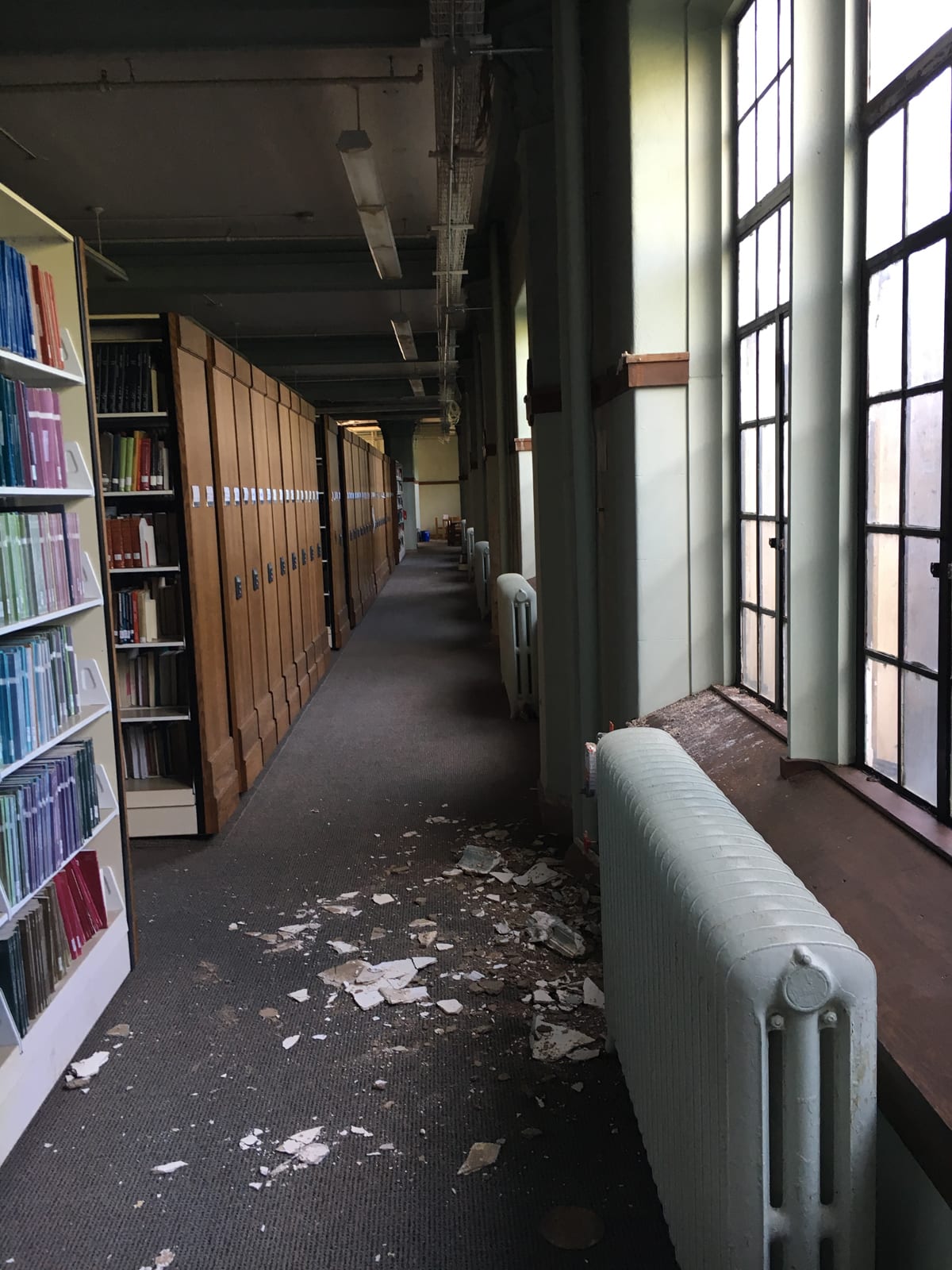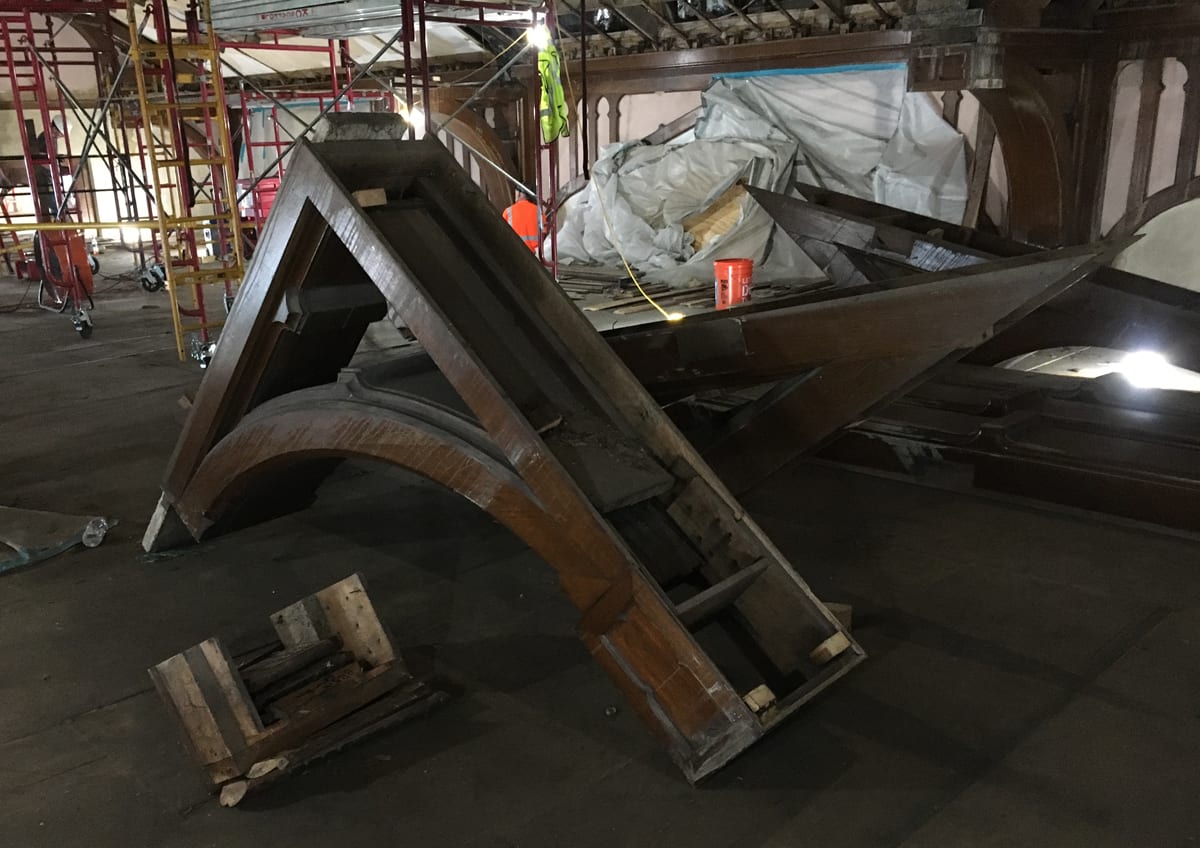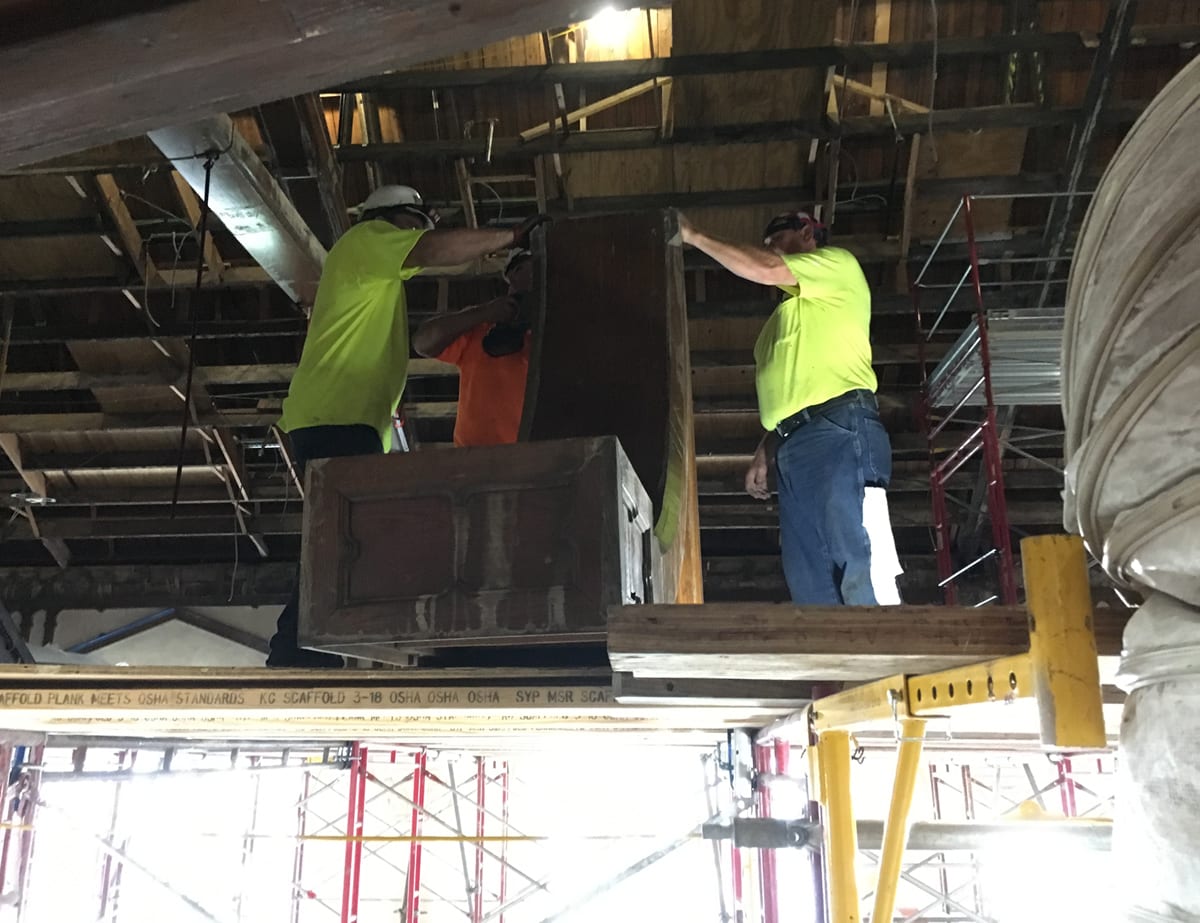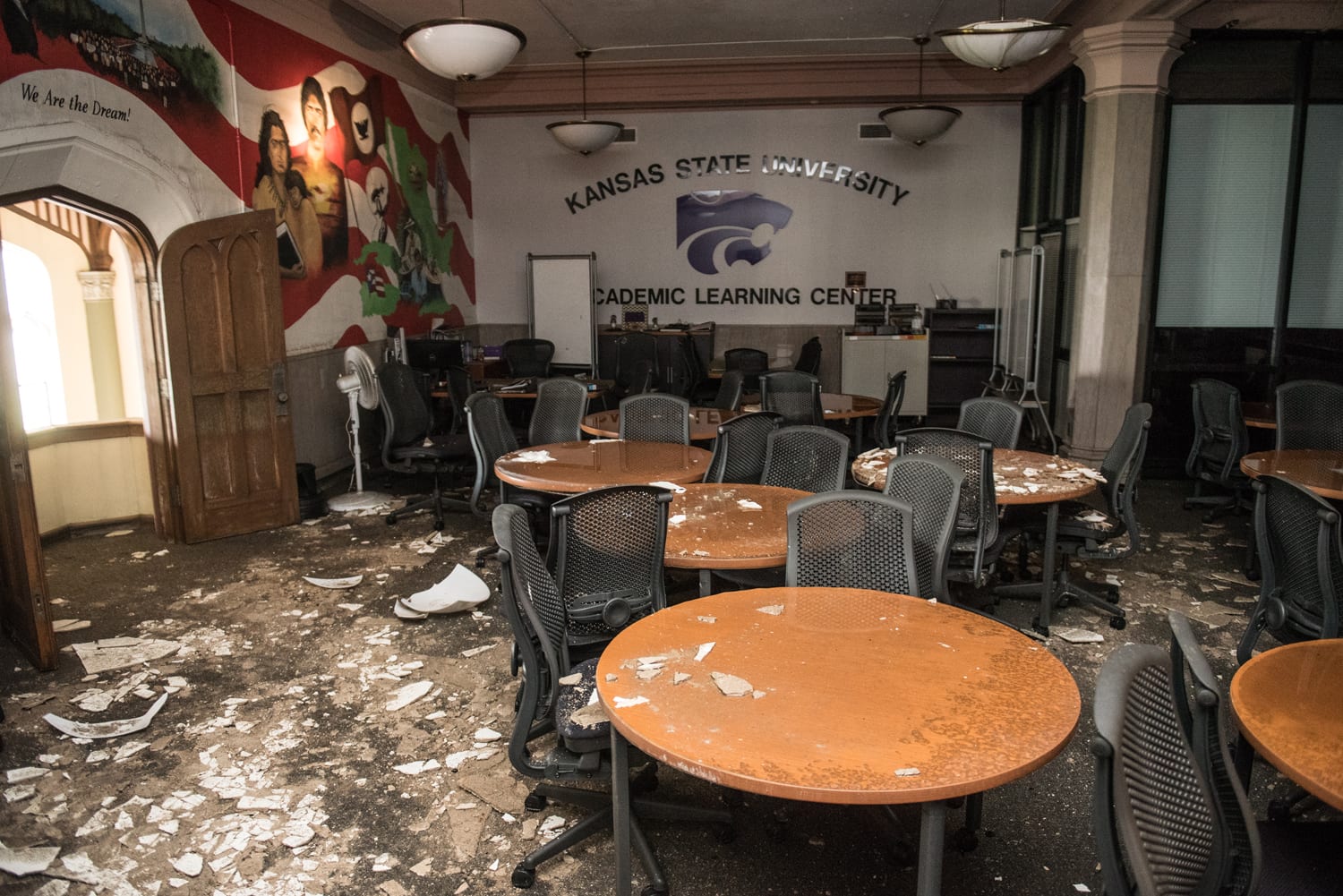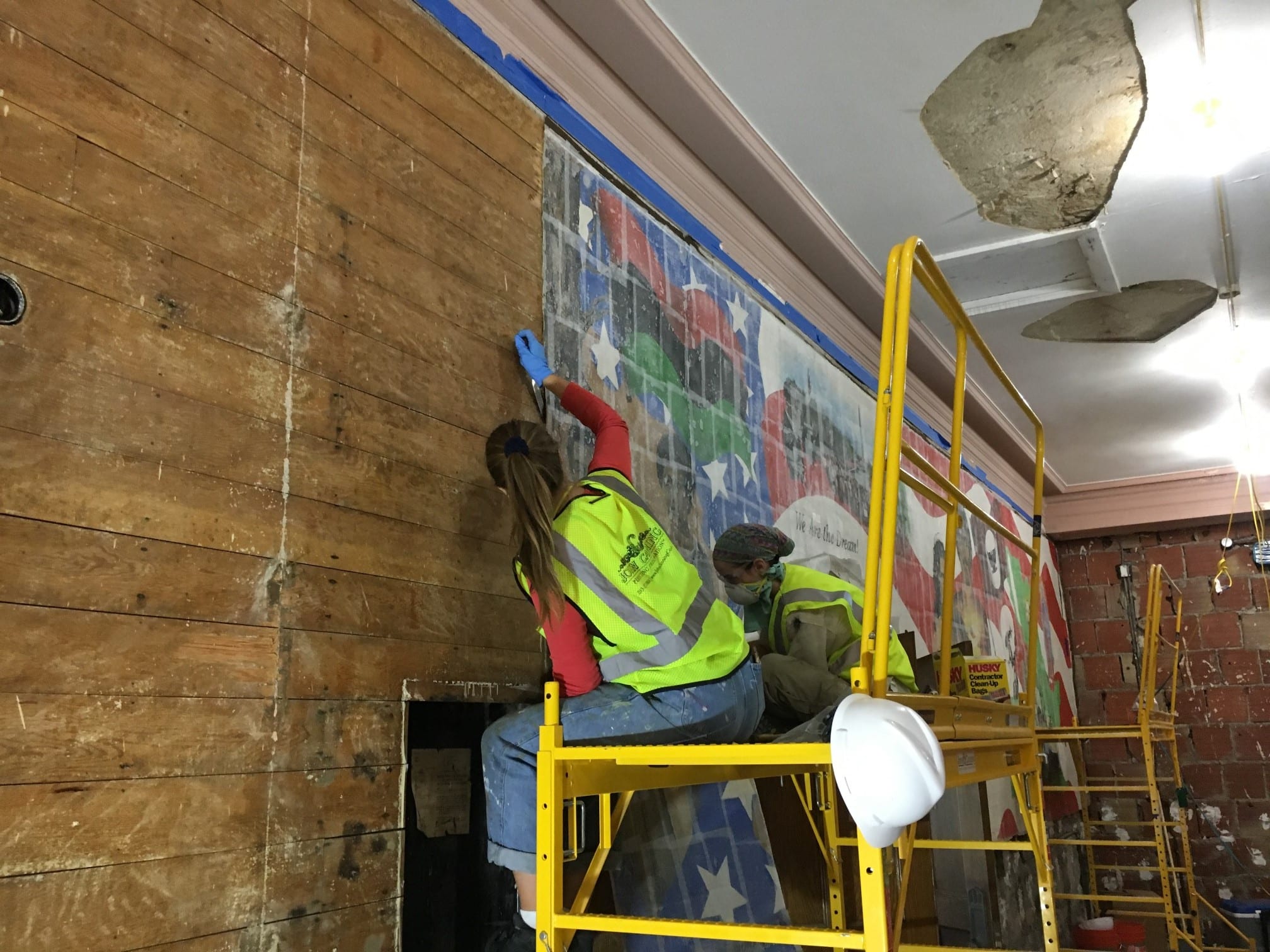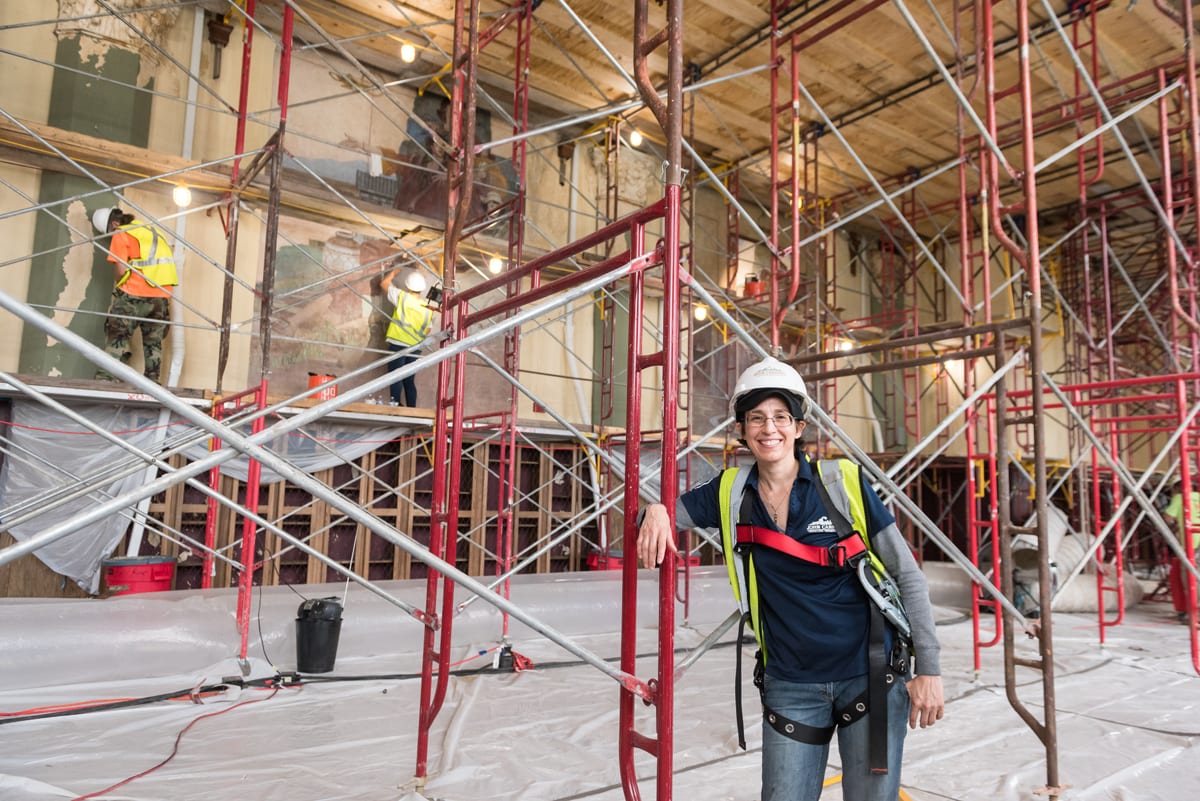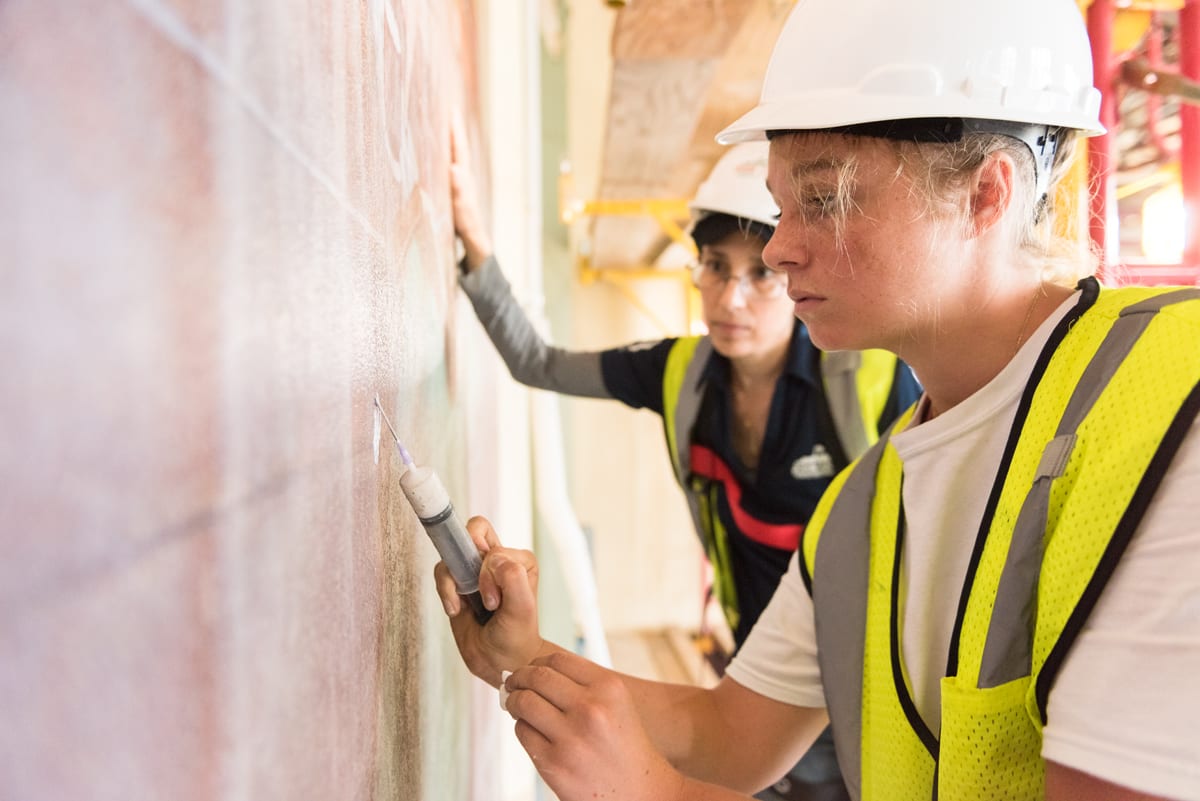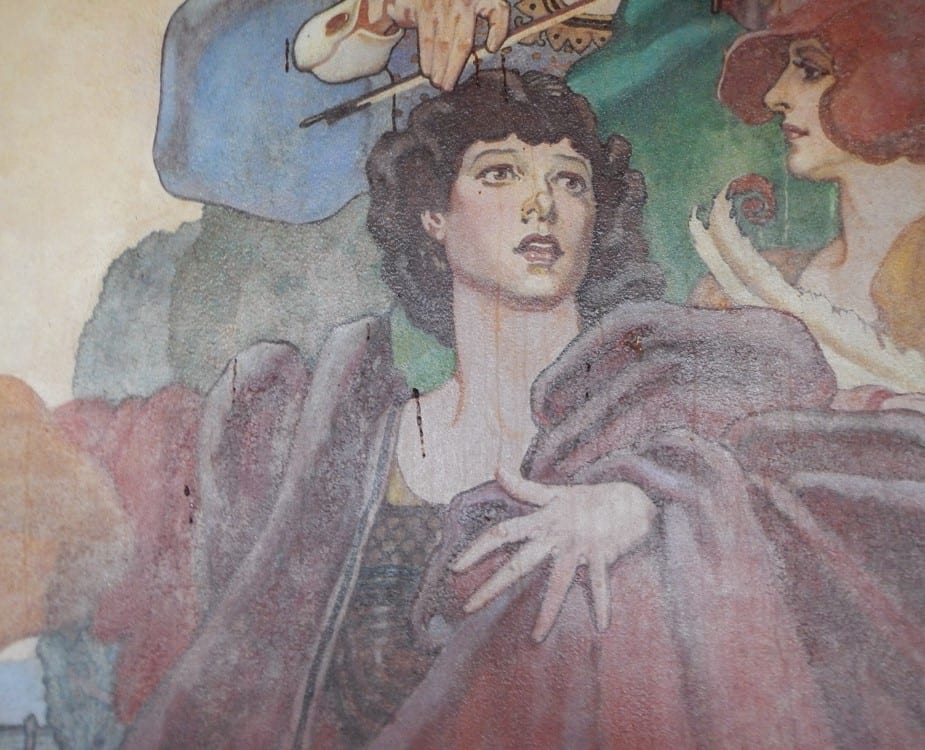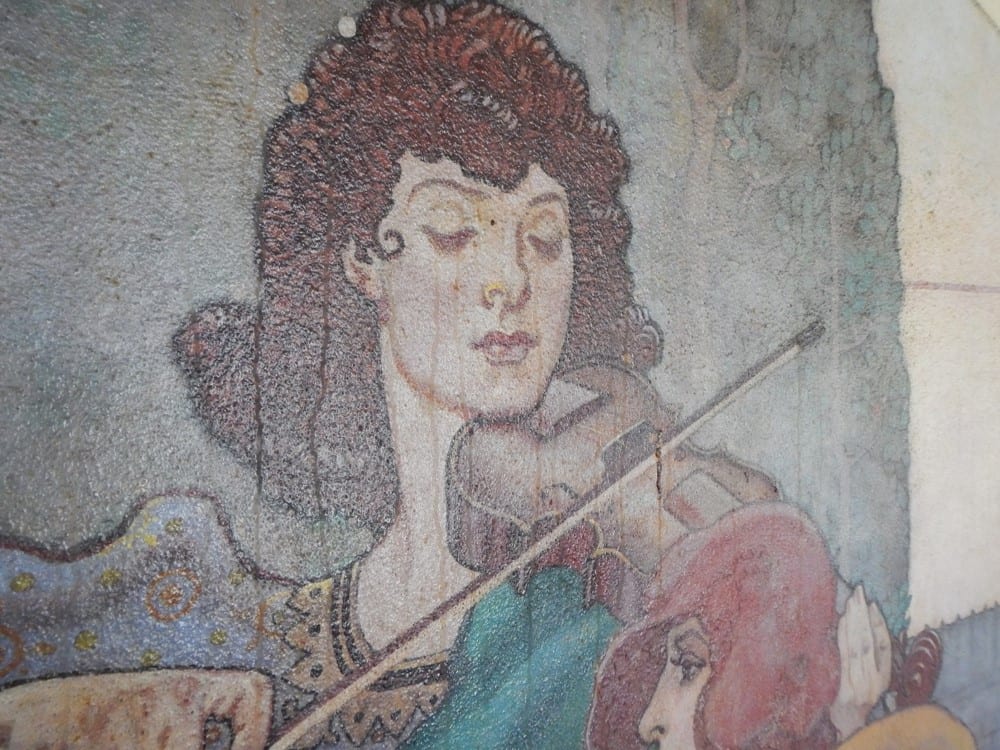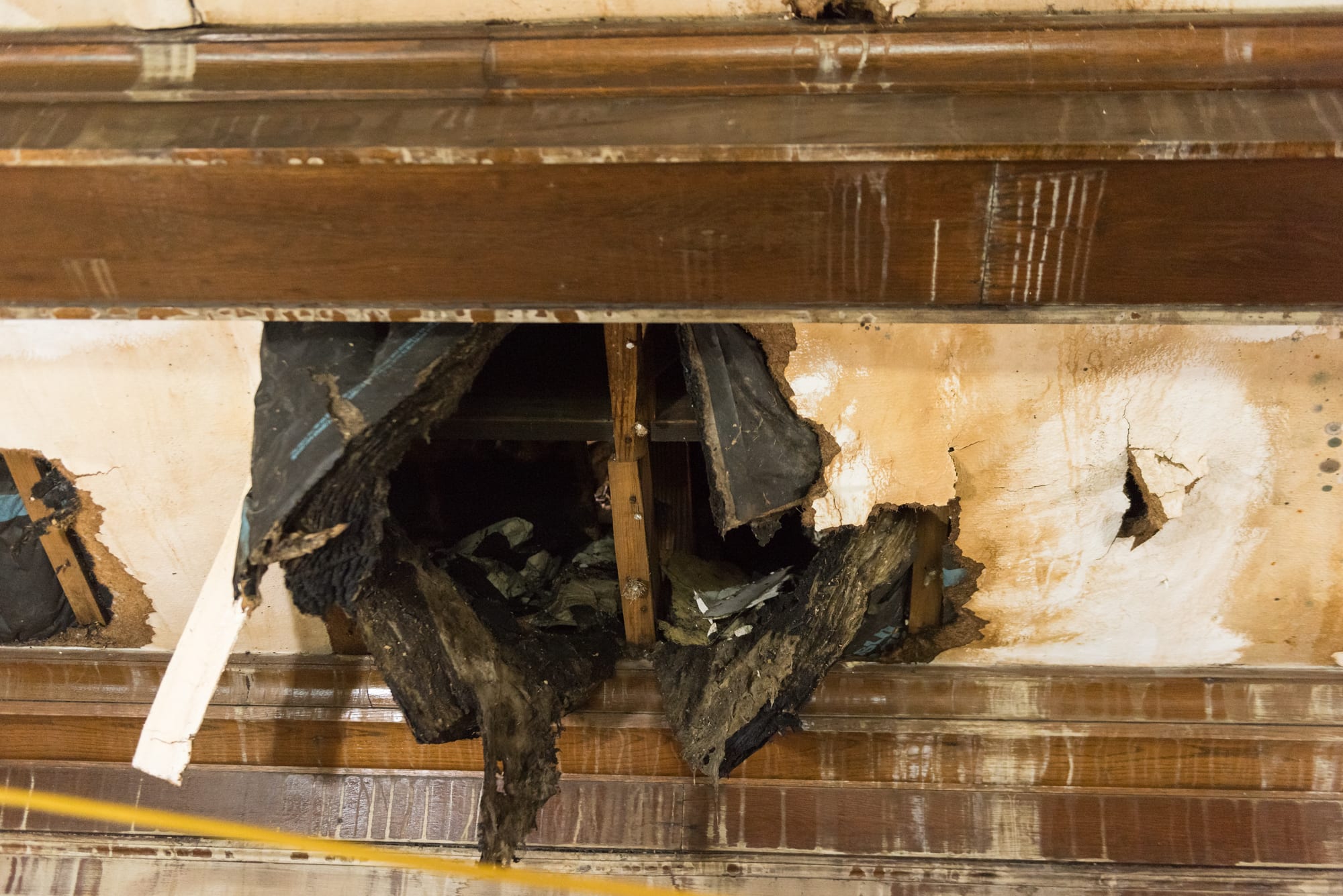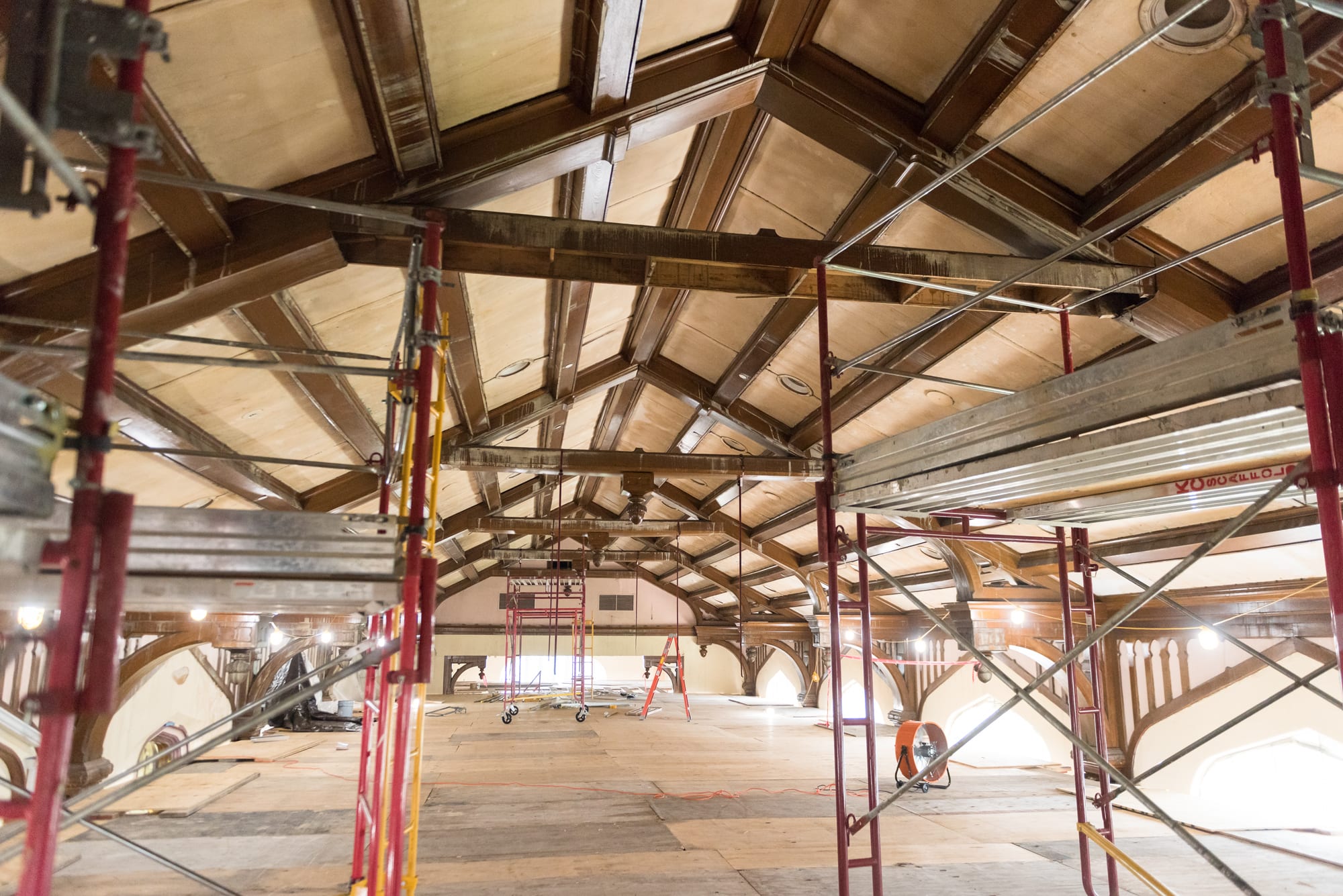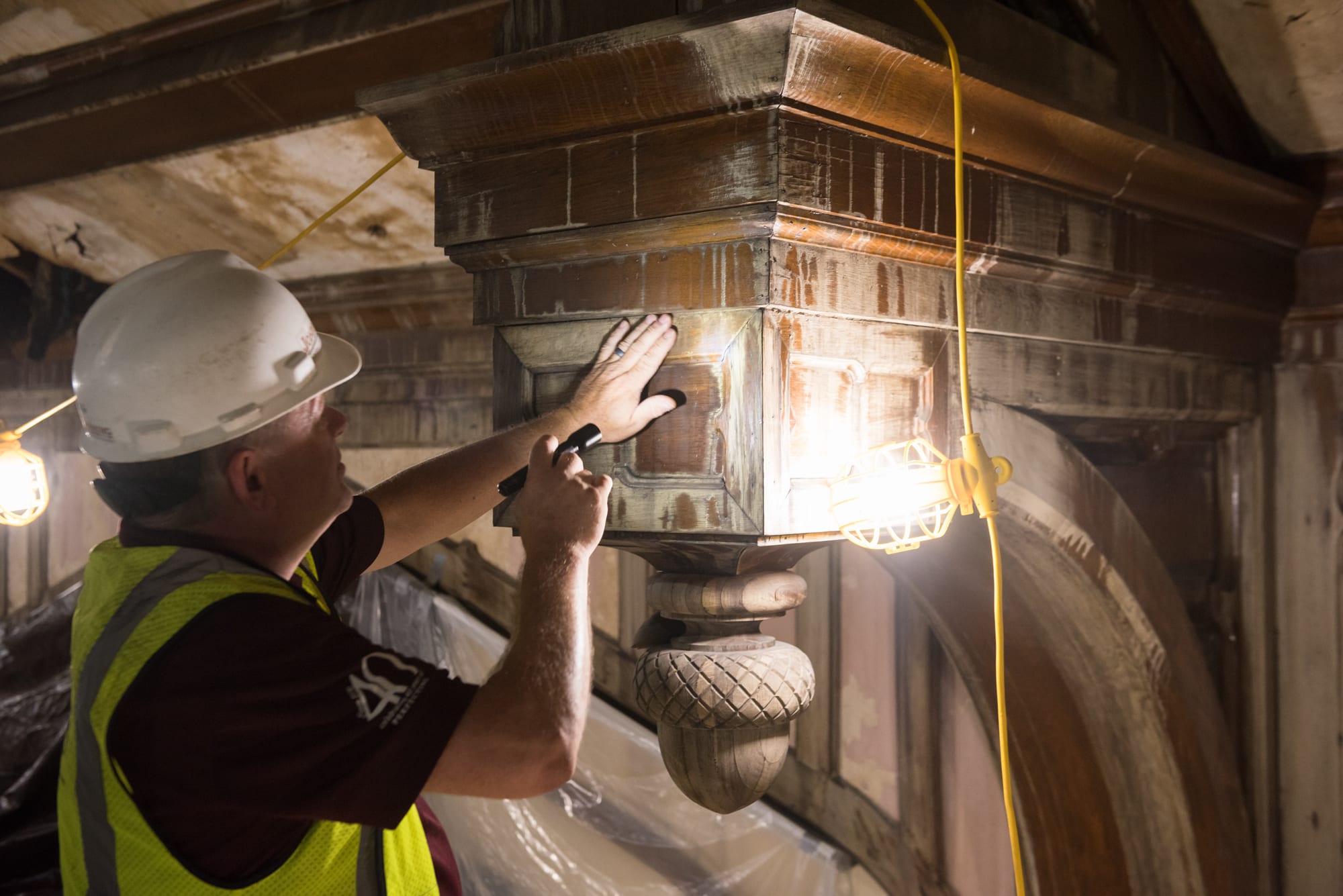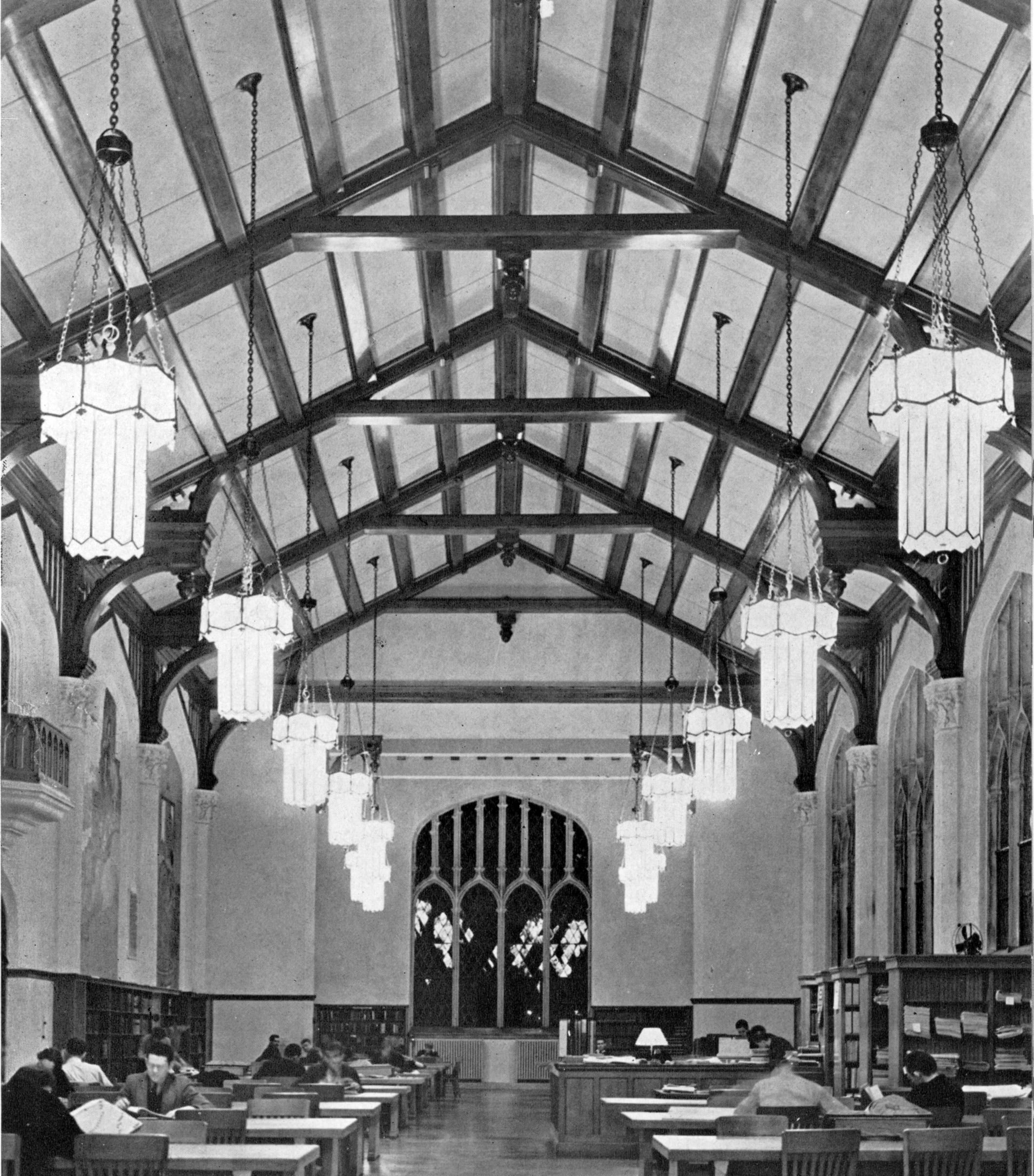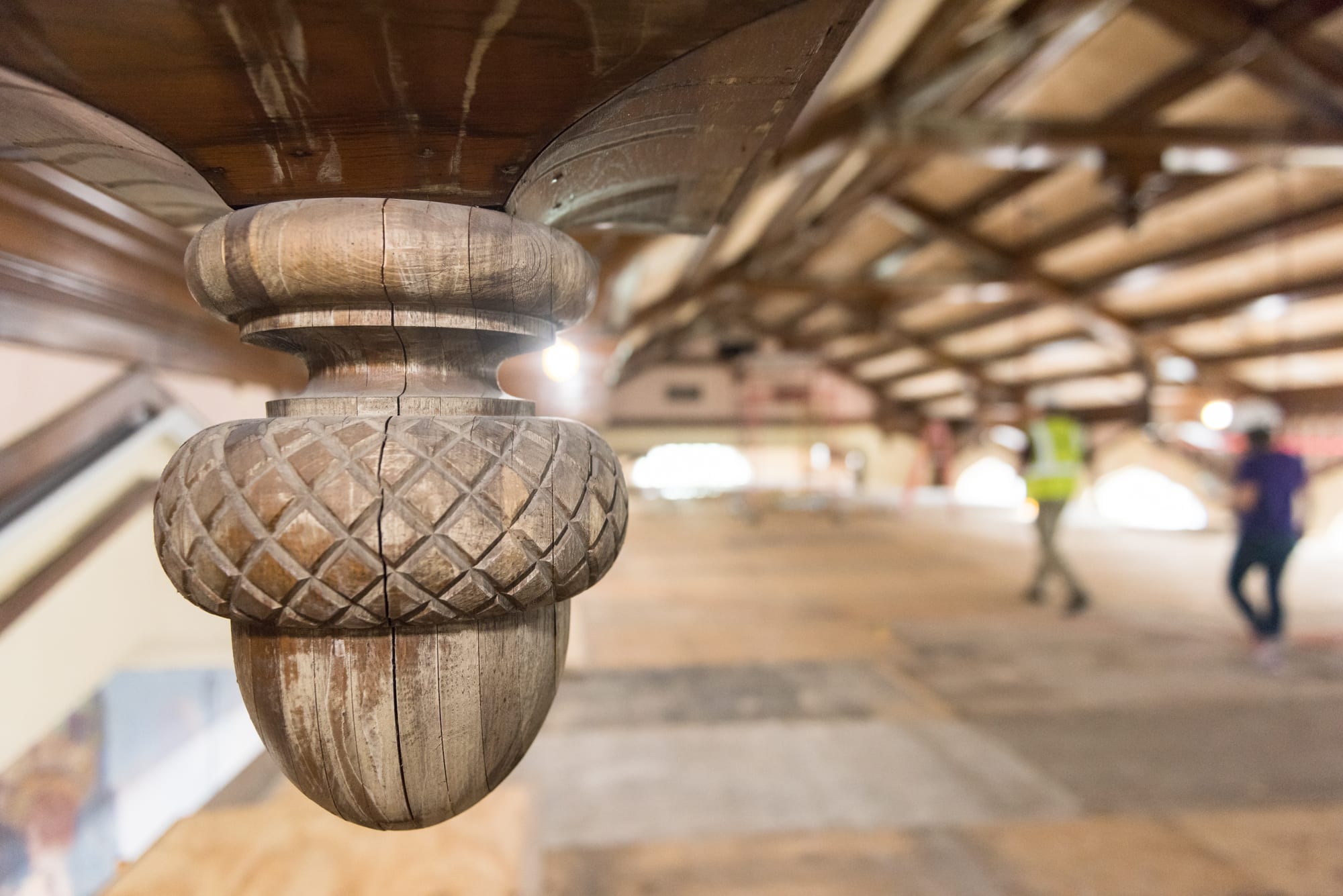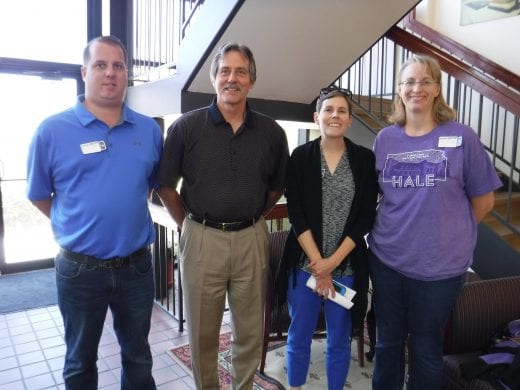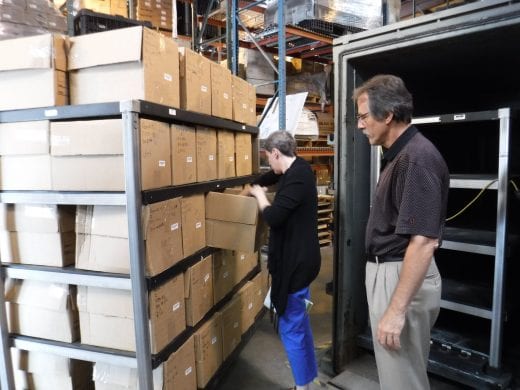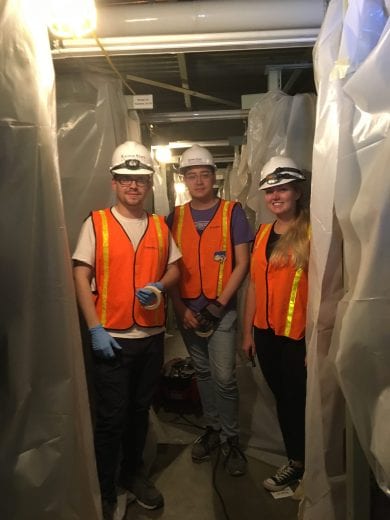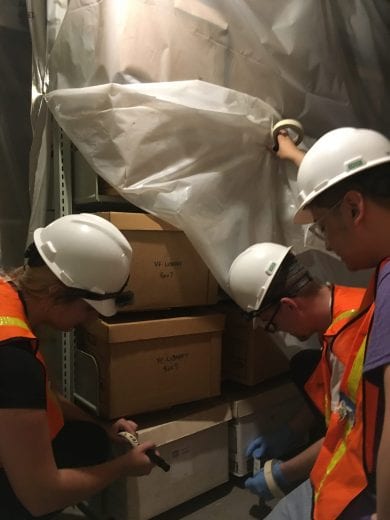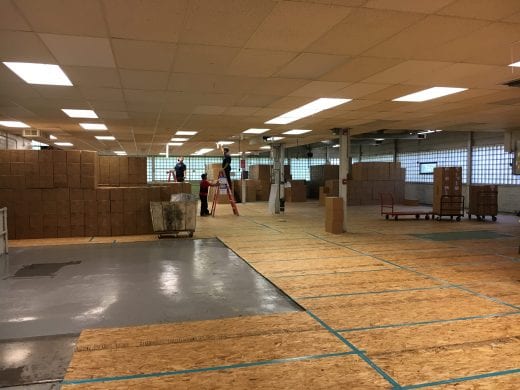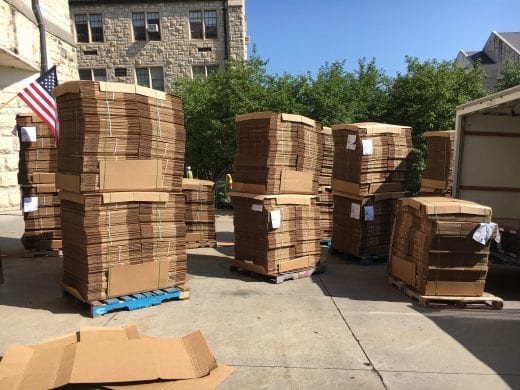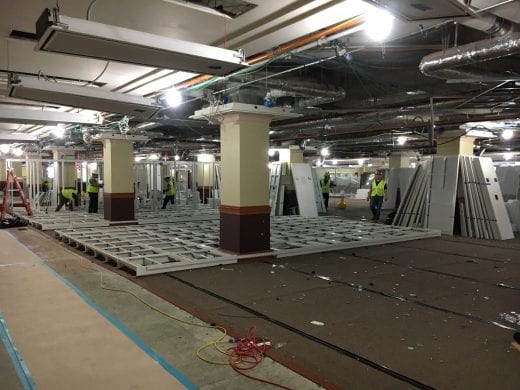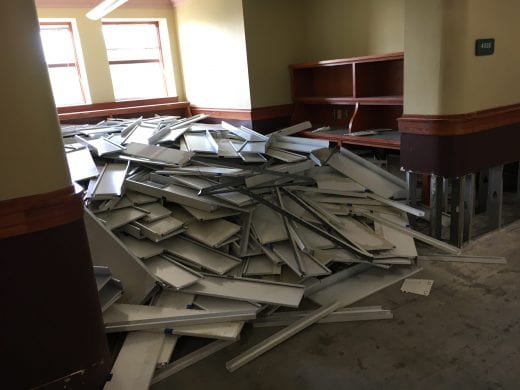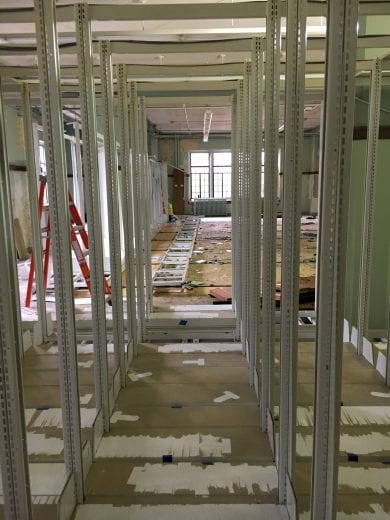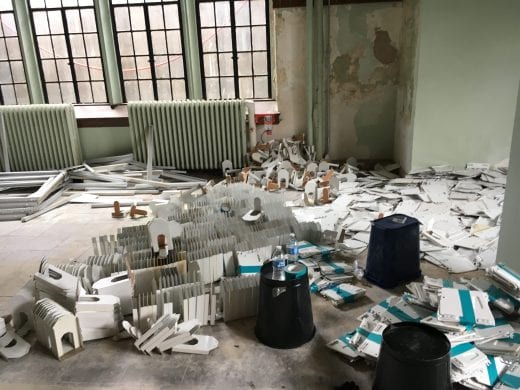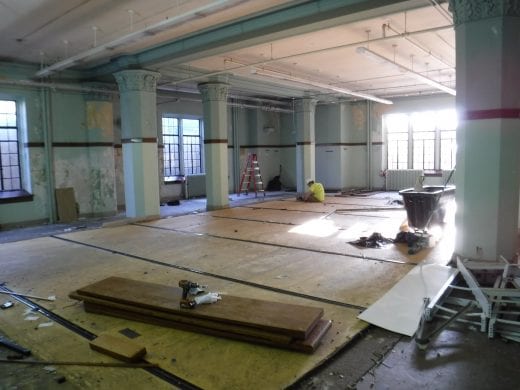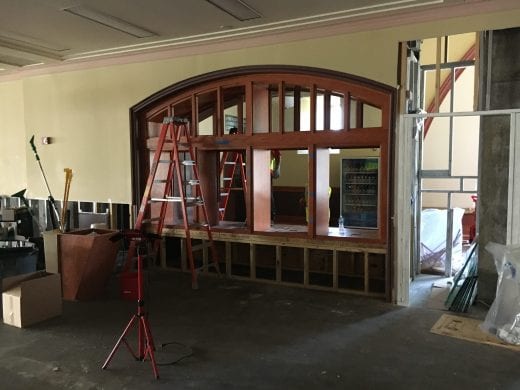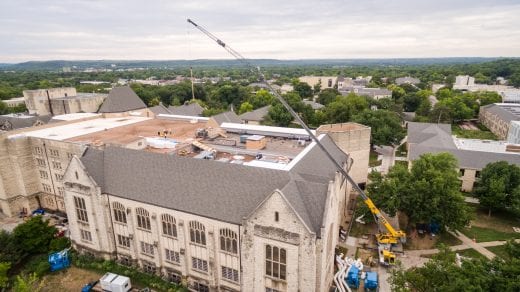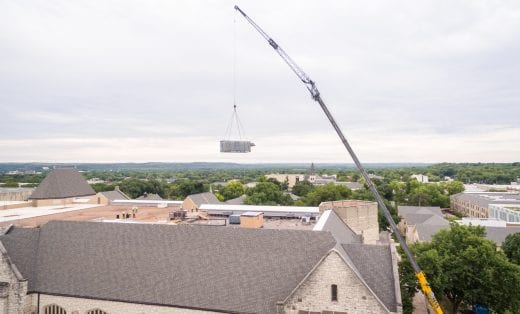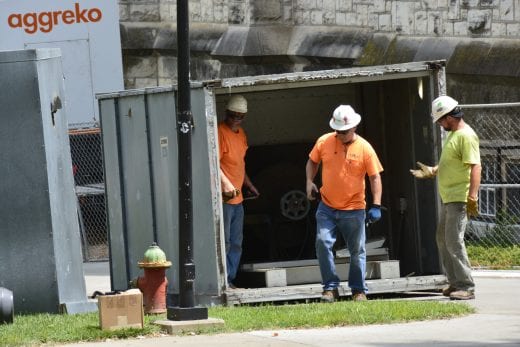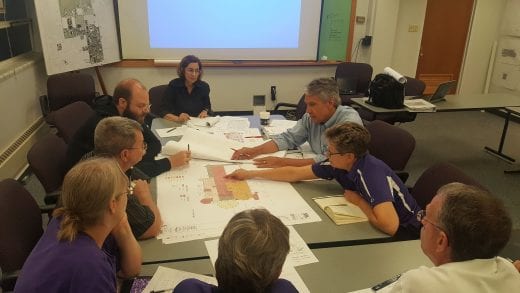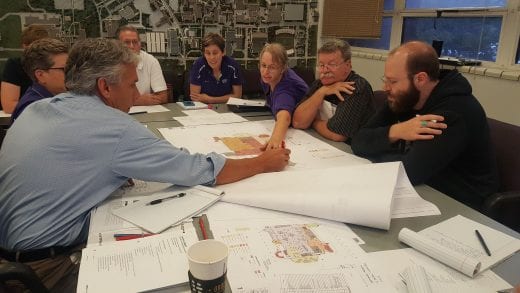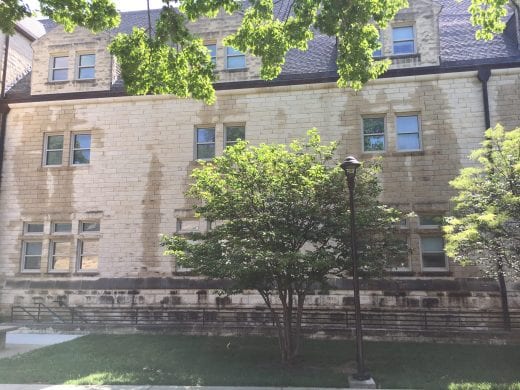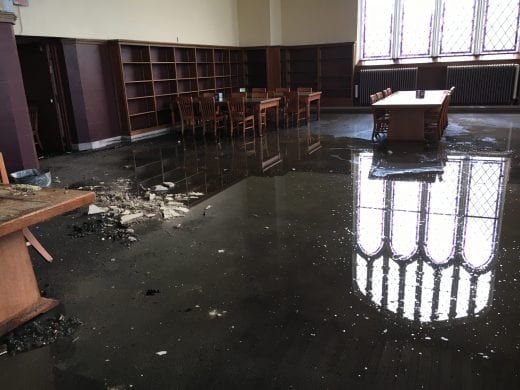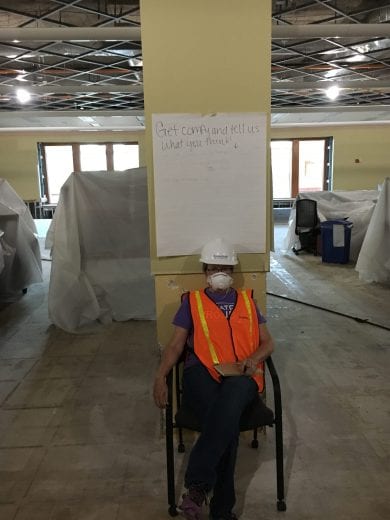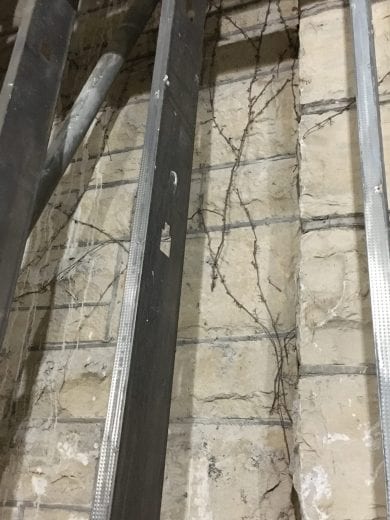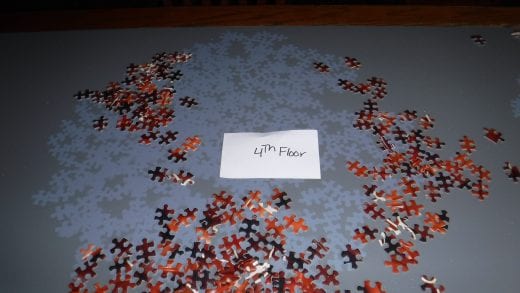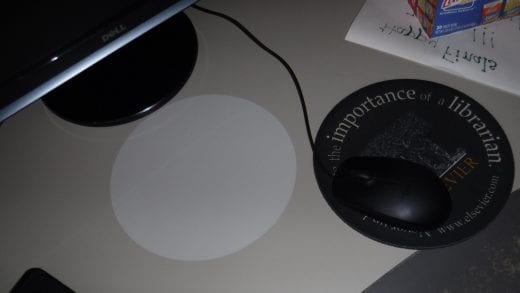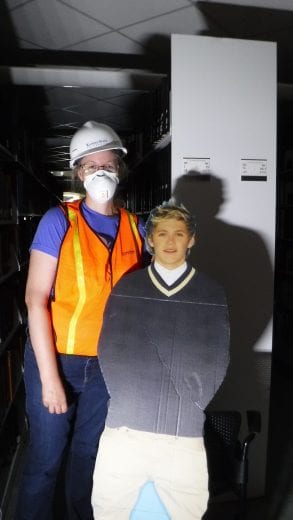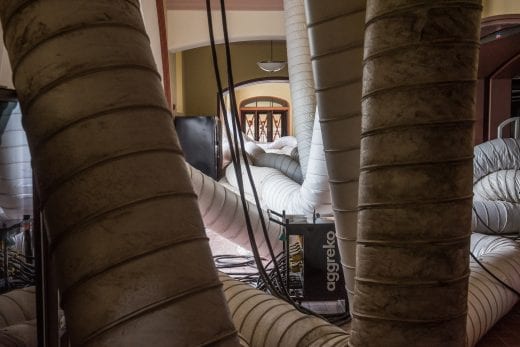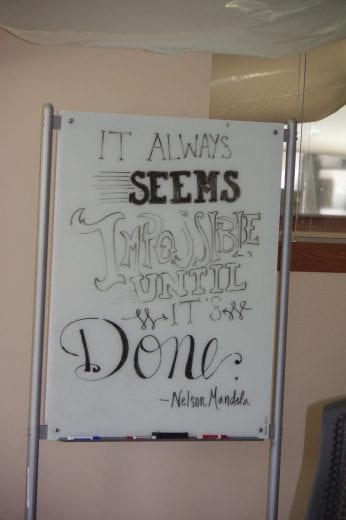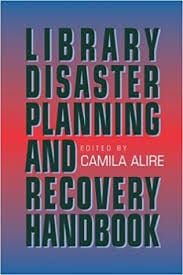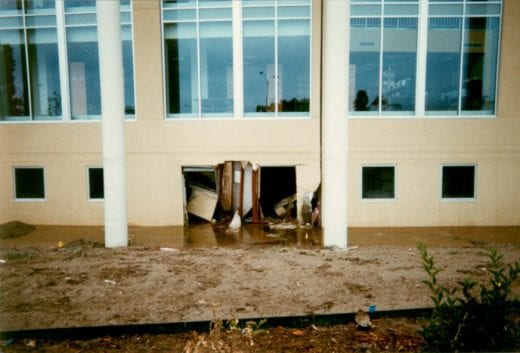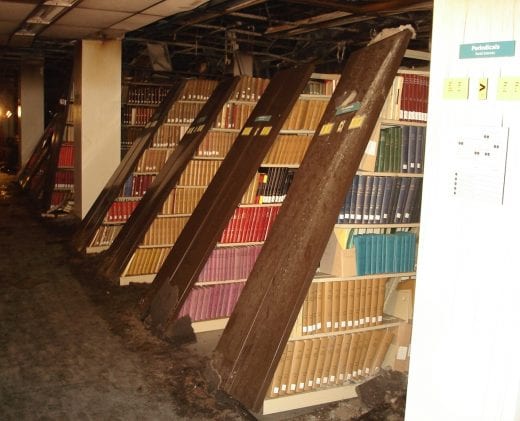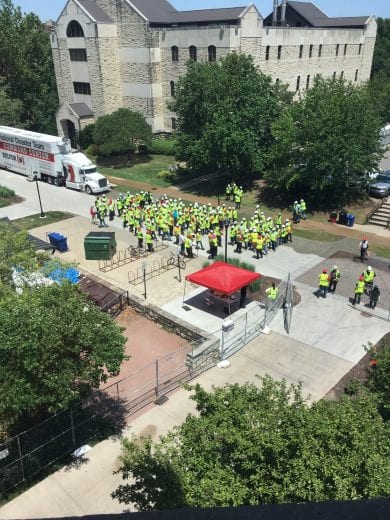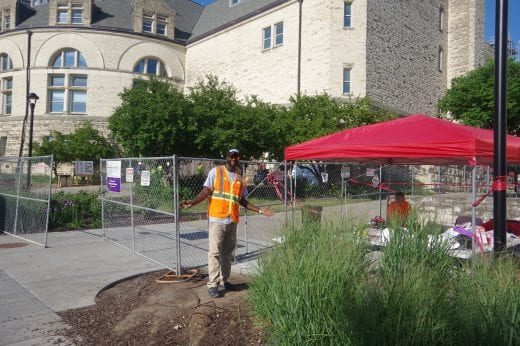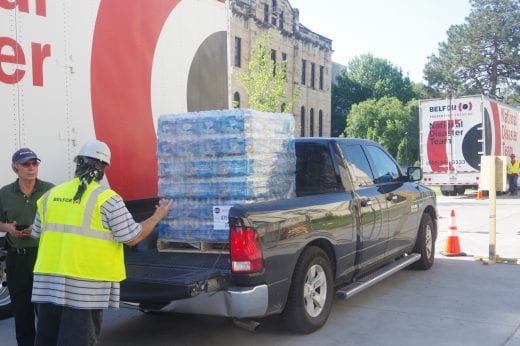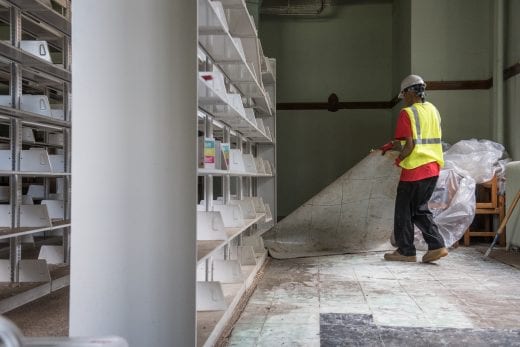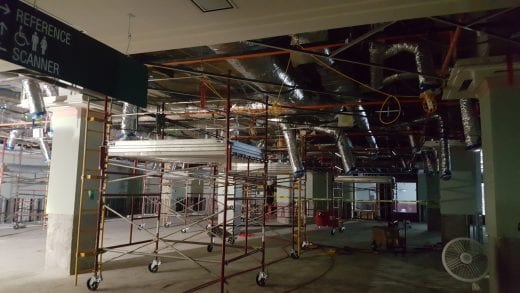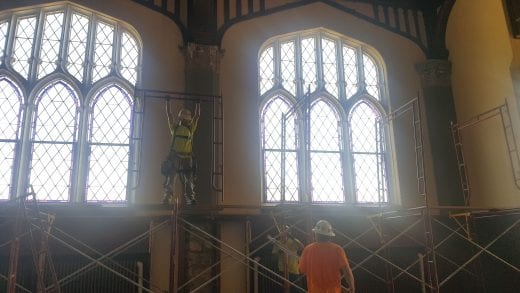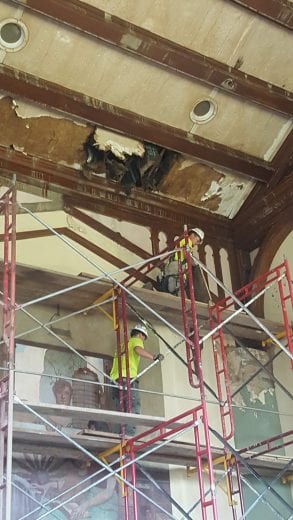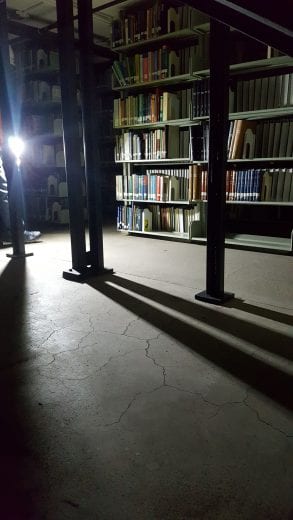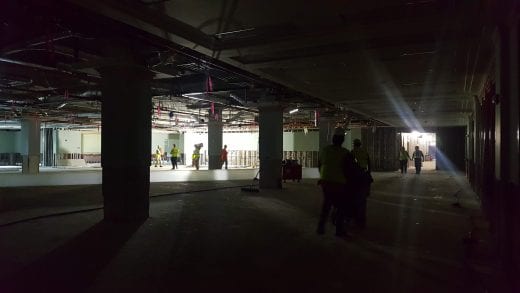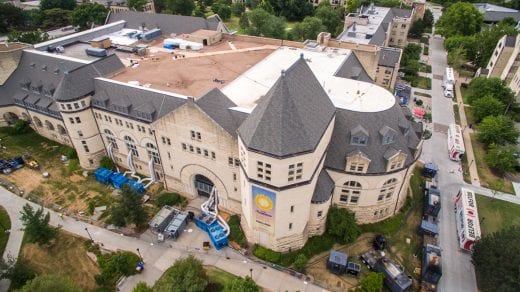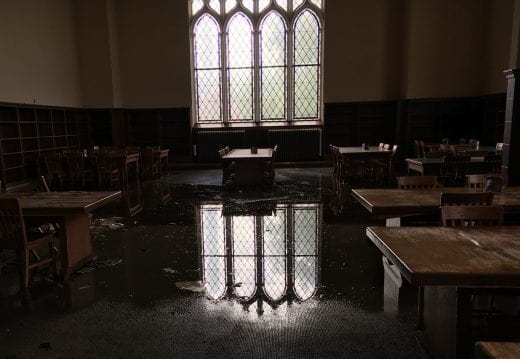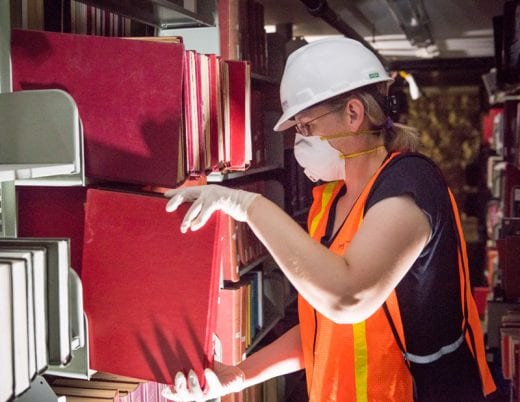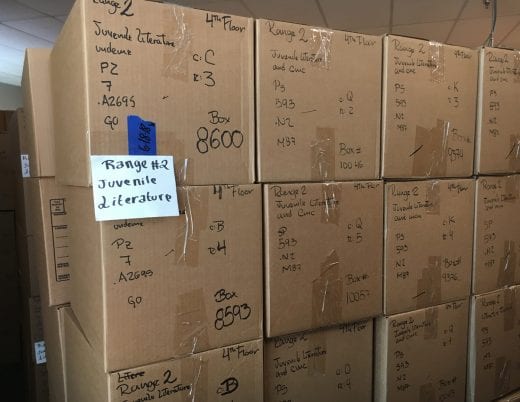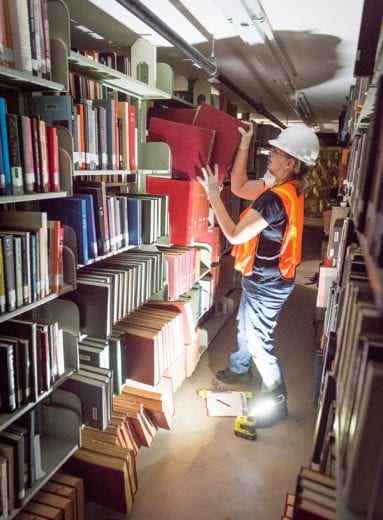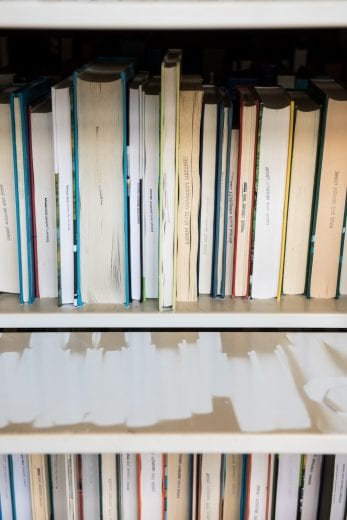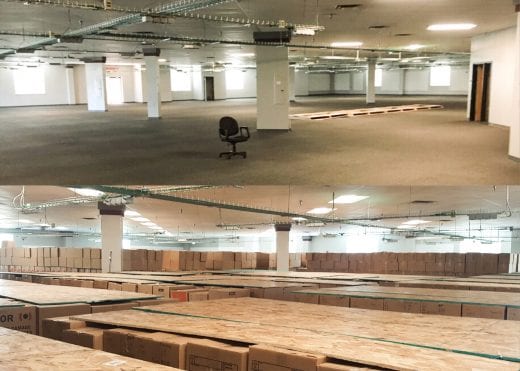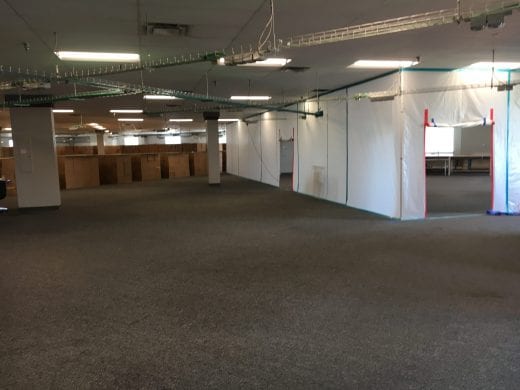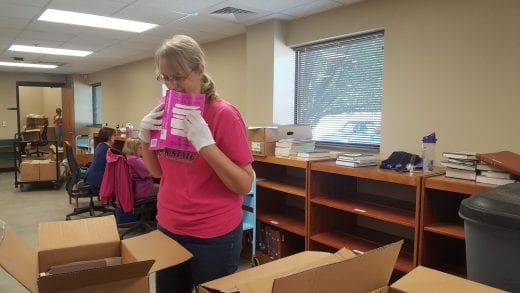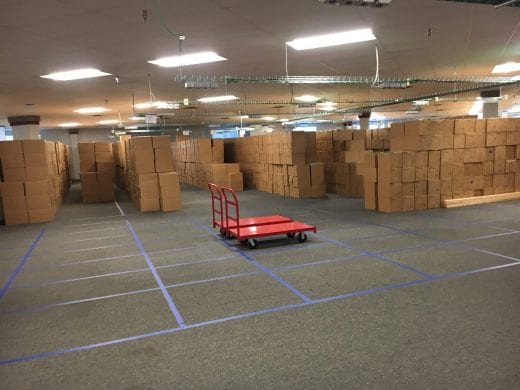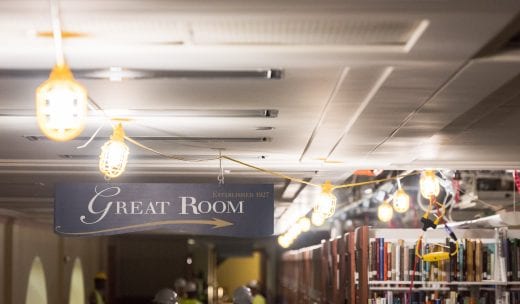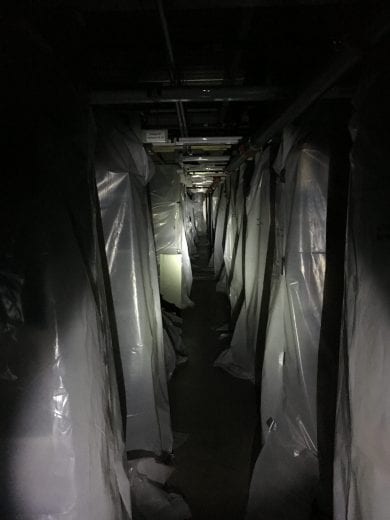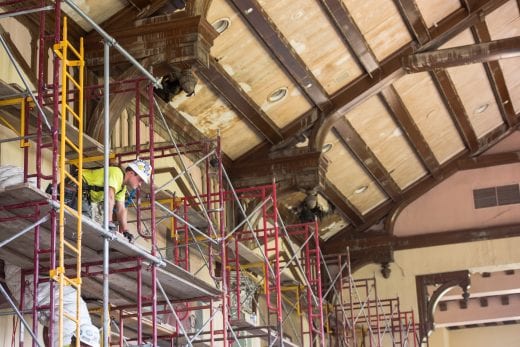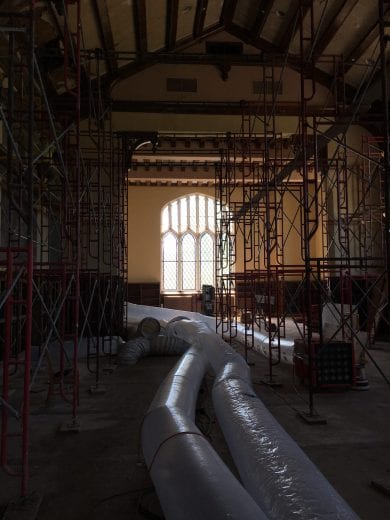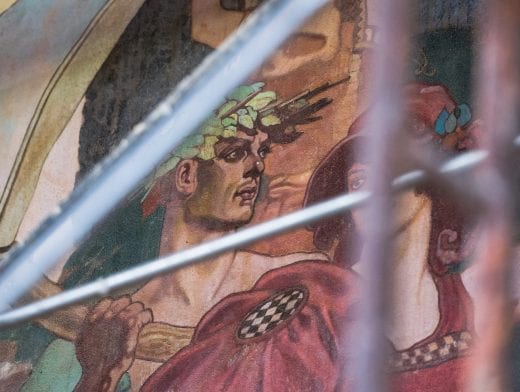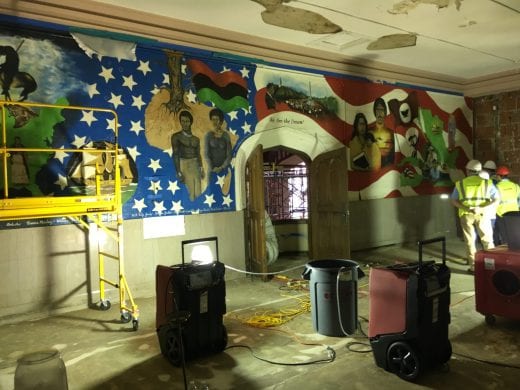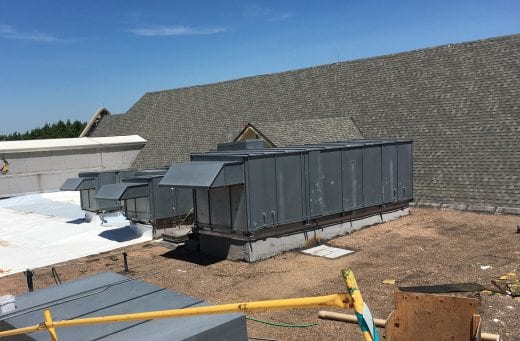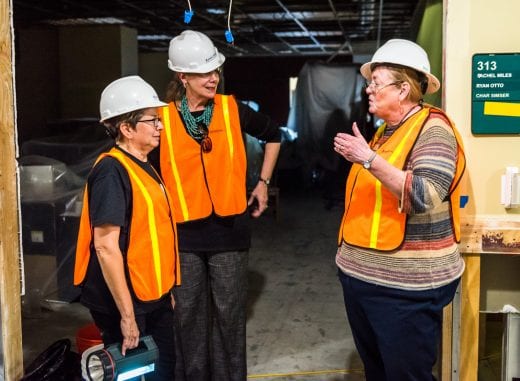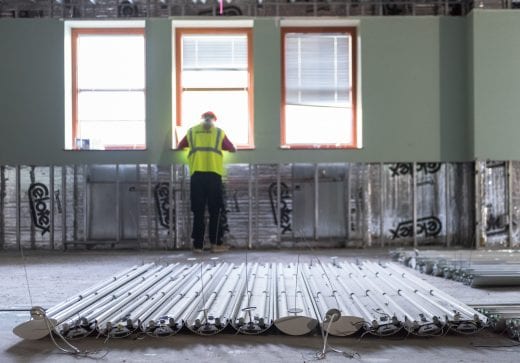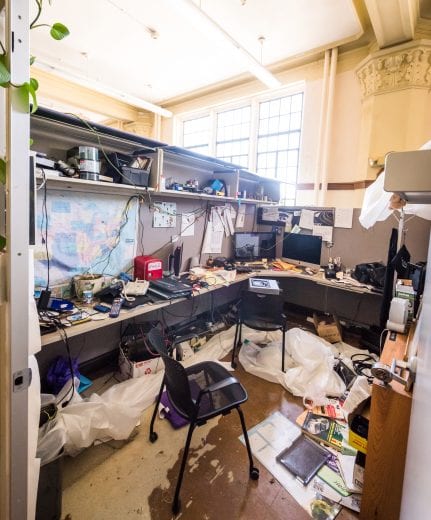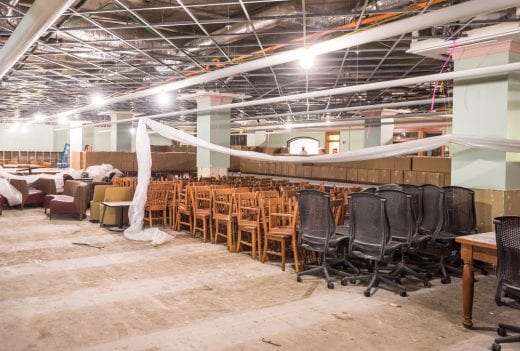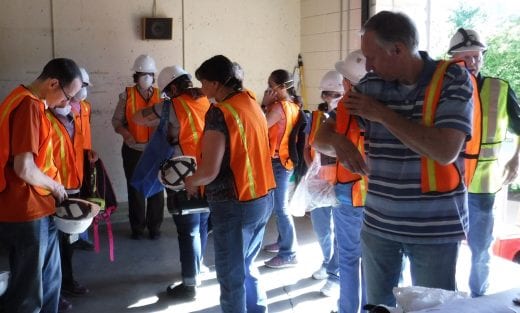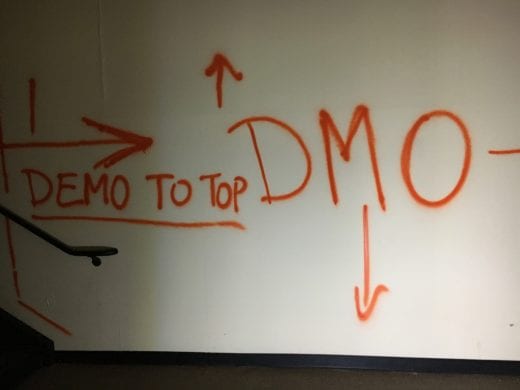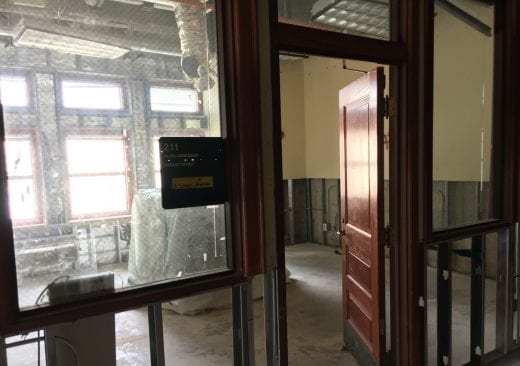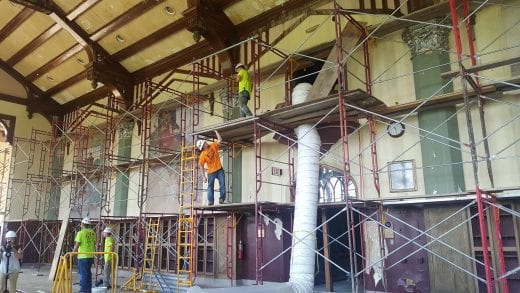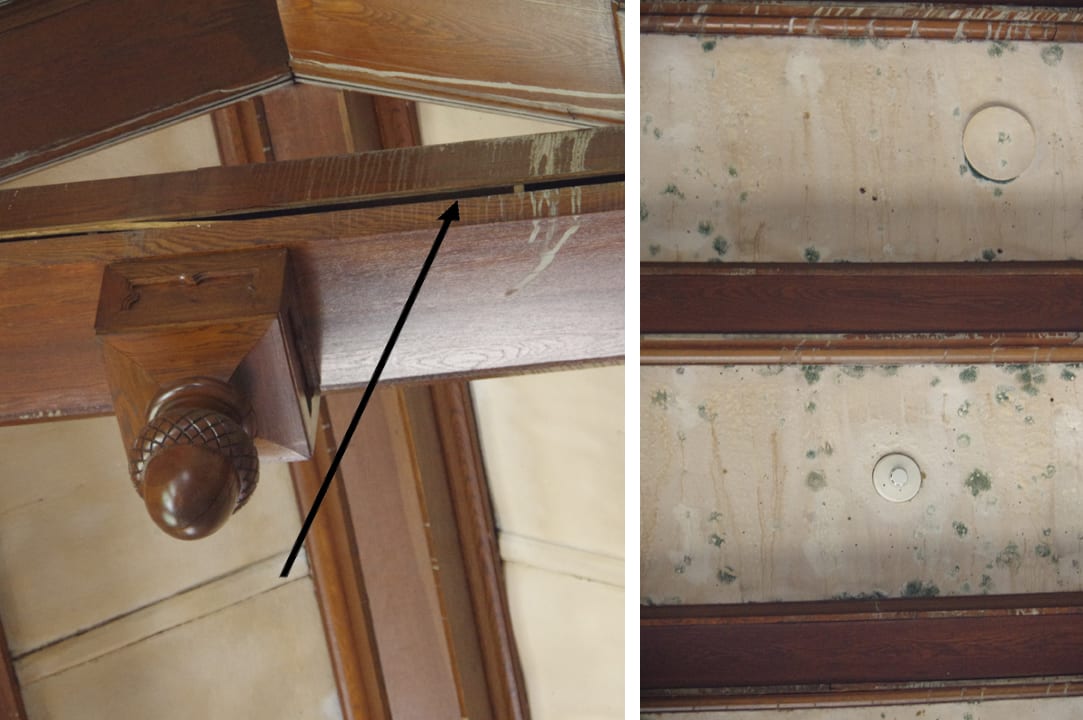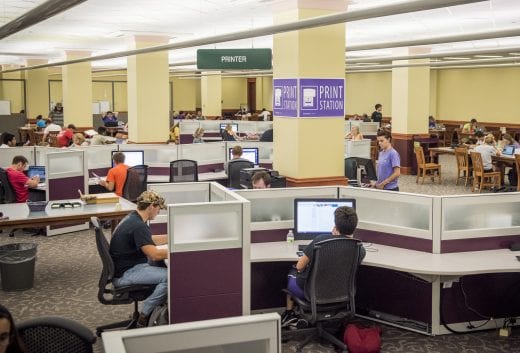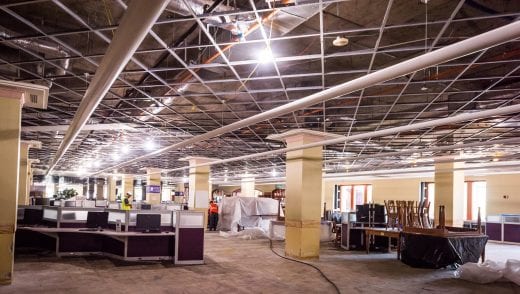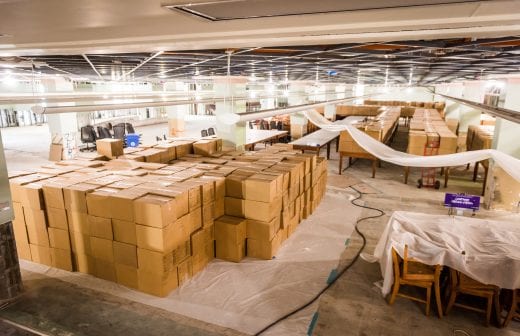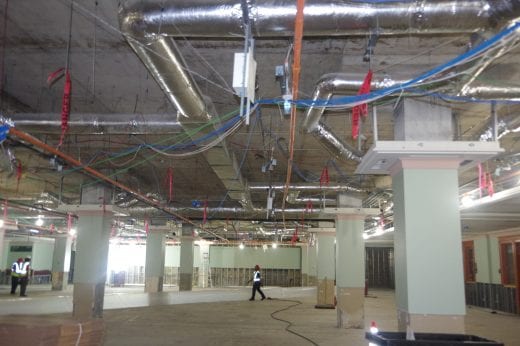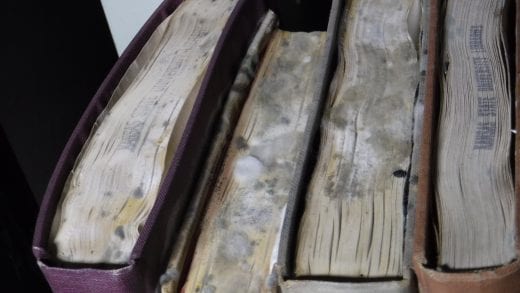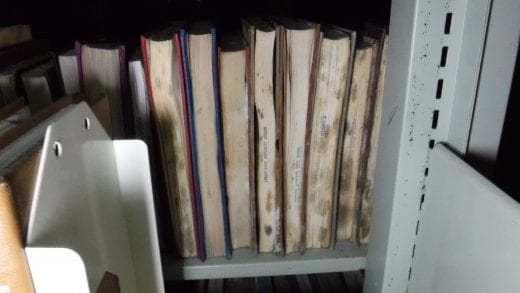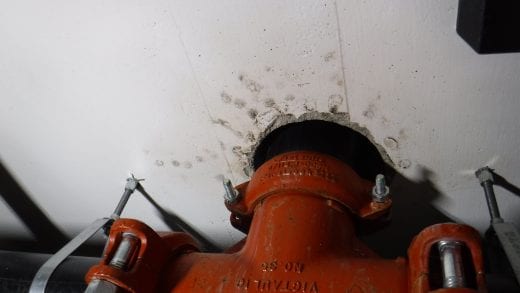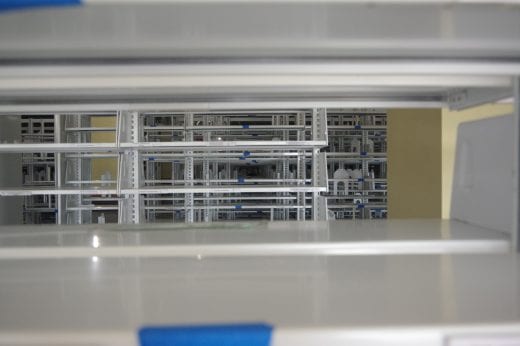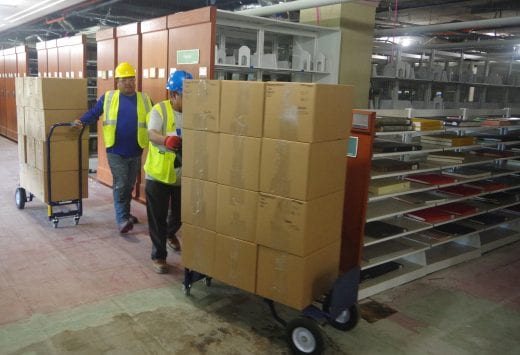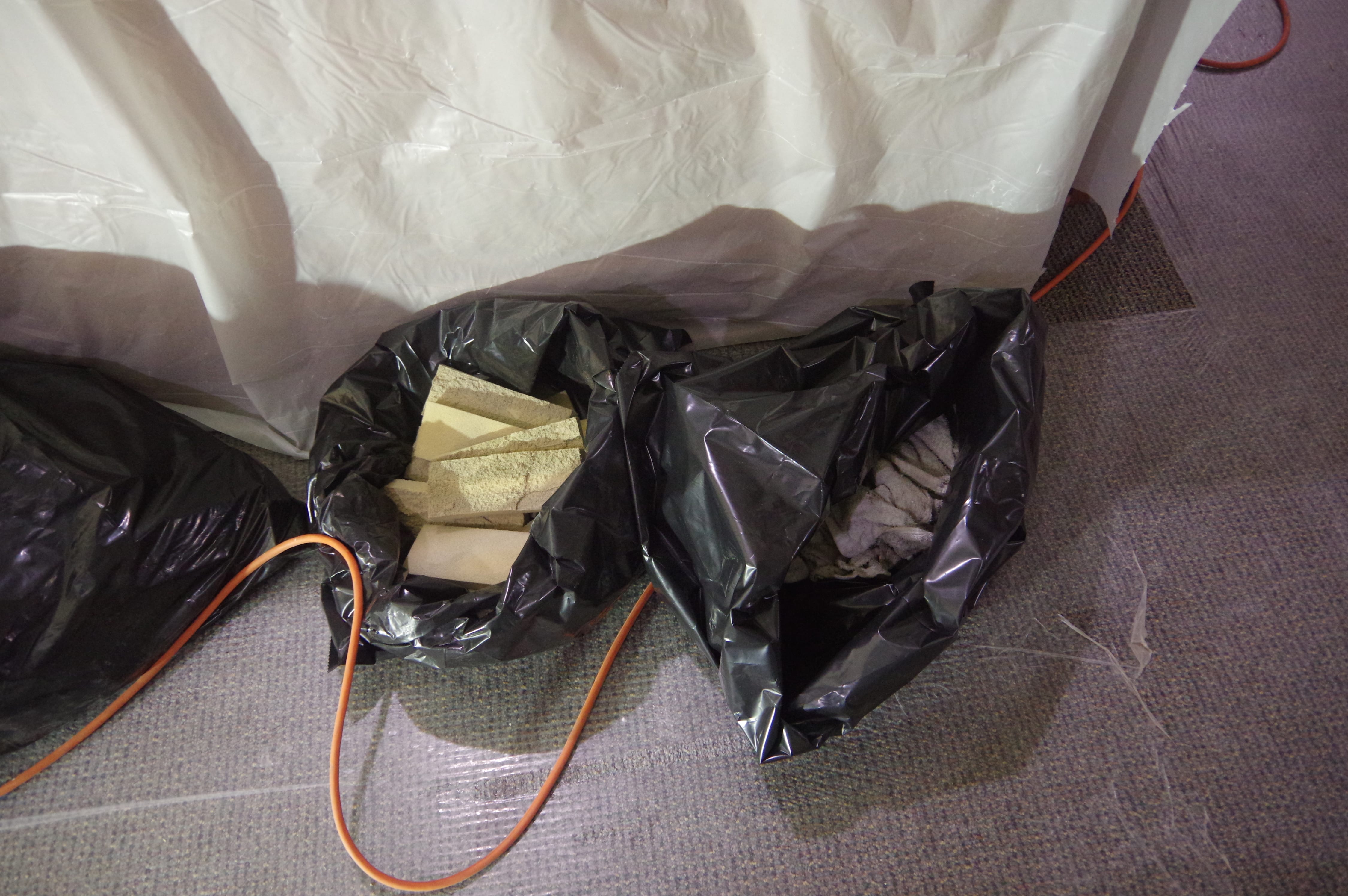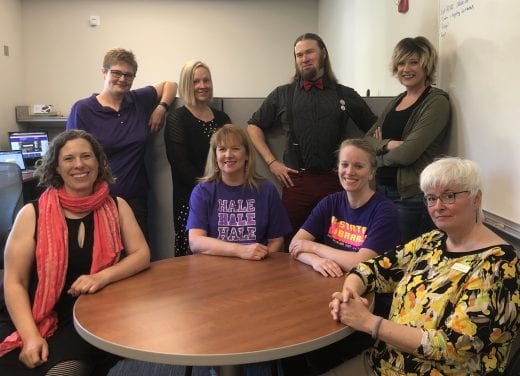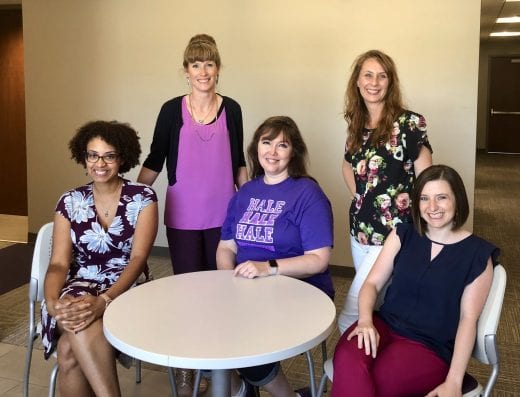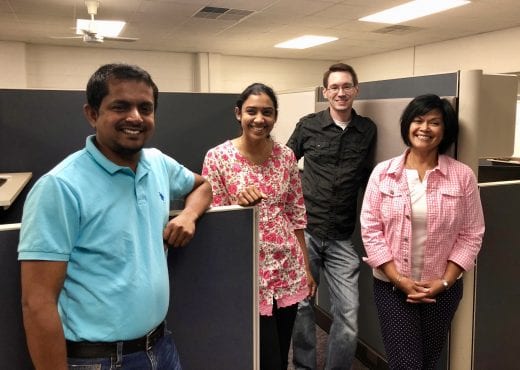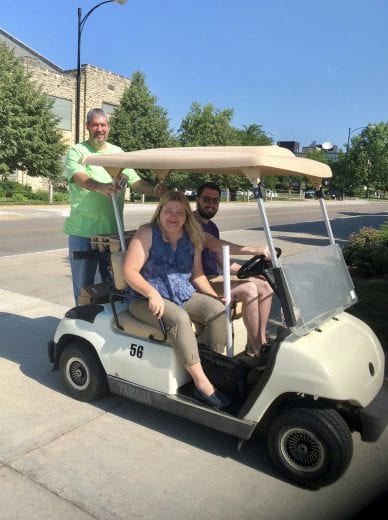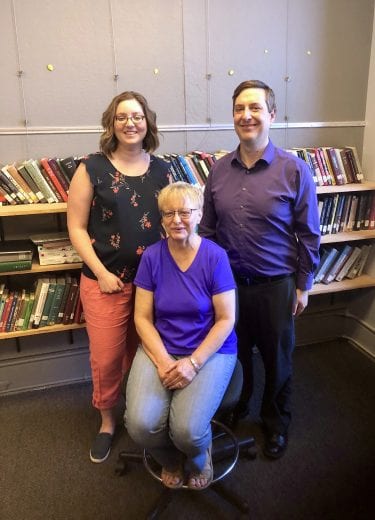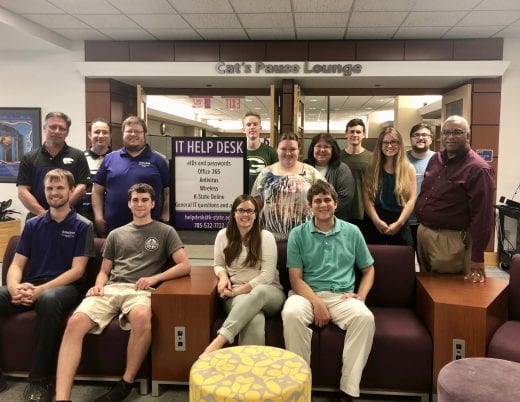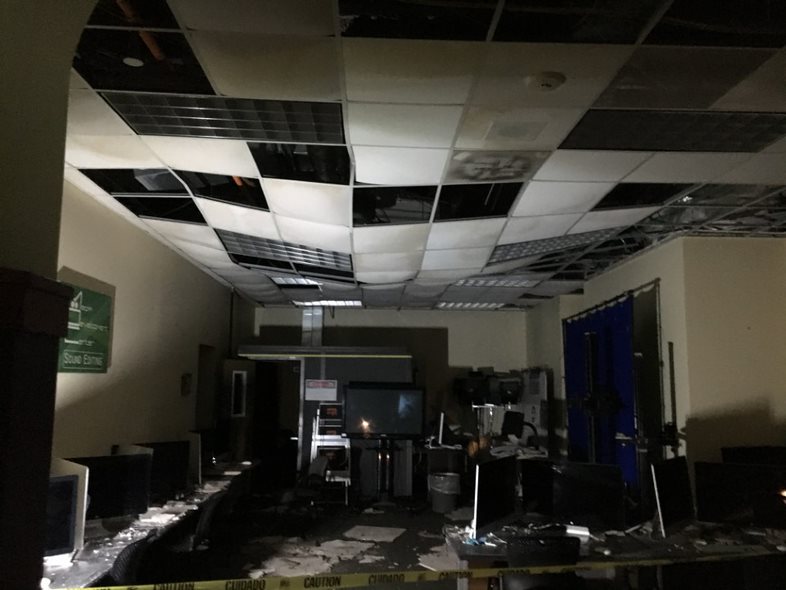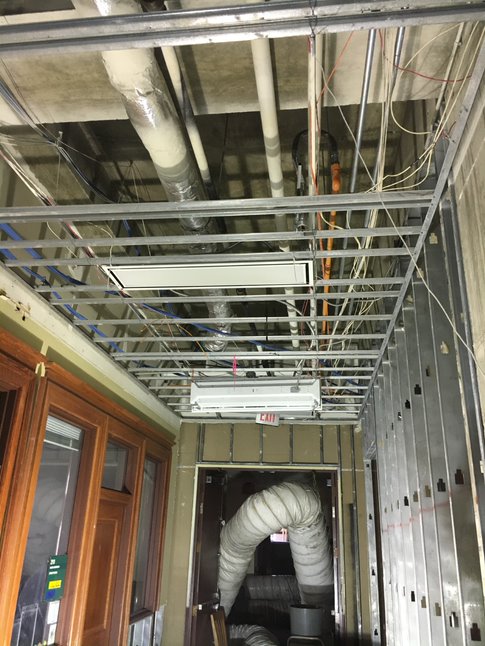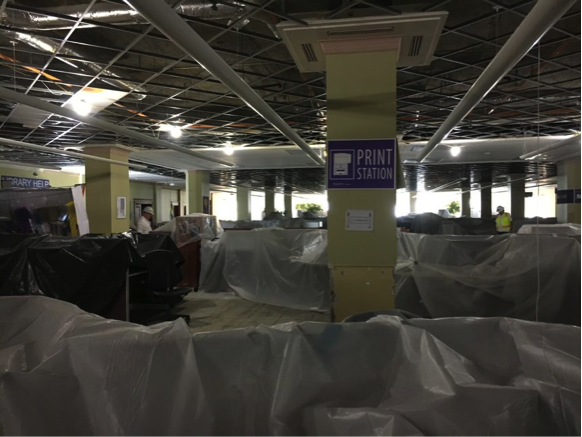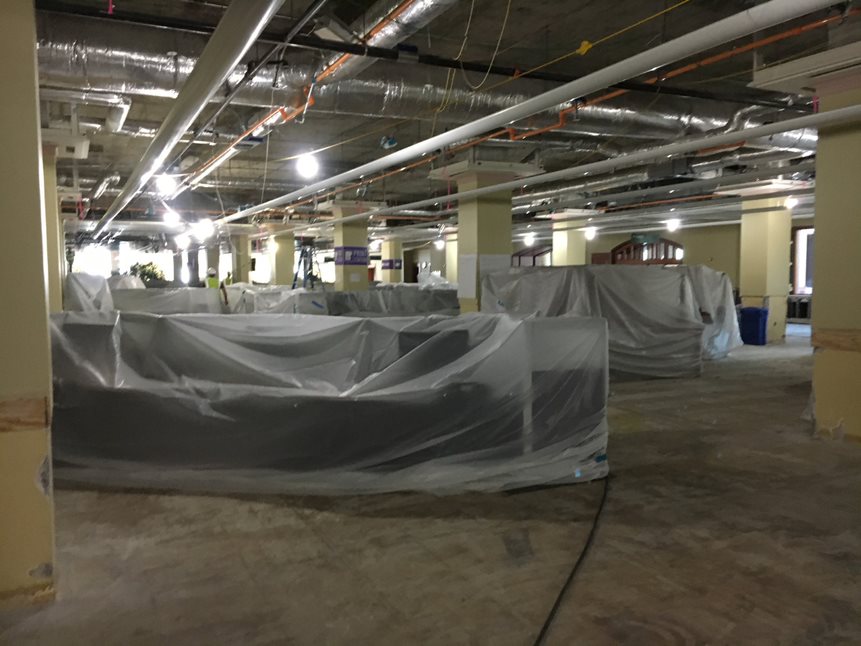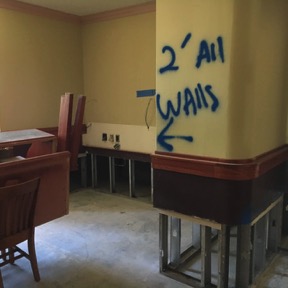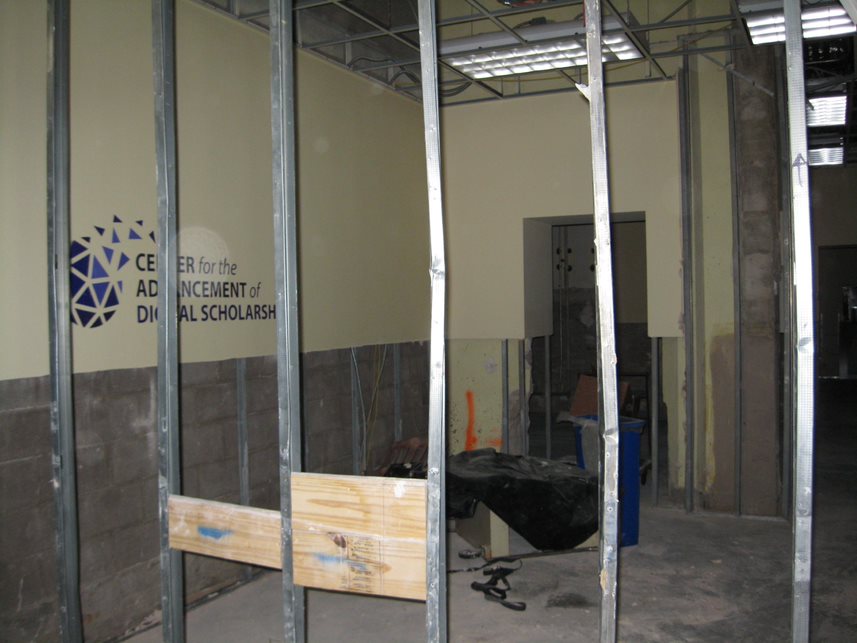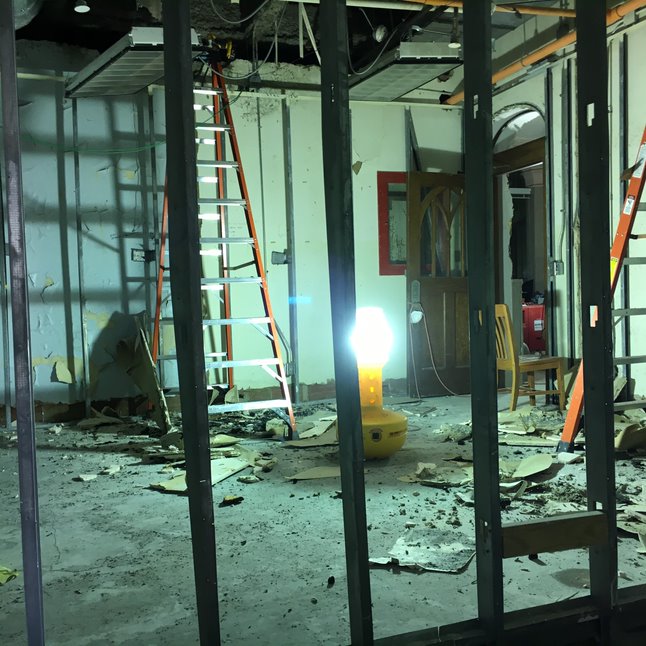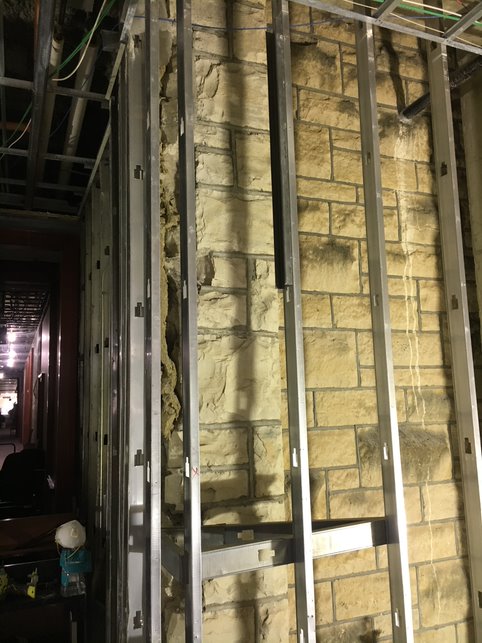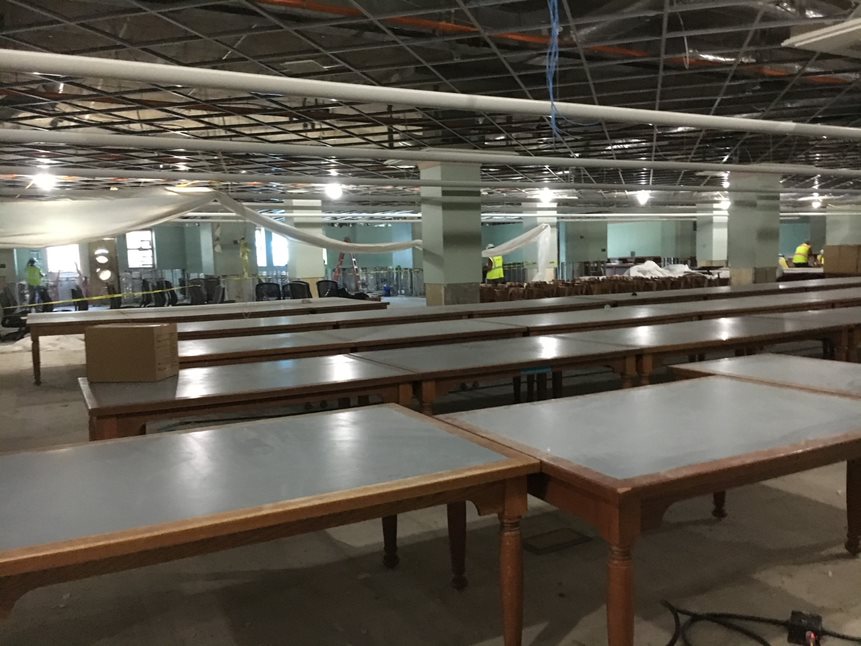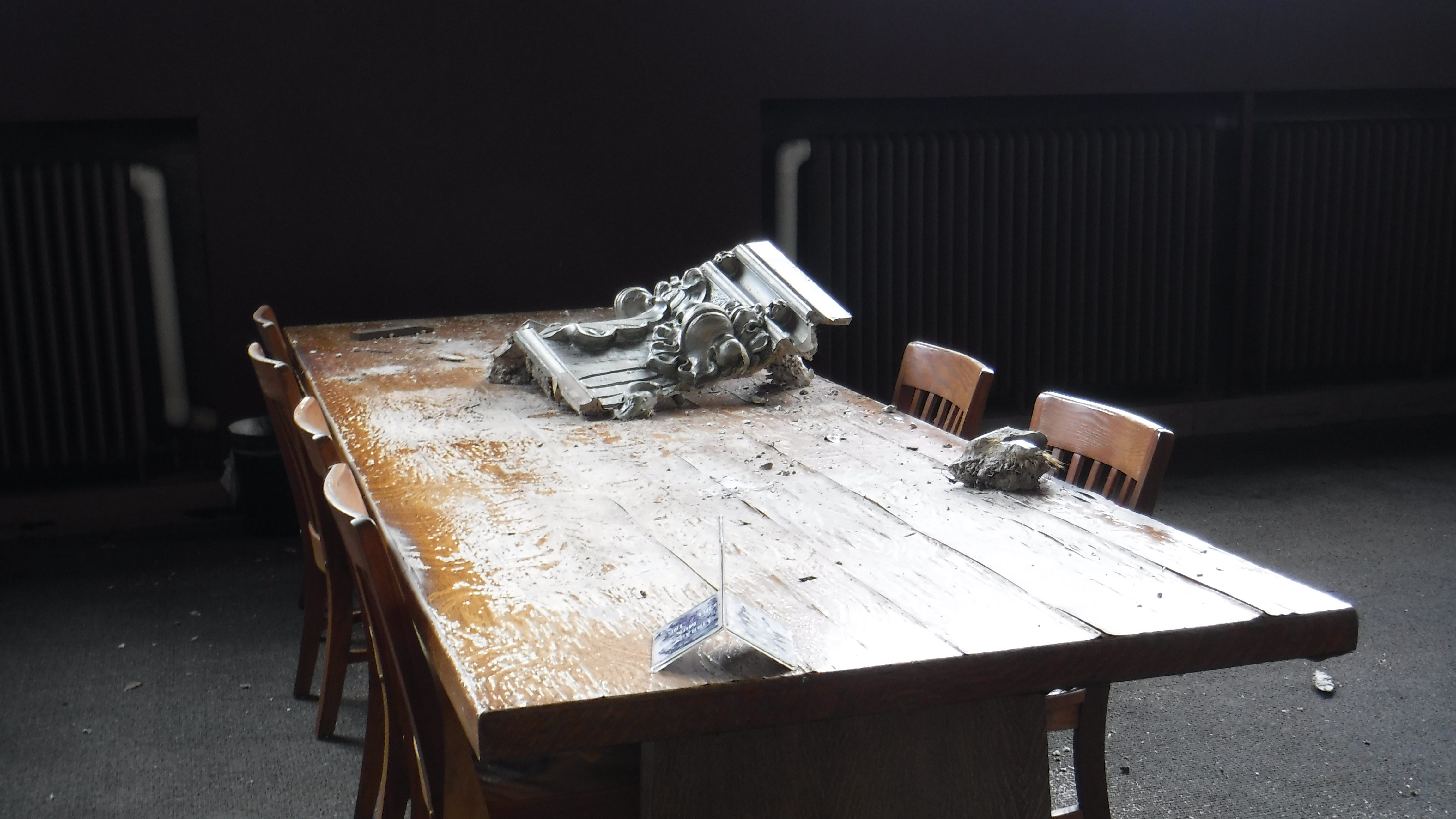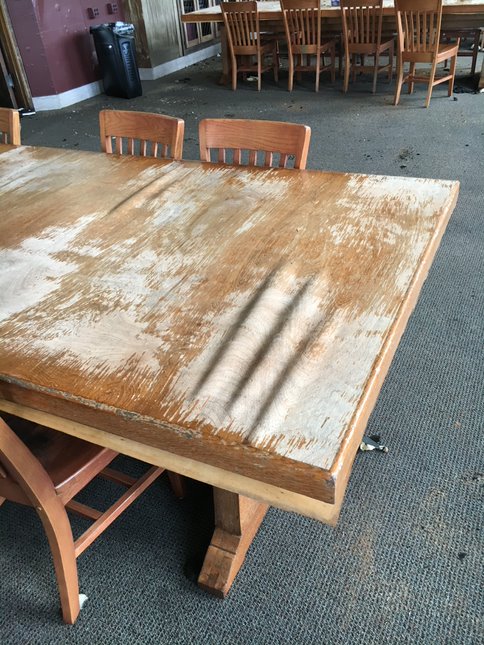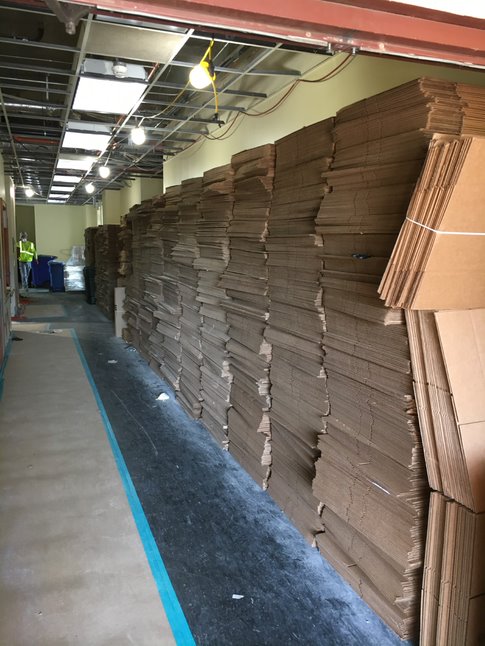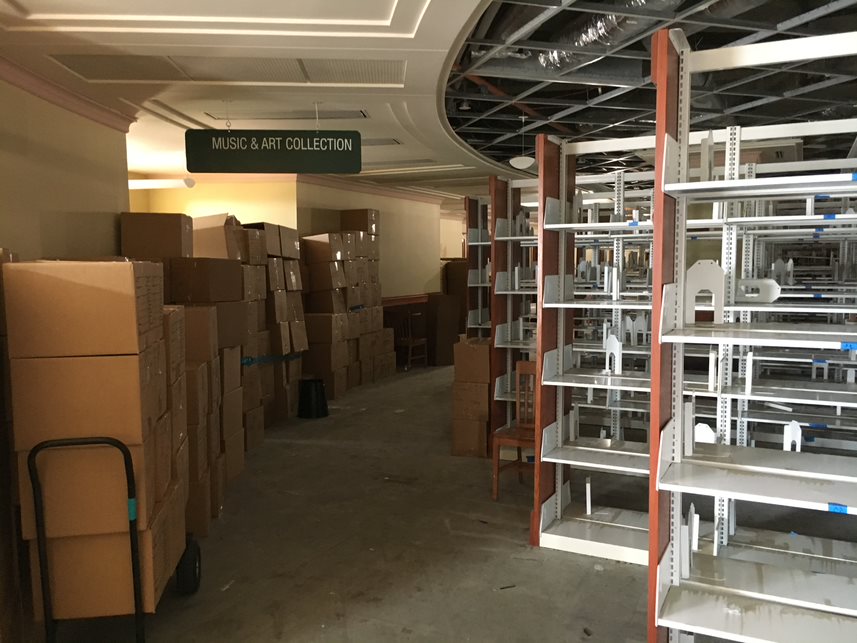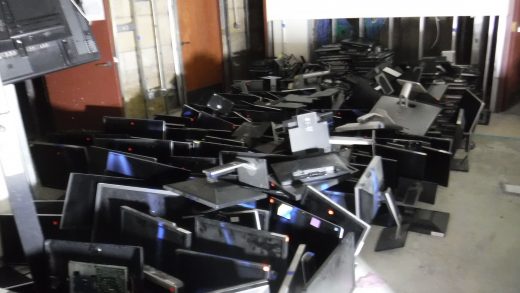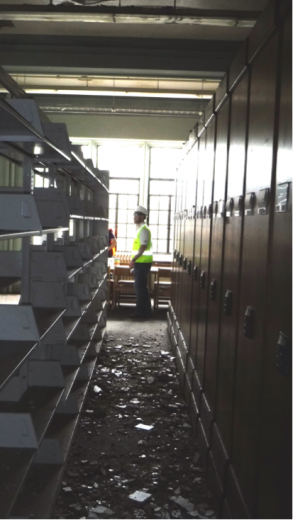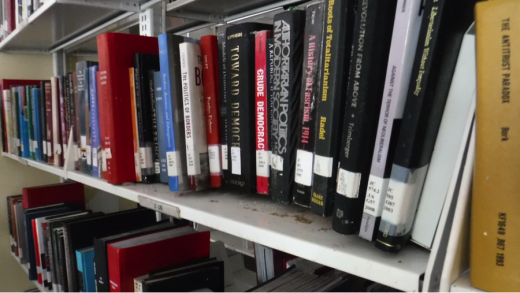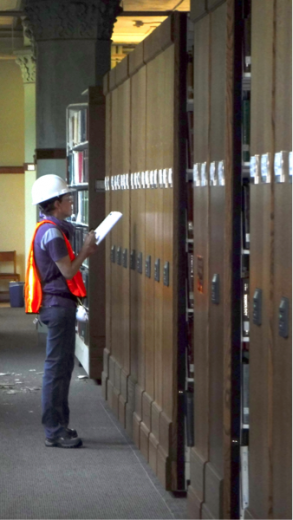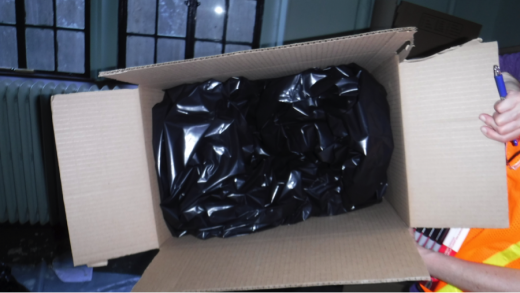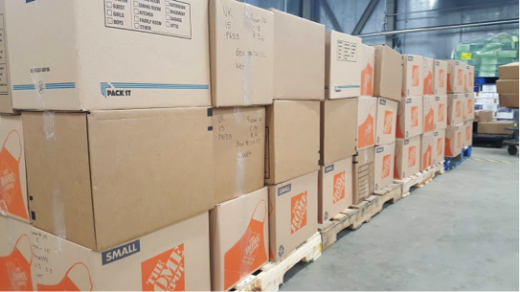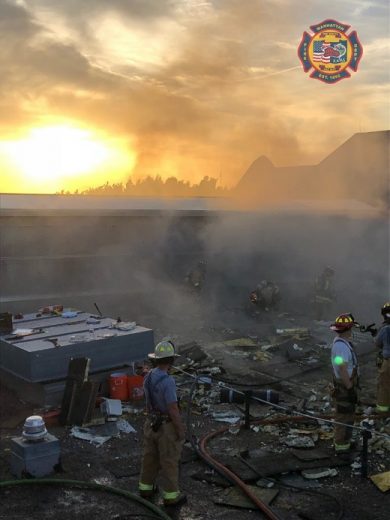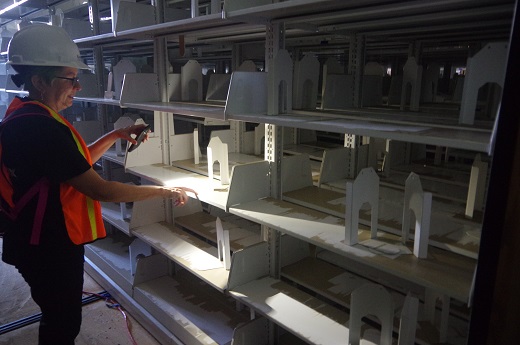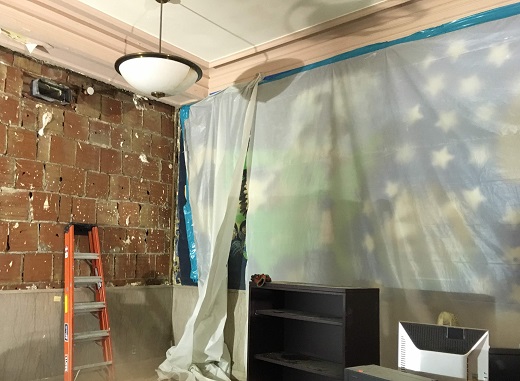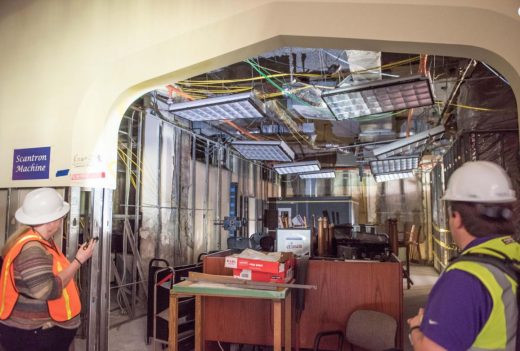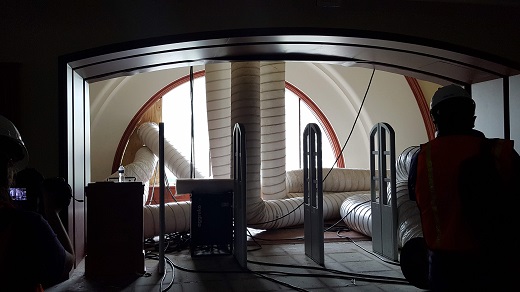As we walk across campus, we’re often stopped by fellow K-Staters and asked, “So how are you all doing?” Truly, we’ve appreciated the expressions of concern for the 100+ displaced Hale Library folks.
On that note, we thought we’d catch up with four of our co-workers who share a combined 80 years of experience with K-State Libraries.
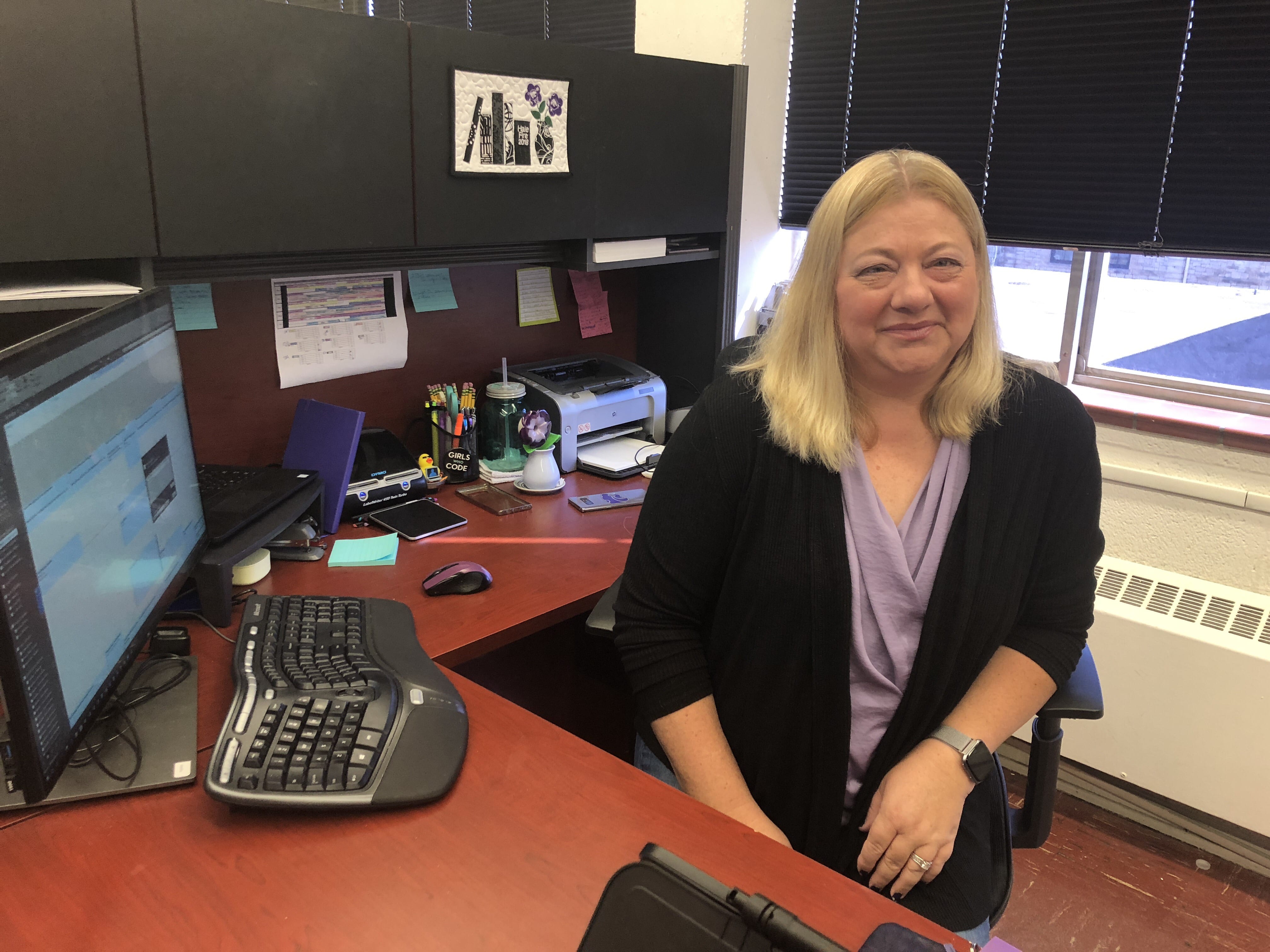
After all of the computers and printers were lost in the fire, Renee Gates was responsible for getting more than 90 employees set up with new technology. She and her team also travel between a dozen different buildings on campus to make sure everything continues to work smoothly.
Renee, two of the four staff members on your team left Manhattan to pursue new job opportunities this summer. How are you doing?
“Everybody has been really nice and patient with us. They understand we are short-staffed.
In addition to getting everyone set up on new technology, we’re doing a lot of inventory of the tech that was in an area of Hale Library that was declared clean or cleanable. Everything has to be plugged in and tested to make sure it works. Some things don’t because of internal issues like the effects of condensation.
After the fire, I think in many ways our department had it a lot easier than other people. We had the most to do initially, but we were connected, we knew what was going on, and we had purpose. I think there was a lot more anxiety for people who weren’t as busy as we were. So that busyness helped get us through.
I love that we have space in Seaton Hall that is just our LIST staff and we can easily talk to each other without disturbing anyone else. I miss everybody from the library, though.”

Dan, what do you remember about the day of the fire?
“I was in my office, and my 15-year-old son was with me because he was out early that day and doing homework on a computer. We had this history in Hale Library that the fire alarms were sensitive to dust. One summer it seemed like a fire alarm went off every week. So the alarm goes off and it’s like, ‘Eh, okay, well… it’s the end of the day.’ So I scooped up my stuff. And I remember thinking so clearly, ‘Do I need my laptop tonight? Nah, I’ll get it in the morning,’ and I left it and we went home.
An hour later, I’m hearing from people, ‘Did you see the fire?’ And I was like, ‘There was an actual fire?!’ I went back, and people were hanging around outside. Somebody had ordered pizza, and we watched sheets of water cascade down the side of the building and into Mid-Campus Drive.”
What’s different about your job since you aren’t working out of Hale Library?
“A couple of librarians and I have gotten office spaces within our respective disciplines, so I am in in Nichols Hall with the Theater Department. I’ve tried to become more entrenched with their faculty and students, and that’s been great. I see them every day, and it’s very easy for them to find me and for me to be a resource for them because I’m physically there right now.
The thing I miss most are the collections, though. For example, theater is very practice-based. A lot of it is producing creative works based off of scripts and physical materials. While there are some fantastic online resources, it’s left a hole for my students when they go looking for scripts. You really want something physical in your hands for that, even when you’re trying to select scenes.”
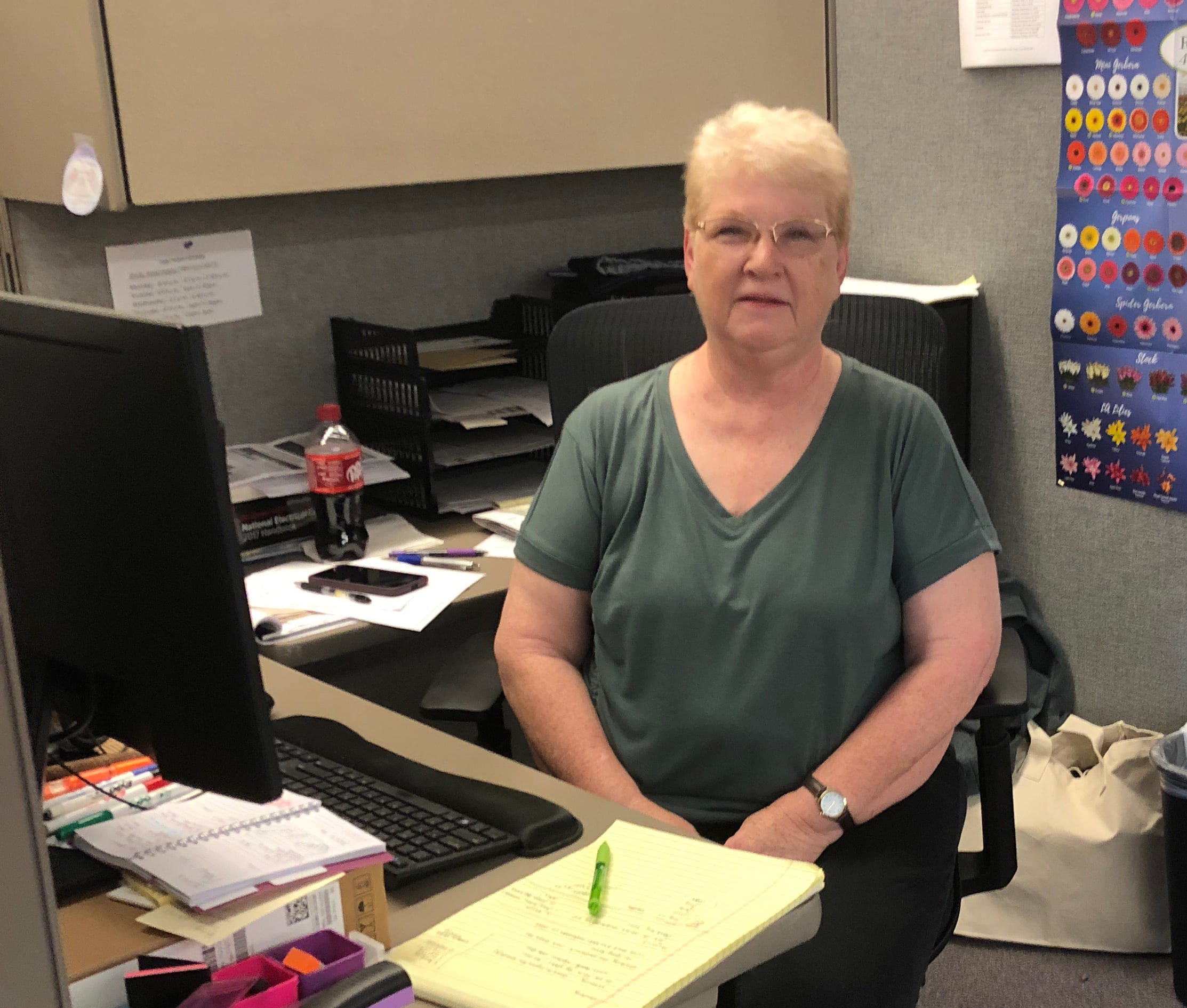
How has your job changed?
“Part of our work is to make sure that when a K-Stater is off-campus that they can access all of the databases and online resources that the Libraries pay for by simply signing in with their K-State username and password.
The proxy system that makes that happen seamlessly was lost when the servers had to be taken offline after the fire. Fortunately, the Libraries’ IT department had been preparing to move the system to the cloud, so they were able to have up a new version within just a few days. Once it was rebuilt, our team spent the summer making sure that the new proxy system was working for hundreds of online resources. These materials are especially important now since the physical collection isn’t available. We’ve been very, very busy.”
This isn’t your first time working out of the Unger Complex, is it?
“Three of us were located in this exact same office when Hale Library was being built in the ’90s. Everyone here has been really friendly and helpful, and whatever we need they try to make it happen. It’s just kind of weird déjà vu!”
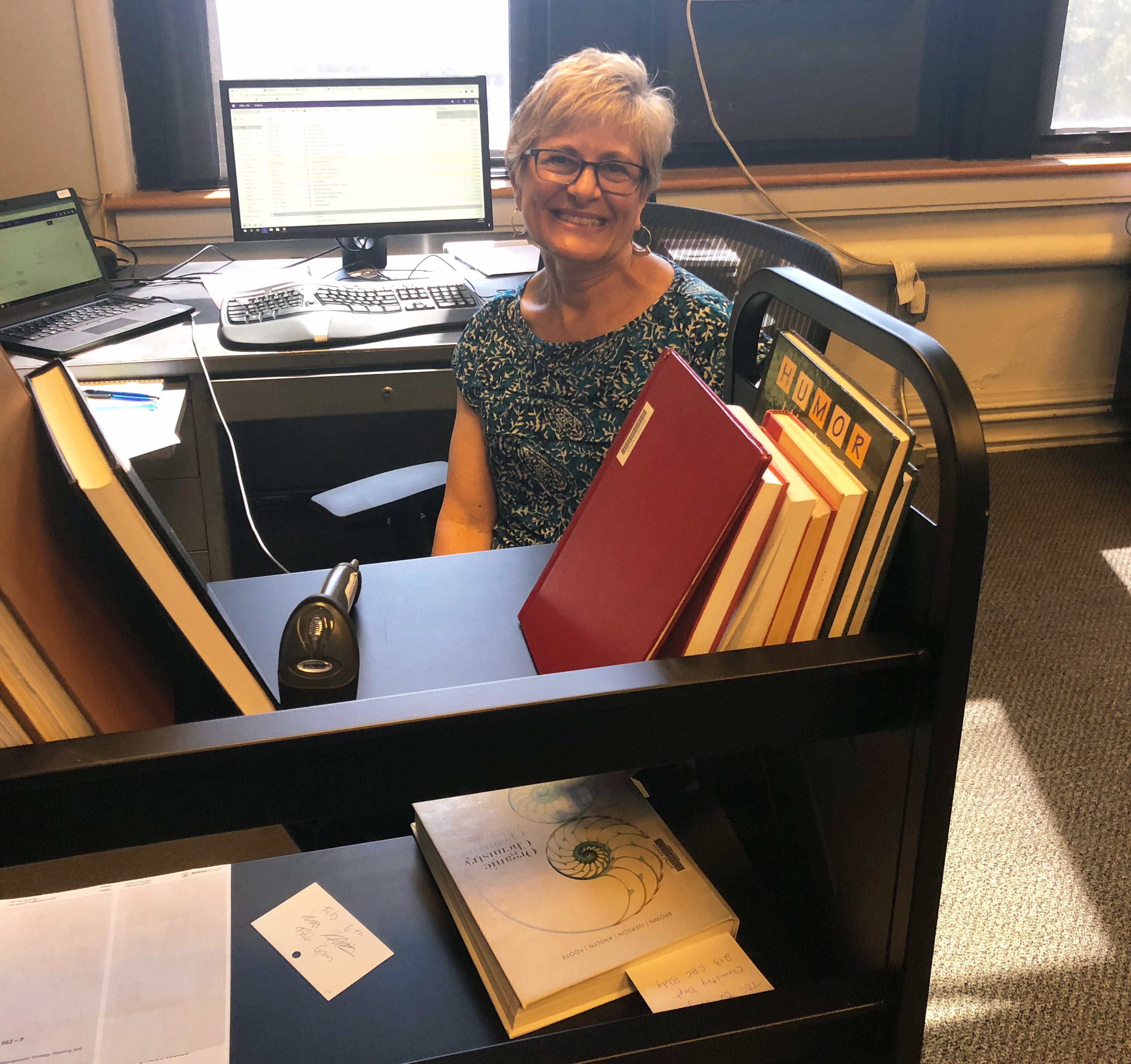
What do you remember from the day of the fire?
“The fire alarm went off at 3:58, and we just thought it was a normal fire alarm, so I picked up my purse and went to my exercise class. When we got out, we could smell smoke and hear the sirens. People were going ‘Yeah, the library is on fire.’ Then I got home and had all these messages on my answering machine, asking if I was okay.
After the fire, I emailed each patron that had anything checked out. What was great was that a lot of people emailed back, and they were so supportive. That was the really nice thing: I had a lot of personal contact with patrons on email.”
How is life different now?
“I miss seeing all of the people that I worked with on a daily basis. I mean, I still go over to the union and see people but it’s different. I miss walking around in the stacks, seeing the actual books and seeing the students. I am excited about seeing the new Hale Library, though! I’m close to retiring, so this gives me a new reason to work long enough to see what the new Hale is going to look like.”
Like Carolyn, we are all excited to see what the future of Hale Library holds. We’re reminded, too, that libraries aren’t just about buildings—they’re about the people who work there, the people who use them and the people who believe in their value.
We know our blog readers fall into one or all of those categories. Thank you!
Interviews were conducted and transcribed by communication student employee Rebekah Branch. Transcriptions were edited for clarity and brevity.


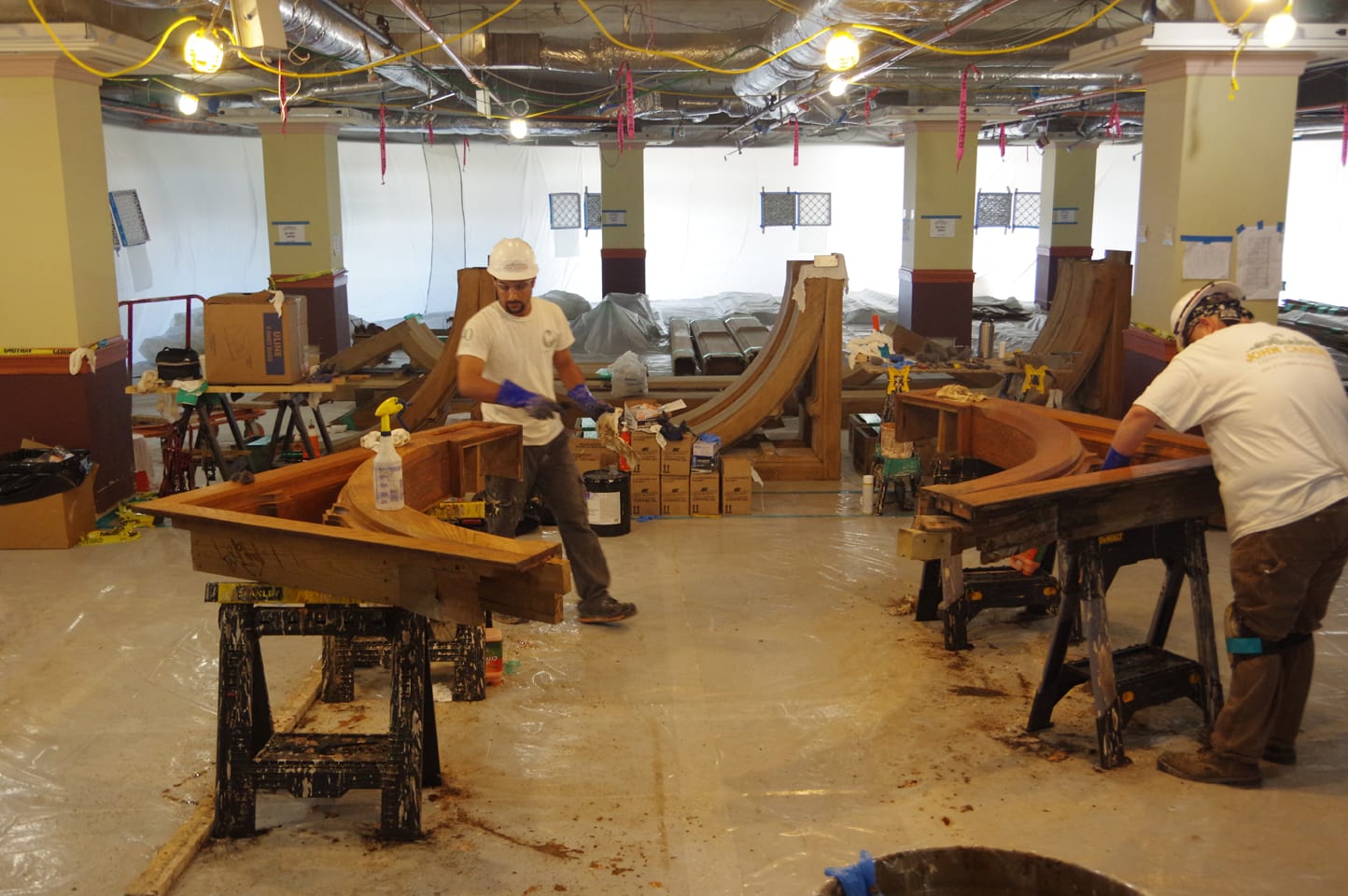 Crew members from John Canning Co. clean and remove varnish from two decorative arch braces that hung in the Great Room.
Crew members from John Canning Co. clean and remove varnish from two decorative arch braces that hung in the Great Room. 